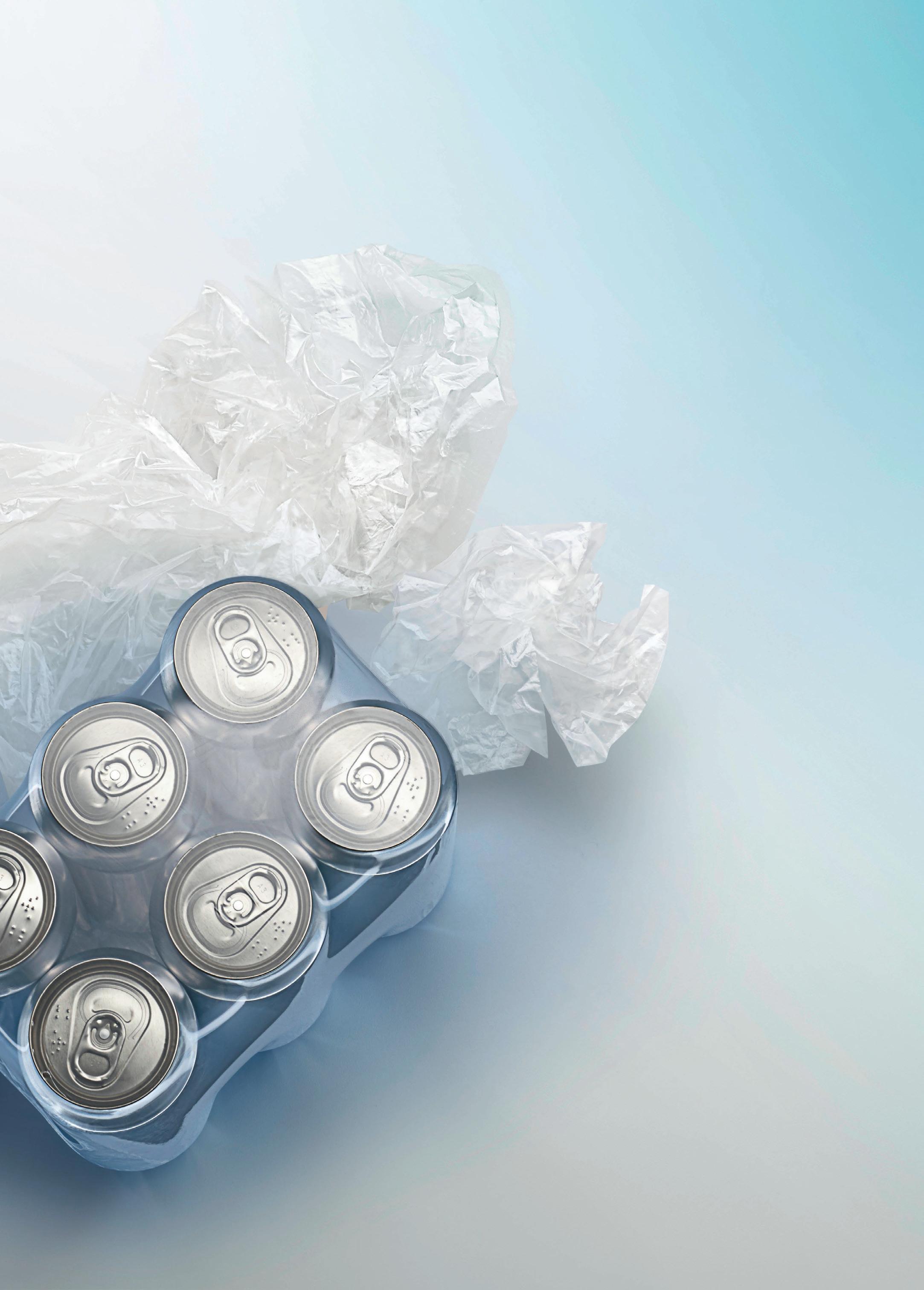
DRINK UP THE LATEST BEVERAGE TRENDS













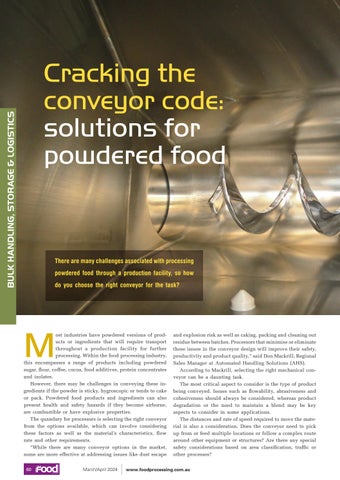















B2B tea, coffee and extracts supplier Finlays has predicted the top five trends the beverage industry should be preparing for in 2024, as part of its annual Global Beverage Trends Report.
Sian Edwards, Directory Strategy & Insights at Finlays, said, “The beverage industry shows no sign of slowing down. Health, sustainability and the thirst for innovation continue to be driving forces behind category development and high rates of launch activity. Our top trends for this year highlight the need for beverage operators to tune into consumers and be highly reactive to their needs. More than ever, working with trusted partners who can provide support for innovation is vital to accessing these high growth opportunities.”
Finlay’s top global beverage trends for 2024 are:
Often driving by social media and influencers, the ‘fad’ trend cycle represents the rapid rise and fall of popular trends, such as viral coffee concoctions to wellness ingredients. These trends are embraced by consumers quickly, and they move on just as quickly. For beverage companies, this presents both opportunities and challenges as companies must be ready to innovate and adapt to ever-changing consumer preferences.
Consumers’ attitudes to health and personal wellbeing have been revolutionised by technology and data offering customised health solutions. Individuals now have access to insights and recommendations tailored to their needs, from personalised nutrition plans to fitness routines and optimising mental performance.
In the beverage sector, consumers can receive personalised tea blends and coffee roasts, using data-driven recommendations to meet their health goals. This empowers individuals to prioritise a holistic approach to their wellbeing, incorporating
healthy beverages into their routines in place of traditional tablet-based supplements.
This trend will see purchasing decisions influenced by consumers’ personal identities and values as shoppers seek products that align with their self-image and beliefs. Individuals opt for artisanal, locally sourced coffees to showcase their support for sustainability and small-scale producers. To cater to this trend, brands must focus on authenticity, sustainability and individual expression.
In the beverage industry, simplified customer payment processes are gaining momentum. Coffee shops are using mobile apps to allow customers to order and pay in advance to reduce wait times and consumers can get craft beer and specialty coffee delivered to their door via subscription services.
It is no longer just the quality of a product that will win a brand the edge over its competitors, it’s also the speed and convenience of its delivery. By adopting innovative solutions that reduce spending friction for consumers, brands can stay ahead.
In today’s consumer landscape, brands must adopt proactive sustainability strategies that reflect increasingly green customer demands. This has shifted from merely reducing climate impact to having zero impact or promoting regeneration/carbon negative. Collaborating with suppliers that offer full supply chain transparency is crucial to understanding environmental impacts, gaining consumer trust and promoting environmental causes. To resonate with today’s consumers, it is essential to effectively communicate ethical credentials and encompass charitable initiatives and transparent metrics such as carbon output.

















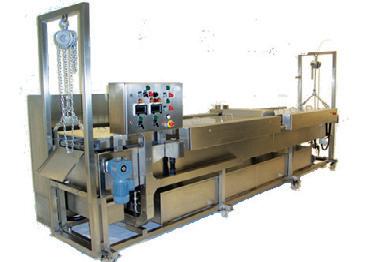


















The ACCC is conducting an inquiry into Australia’s supermarket sector, including the pricing practices of the supermarkets and the relationship between wholesale, farm gate and retail prices.
The inquiry will examine the nature of the competitive environment between supermarkets as well as any barriers to greater competition and new entries.

The inquiry will also examine competition in the supermarket sector and how it has changed since the ACCC’s last inquiry in 2008.
“We believe we are well placed to conduct this broad-ranging inquiry and will bring to bear our expertise in competition, consumer law, agriculture and the supermarket sector in particular,” ACCC Deputy Chair Mick Keogh said.
Any emerging issues related to more recent trends, including online shopping, changes in technology and loyalty programs, will also be examined.
An interim report will be provided to the Australian Government later this year, and the final report is due to be provided early next year.
The ACCC will publish the formal direction from the Australian Government, including the terms of reference, when it has been received.

v2food has acquired Soulara, an Australian plant-based ready-made meals brand. The acquisition is set to expand v2food's product portfolio and broaden its distribution reach via its proprietary ecommerce channel.
Soulara’s fresh plant-based products are designed to meet the evolving preferences of Australian consumers, complementing v2food’s plant-based meat products with its vegetable-based offerings.
Tim York, v2food CEO, said the company is excited to unite with Soulara and assist consumers in their meat reduction efforts.
v2food has also expanded its portfolio to include MACROS, a fitness-focused, ready-made healthy meals brand.
Both MACROS and Soulara will be integrated into v2food under an entity called Flexitarian Meal Solutions.
Nestlé Vietnam has announced a US$100 million (AU$150m) investment to increase the production capacity of its Tri An coffee factory, located in the Ðong Nai province. This will help the company meet growing demand for its coffee.
The factory currently exports coffee products from brands such as Nescafé, Nescafé Dolce Gusto and Starbucks, to over 29 countries around the world. Since 2011, Nestlé has invested more than US$500 million (AU$750m) in this facility.
Vietnam is currently the world's second-largest producer and exporter of coffee and an important coffee origin for Nestlé. The company is claimed to be the largest coffee buyer in the country, with annual purchases reaching up to US$700m (AU$1bn).
Nestlé currently has six factories in Vietnam to produce coffee, cocoa malt beverages, cooking aids and water. The company has been present in Vietnam for nearly three decades, currently employing around 3000 people.

ARYZTA will be constructing a bakery facility in Perth, Western Australia. The new development will expand on the Swissowned company’s global bakery network, currently comprising 19 bakeries across Europe and a further seven operations in countries across Asia–Pacific.
The $66m facility will be strategically located 60 km south of the Perth CBD at the Peel Business Park — Nambeelup Kaadadjan — in Stake Hill, WA.
Once construction starts, the facility is expected to take approximately two years to complete and will adopt the latest industrial bakery technology, including advanced Al-driven quality assurance, robotics, storage and monitoring systems for ingredient quality and biosecurity.
ARYZTA AG Chair and Interim CEO Urs Jordi said, “Australia is an attractive growth market for bakery products and this expansion in Perth will allow ARYZTA to produce fresh and frozen products as opposed to shipping frozen only over long distances from our plants in eastern Australia.”
existing two facilities in New South Wales and Victoria. The availability of high-quality local raw materials for bakery such as flour, dairy and sugar in Australia will also minimise food miles and further enhance sustainability.
The facility will also be powered by a local renewable microgrid which sources its energy from a solar and battery storage system.
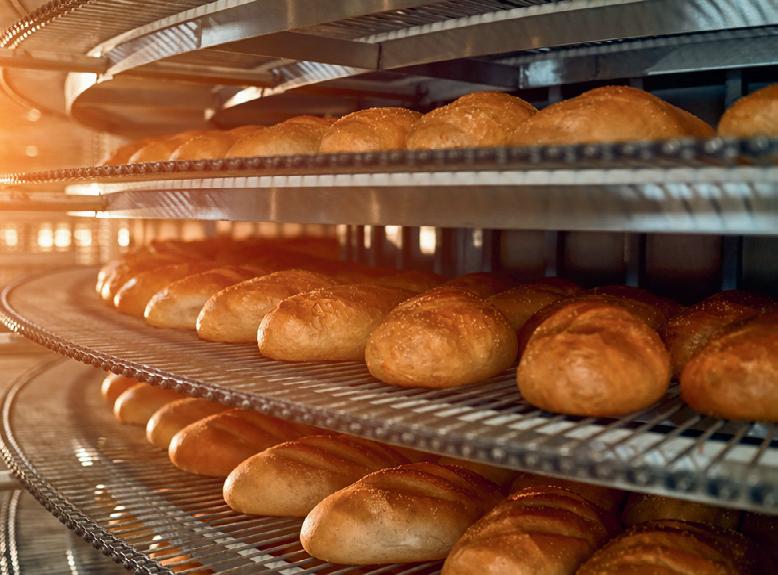
The development is expected to lower the company’s carbon footprint by over 700 tonnes of CO2 annually by removing around 1.7 million food miles that are currently involved in transporting bakery items to WA customers from ARYZTA’s
The WA Government has been actively developing the agribusiness and food and beverage manufacturing sector in the Peel region, through its $49 million Transform Peel project and Food Innovation Precinct WA. The Swiss-owned company will be a foundation agrifood tenant in the Park.
“It is exciting to see the Transform Peel vision come to life, particularly with a significant international agribusiness choosing to establish its first Western Australian presence in the Peel region,” said WA Regional Development Minister Don Punch.
“Operationally, the bakery development will improve WA’s domestic food processing capability, enabling local production of baked goods that would otherwise be imported into WA.
“The creation of new jobs and training opportunities with the arrival of this new facility is a positive outcome for the region.”
SICK and Endress+Hauser have signed a memorandum of understanding for a strategic partnership.
The goal of the partnership is to expand the Endress+Hauser product range with process analysis and gas flow measurement engineering from SICK. The two companies intend to establish a joint venture for the production and further development of SICK process technology.
The companies say the process technology offerings from both complement each other. In the past, the companies have frequently worked together on an order, project and customer basis.
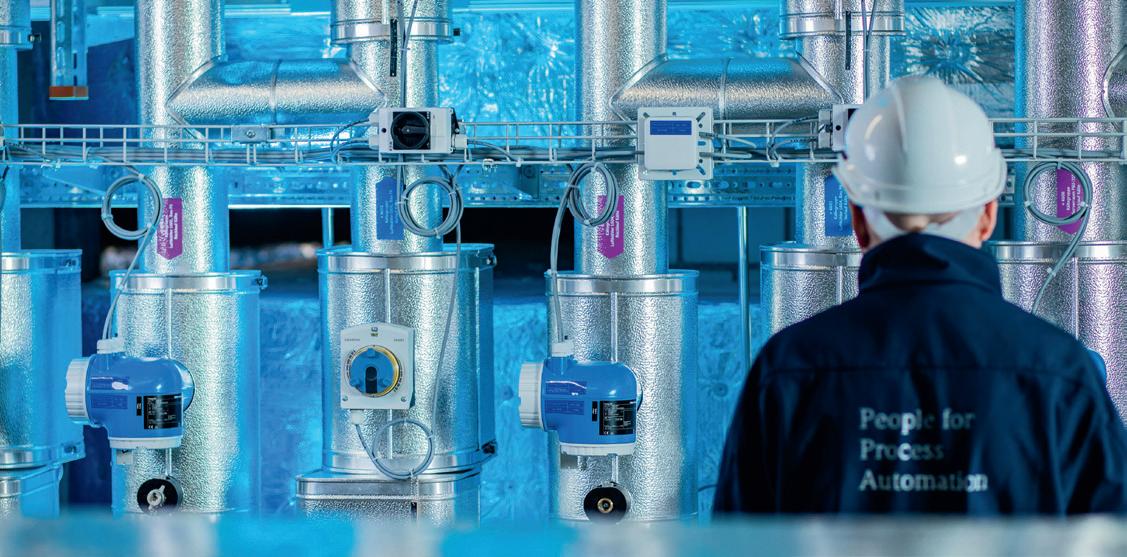
Both shareholder families, as well as the respective supervisory bodies of SICK and Endress+Hauser, are backing the planned strategic partnership. The contract is expected to be signed before the end of the first quarter of 2024.
“Our strategic partnership is about mutual benefits at many levels,” said Matthias Altendorf, CEO of the Endress+Hauser Group.
Dr Mats Gökstorp, Chairman of the Executive Board at SICK, said: “Through this strategic partnership, Endress+Hauser and SICK will break new ground. The impulse and source of momentum for this undertaking is the dynamic market environment for process automation, produced by the progressive decarbonisation of industry.”

TasFoods has announced that its 100%-owned subsidiary Nichols Hatchery Pty Ltd has completed an agreement to acquire the business and assets of Redbank Poultry, a chicken broiler and breeder facility located in North-West Tasmania.
Following TasFoods’ expansion into the pet treats segment, this latest acquisition will be designed to expand its successful poultry business by securing the poultry supply chain and developing a vertically integrated poultry operation.
The purchase price was reported as $1.25m for plant and equipment and associated assets plus $1.1m for the final valuation of inventory at completion. TasFoods has also entered into a 5-year lease (with three 5-year extension options) for the growing sheds and associated infrastructure.
TasFoods has reported that the funding for the acquisition will primarily come from the sale of the Betta Milk/Meander Valley Dairy


Food Standards Australia New Zealand (FSANZ) has called for submissions on an application to increase the maximum energy level for machines generating X-rays to irradiate food.
Dr Sandra Cuthbert, FSANZ CEO, said the proposed amendment is technologically justified as it increases the efficiency of generating X-rays for food quality and safety purposes.
“FSANZ evaluations of food irradiation have all concluded that there are no safety concerns associated with irradiation of food at the approved absorbed doses,” Cuthbert said.
There is no change to the permitted absorbed dose for each food due to this application.
“FSANZ found no potential public health and safety concerns with the consumption of food irradiated with 7.5 MeV X-rays at the approved dose levels when using tantalum or gold as the X-ray target material,” Cuthbert said.
According to Cuthbert, safety assessments are a key part of the approval process for the irradiation of foods.
Submissions close at 6 pm (AEDT) 15 March 2024.
ofi (olam food ingredients) has opened the first phase of its dairy processing plant located in Tokoroa, which is in the Waikato region of the north island of New Zealand. The facility is designed to produce ingredients such as whole milk powder to meet the growing demand for applications in dessert, bakery, beverage and confectionery categories.
The first milk powder was produced at the new Tokoroa plant in August and the first overseas shipment of whole milk powder was exported in September.
The Tokoroa dairy ingredients forms part of ofi’s wider natural ingredients portfolio that includes cocoa, coffee, nuts and spices, combinations with dairy for customised products such as yoghurts, protein bars and ready-to-drink tea, coffee and cocoa beverages.
The next stage of investment will see capability added to the facility to develop high-value dairy ingredients. This will help to expand ofi’s range and enable it to look at ways to grow the value of its milk.
The new facility will also help address its customers’ innovation, traceability and sustainable souring requirements, engaging those who wish to secure ingredients from New Zealand’s milk pool.
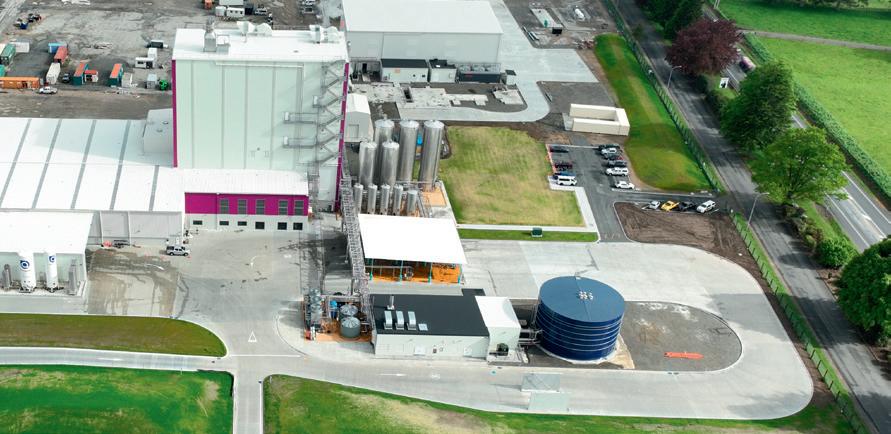
A biomass boiler fuelled by sustainably sourced wood residue expected to be commissioned in Q1 ’24 will power the plant enabling milk processing to be energy-efficient.
The New Zealand team has grown from two to around 60 people, with 80% from Tokoroa.




Cadbury has signed a deal with Amcor to source approximately 1000 tonnes of post-consumer recycled plastic to wrap its core chocolate range.
In 2020, Cadbury announced it had sourced 30% of the plastic needed to wrap its 160 to 185 g Cadbury Dairy Milk family blocks produced in Australia from recycled materials. With its latest purchase, Cadbury aims to use 50% recycled plastic for its wrappers across its chocolate blocks, bars and pieces range produced in Australia. This will be equivalent to halving its virgin plastic needs to wrap those products.
The rollout of recycled material is expected to begin in the first quarter of 2024, starting with blocks and expanding into bar lines such as Cherry Ripe, Crunchie and Twirl, as well as Roses and Favourites.
The announcement comes shortly after Mondelez International shared its longer-term vision to recycle plastic waste on home soil, partnering with Amcor to invest in Licella to fund the construction of a soft plastic advanced recycling facility. This facility, managed by Advanced Recycling Victoria (ARV), is scheduled for completion in 2025 and will process around 20,000 tonnes per annum of end-of-life plastic, with plans to scale up to 120,000 tonnes per annum.
Mondele - z International Australia, New Zealand and Japan President Darren O’Brien said, “Reducing virgin plastic use and supporting a circular packaging economy is a focus for our business and this latest deal to purchase recycled plastic is another important step in our journey. By creating confidence in the market for recycled material, we’re helping to build a future for plastic recycling in this country.”
Mike Cash, Amcor Flexibles Asia Pacific President, said, “We partnered with Mondele - z International when they made the first step to move to recycled content for their Cadbury Dairy Milk family blocks packaging; now we’re helping them elevate this ambition by sourcing 1000 tonnes of recycled plastic to help reduce virgin material across more of the Cadbury chocolate portfolio.
“Being able to source this significant volume of recycled material for Mondele - z International gives them the opportunity to differentiate and grow and demonstrates the collective commitment of Mondele - z International’s leadership.”


Chobani Australia has released sustainability-focused packaging for its Gippsland Dairy 160 g products, reducing the plastic per unit by almost half.
The removal of the product’s lid is part of Chobani’s commitment to the Australian Packaging Covenant Organisation (APCO) and the 2025 National Packaging Targets, including to reduce unnecessary or problematic plastics, following the earlier removal of the embedded plastic spoon in 2023.
With all Gippsland Dairy 160 g products transitioning to the new packaging, Chobani is set to remove 95,000 kg plastic from its businesses in 2024 and reduce greenhouse gas emissions associated with sourcing and transporting lids and spoons through its supply chain and to retailers.
The transformation of the product’s packaging is a key milestone in the company’s progress against the 2025 Targets, which form a crucial part of its sustainable packaging roadmap.
Tim Browne, Chobani’s General Manager ESG & General Counsel, said, “Our commitment to sustainability is an ongoing journey — one that demands time, effort and an unwavering dedication to continuous improvement.
“We’ve worked closely with our industry partners to explore innovative approaches to deliver on our commitment in line with the nationally recognised industry targets.
“We’re really proud of this important milestone. As we implement our sustainable packaging roadmap, we hope to make even greater strides towards similar packaging innovations and a more sustainable future.”
APCO CEO Chris Foley, said, “It’s small but impactful changes like this that we need to see more of in the very near future. 2025 is creeping up and we’re delighted to see Chobani on track to deliver on their commitment to the 2025 Targets.”
Available from February 2024, the new packaging design maintains the ‘pot’ look and feel by replicating the former black lid through the product’s artwork. The pot will now feature a black band around the circumference of the top, emulating the lid to ensure the product can be spotted on the shelf.


Aresearch team from the Leibniz Institute for Food Systems Biology at the Technical University of Munich has solved the mystery of a novel clovelike off-flavour in orange juice, the cause of which was previously unknown. The study proves for the first time that the undesirable flavour note is due to the odorant 5-vinylguaiacol. As the results of the study show, the substance is mainly produced during the pasteurisation process when residues of a cleaning agent react with a natural orange juice component under the influence of heat.
This is not the first time the orange juice industry has had to contend with clove odour. So far, 4-vinylguaiacol has been considered the main cause of this undesirable flavour note, which is particularly abundant in orange juices that have been stored for a long time. The quantitative determination of this odorant has therefore long been an established part of routine quality controls.
However, according to Eva Bauersachs, a PhD student at the Leibniz Institute in Freising and first author of the study, there have been recent reports of orange juice samples that had a pronounced clove odour and low concentrations of 4-vinylguaiacol. “We therefore asked ourselves which other odorants contribute to this undesirable off-flavour,” Bauersachs said.
To investigate this, the research group, led by Martin Steinhaus, head of the Food Metabolome Chemistry research group at the Leibniz Institute, carried out investigations to identify odorants that cause the off-flavour and their origins. The research was in cooperation with the Professorship of Functional
Phytometabolomics and the Chair of Food Chemistry and Molecular Sensory Science at the Technical University of Munich.
Using techniques such as gas chromatography-olfactometry and aroma extract dilution analysis, the team was able to identify 5-vinylguaiacol as the source of the off-flavour. Compared to 4-vinylguaiacol, it even proved to be more odour-active in five out of six commercially available orange juices with a clove-like off-flavour.
Further studies suggested that 5-vinylguaiacol is formed during pasteurisation, when the orange juice component hesperidin reacts with peracetic acid, which is commonly used as a cleaning agent for cleaning-in-place (CIP) in the fruit juice industry.
“Inadequate rinsing of the machines after the CIP process could therefore have led to contamination of the orange juice with peracetic acid and caused the formation of 5-vinylguaiacol during further processing,” Steinhaus said. Based on the new scientific findings, the team recommends that orange juice processing companies should no longer use peracetic acid as a cleaning agent.
There are other odorants that may be the cause of off-flavours in orange juice, for example, heating orange juice may produce cabbage-like smell dimethyl sulfide. Prolonged storage of the juice can also lead to chemical reactions that produce α-terpineol, which smells like turpentine. This odorant is formed under the influence of acid from the compounds limonene and linalool, which are present in high concentrations in orange juice. Oxidation reactions during storage may also lead to the formation of (S)-carvone from limonene, which smells like caraway.

HRS Heat Exchangers’ R&D partnership showcases the latest thermal food and drink technologies and allows for fruitful customer trials.

For the last 20 years, HRS Heat Exchangers has forged a close working partnership with Spain’s National Technological Centre for the Food and Canning Industry — Centro Tecnológico National de la Conserva y Alimentación (CTNC) — a private, not-for-profit research association that works with a wide range of organisations and companies on private, national and international food and beverage development projects. Now, this alliance has been further cemented with the installation of a new pilot aseptic filling plant from HRS, giving customers and researchers the chance to test the performance of different heat exchanger types when developing new food and drink products, to achieve the best outcome for their project.
Located in the heart of Europe’s fruit growing region, CTNC’s facilities at Molina de Segura are just 10 minutes away from HRS Heat Exchangers’ Spanish office and manufacturing facilities in Murcia. It provides the ideal conditions for HRS and its clients to benefit from the CTNC testing and technology services, which includes laboratories covering microbiology, instrumentation, packaging, physical and chemical quality control, food safety, and water and environment testing.
Established in 1962 as part of the University of Murcia, the CTNC now has its own facilities and operates as an inde-
pendent public utility. Its particular focus on food, environment and the circular economy fits perfectly with the areas in which HRS works.
A variety of HRS equipment, including corrugated tube and scraped surface heat exchangers, and an HRS Asepticblock treatment and packing system, is in use within the CTNC technological area, for researchers and HRS customers alike to use.
In practice, this means that clients can access the facilities at the CTNC to test how their products will perform with different heat exchangers (as well as microwave heating), so that they and HRS engineering staff can choose the best heat exchanger option for their requirements.
Presentación García Gomez, Head of the Technological Area at the CTNC, explained: “This region of Spain is home to a high volume of fruit producers, as well as primary and secondary processors, so there is significant demand from companies wanting to trial new products or processes on the new aseptic pilot plant from HRS. There is no other pilot plant like this in Spain, and we currently have around 15 companies on the waiting list, looking to either develop new food and drink products or move from conventional heat treatment to aseptic packing.”

The rise of aseptic packaging
Traditionally, hot filling of food and drink products sterilises the container as the product (which is still hot from cooking or sterilising) is filled. However, the temperatures required often have unwanted effects on the quality of the product, and the heat imposes restrictions on the type of container which can be used: for example, hot filling of lightweight plastic drinks bottles can lead to distortion of the plastic.
Because of this, cold aseptic filling has become a common technique with drinks manufacturers for products including UHT milk, fruit juices, and sports and energy drinks. Its flexibility means that it is suitable for a wide range of products from fresh fruit dices and purees to marinades and dairy products.
The HRS Asepticblock pilot plant installed at the CTNC is a special trial version of the standard HRS Asepticblock Series of skid-mounted, self-contained pasteuriser/steriliser systems with integrated aseptic filler. The unit at the CTNC features a balance tank and a deaerator (to prevent oxidisation), and a product pump. The product goes through a pre-heating stage, followed by a choice of heat treatments (heating or cooling) which are chosen via a control panel. The available options include heat exchangers (corrugated tubular, MI multitube

and DTA double tube along with the HRS R Series scraped surface) and a microwave heating unit. Because of the benefits of HRS clients being able to use the technology, HRS Heat Exchangers supplied the unit at cost to the CTNC.
“Our customers can use the pilot plant when developing new projects, for proof of concept. They can then determine which type of heat exchanger works best for which product,” explained Paco Hernandez, Food Business Director for HRS Heat Exchangers. “As the CTNC is a research centre, there is also the potential to handle new and upcoming products, placing us at the forefront of new trends in the food processing sectors. In addition, the CTNC demonstrates our technologies and the efficiency of our equipment, increasing awareness of our brand and potentially introducing us to new markets and clients.”
Partnering with the CTNC also gives HRS access to a variety of different types of products and materials that they might not otherwise have access to. This enables them to test their heat exchangers and systems with a wider range of materials, each with different textures, viscosities and thermal properties. It also means that HRS can analyse new materials from customers and clients that they may not have worked with before (such as sludges generated by environmental applications), helping to further their capabilities.
Presentación García Gomez added, “At the CTNC, we are at the forefront of food technology, witnessing the latest trends such as improvements in sustainability and moves to digitalisation. We have received European funding for research into sustainable food production, including better use of raw materials, energy and water, and making better use of waste and by-products. We are also at the vanguard of the move towards more plant-based products and new sources of protein to avoid the use of animal products. Fermented beverages, such as kombucha, are another trend we are seeing, and these are also aseptically processed.”
CO-RO, Danish fruit-based beverage and home-freeze ice lolly producer, has a chosen a complete juice mixing plant from Alfa Laval for its new processing unit in Frederikssund, Denmark.
In 2024, CO-RO will begin construction on its new plant and warehouse at its main production site in Frederikssund, where it has operated since 1967. Called One Plant, the new facility will be designed to bring everything under one roof to make its production more flexible, modern and efficient, primed to meet the future needs of the company’s partners and customers. The plant will also be a major stepping stone towards more sustainable production for the food manufacturer.
The company’s core product is a concentrated juice compound used for fruit-based drinks and home-freeze ice lollies. The concentrate is made at the Frederikssund facility and then sent to one of its bottling plants around the world. They then add water and other ingredients, and package it for the local markets.
“We are very pleased to have entered into this agreement with Alfa Laval, which demonstrates our commitment to excellence as we integrate cutting-edge process equipment from Alfa Laval into our new plant. Alfa Laval’s dedication to quality and sustainable solutions aligns with our vision of having an efficient, high-quality production set-up fit for the future,” said Søren Holm Jensen, CEO in CO-RO.
“We are witnessing concerns amongst food and beverage producers over resource depletion and a need to increase yields with lowest possible energy consumption,” said Lars Dithmer, President Business Unit Food Systems at Alfa Laval. “I am very happy to see that the sustainability aspects of our solutions with respect to energy and resource efficiency are key to this collaboration.”
Alfa Laval will deliver the complete juice mixing plant for CO-RO in early 2025.
Alfa Laval Pty Ltd
www.alfalaval.com.au


Dairy, plant-based and beverage producers often struggle with product fouling or build-up during UHT processing. The vessel is designed to help and, in turn, increase efficiency and system performance.
UHT infusion systems process many products, including dairy (milk, cream and ice cream), plant-based beverages (soy, oat and almond drinks) and specialised nutrition foods (liquid meals, protein drinks and infant formula).
Instead of the traditional clamp connection, the seamless connection links the vessel bottom and pump housing in UHT infusion systems without a sealing gasket and is designed to have better water-cooling on the pump casing and impeller. This results in no product build-up and decreased product loss. With less fouling, there are fewer stoppages for CIP (cleaning-in-place).
Systems have been shown to have 20% longer running time using the Seamless Infusion Vessel. That’s an estimated 100 additional production hours and approximately 1.3 million more litres of milk produced yearly for a 12,000 L/h plant.
In a plant that can produce 12,000 L/h, this can mean 30 fewer CIP cycles per year, which can help to lower product waste, energy, water and detergent consumption.
iStock.com/~UserGI15966731


Rack
Rack




Delegates at the International Fresh Produce Association Australian and New Zealand’s (IFPA A-NZ) second annual Food Safety Summit heard that Australian and New Zealand fresh produce growers must consider safe food practices a necessary step in the cost of doing business, and an insurance policy against outbreaks.
IFPA A-NZ Head of Food Safety Dean Mahoney and Natalie Dyenson, United States-based IFPA Chief Food Safety and Regulatory Officer, were among the speakers to address growers, packers, retailers, peak industry representatives, researchers and food regulators at the summit, which was held in Melbourne on 12 December 2023.
Key topics included an overview of the global food safety landscape; upcoming changes to production and processing standards for berries, melons and leafy vegetables due for implementation on 12 February 2025; and how the IFPA A-NZ can support growers on food safety.
The changes to the Food Standards Code gazetted by the federal government in 2022 will see horticulture included as a responsibility for state and territory regulators, according to Mahoney.
With some confusion about what the standards mean for the berry, melon and leafy vegetables sectors, the summit was an opportunity for Food Standards Australia New Zealand (FSANZ) and Safe Food Production Queensland (SFPQ) to address concerns and outline how food safety is approached differently in individual states and territories.
“The regulations are not that onerous. The general view is that if producers are already meeting stringent supermarket standards, they will meet the new regulations. However, there’s much work to be done by the regulators, including first registering growers and packers,” Mahoney said.
According to Dyenson, the safety of Australia and New Zealand’s food supply chain is equivalent to that of the world’s leading nations, including the United States and parts of Europe.
Food safety is, however, a constantly evolving area and producers need to be ready for what could go wrong, Mahoney said.
“There are 4.86 million cases of foodborne illnesses in Australia each year, which has a pretty staggering $2.8 billion burden

Food Safety Summit 2023 speakers included Fresh Produce Safety Centre Chair Dr Andreas Klieber, the University of Tasmania’s Professor Tom Ross, IFPA Chief Food Dafety and Regulatory Officer Natalie Dyenson, Safe Food Production
Queensland Chief Executive Officer Jim Dodds and FSANZ Food Safety Officer Mark Rullo.
on the medical system. Life-limiting illnesses can be caused by Salmonella, Listeria, Campylobacter and E. coli in the food chain and can come out of nowhere. The industry needs to do all it can to protect consumers — at every step along the supply chain.
“Australians generally trust the food supply chain. However, they also have long memories, and an outbreak can affect their perception of a fresh produce line well after the issue has been rectified.”
Dyenson and Mahoney said pressure points for food outbreaks include climate change causing extreme events, labour shortages, rising costs of transportation, access to safe water and soil amendments.
“There’s the added pressure around the need for fresh produce growers to be sustainable. Packaging is a big one — it’s functional, protects against contamination and aims to reduce food waste, but is not always sustainable. Finding an intersection between food safety and sustainability is a challenge,” Mahoney said.
He said the next decade will see the emergence of new pathogens causing foodborne illnesses, yet there will also be better diagnostics such as genome sequencing to detect the cause of outbreaks.
“In the food industry, you can run but you can’t hide. There is hardly a product that cannot be affected by Salmonella or Listeria. Growers often don’t think of themselves as part of the food supply chain, but they need to. The IFPA A-NZ can help, and we urge growers to take advantage of our services and resources including webinars, newsletters and workshops,” Mahoney said.
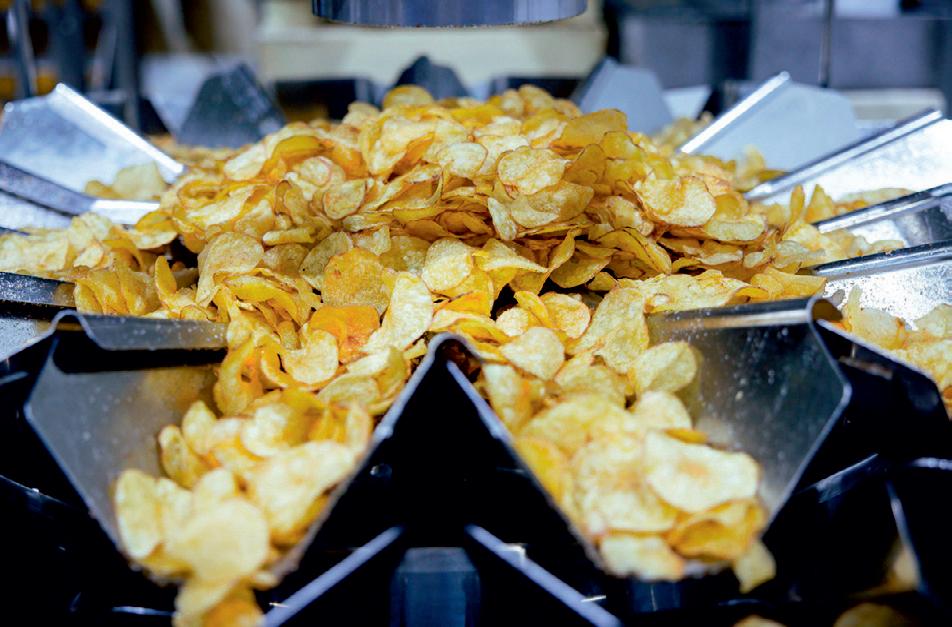
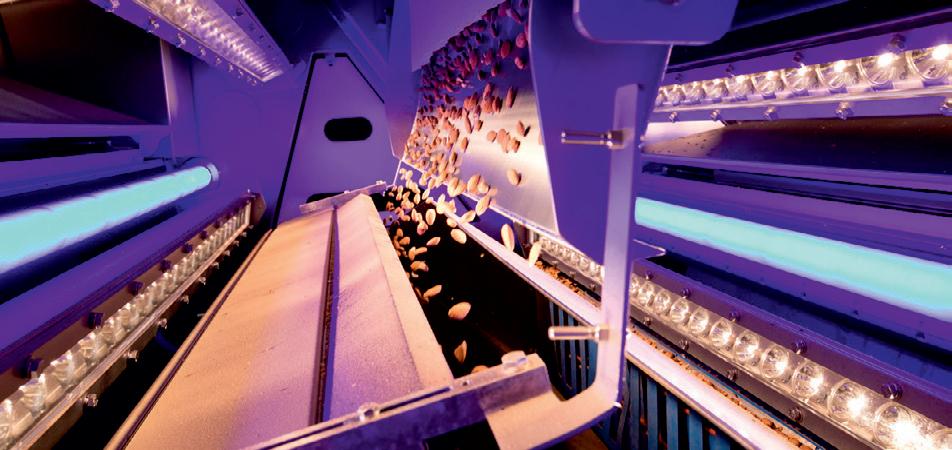





Tucker’s Natural, a South Australian family-owned artisan baked snack producer, has become the first food and beverage company in Australia to track and measure its supply chain emissions using Siemens’ Sigreen platform.
The Sigreen pilot that Siemens launched in South Australia earlier this year in collaboration with Food South Australia (Food SA) and the South Australian Department for Industry, Innovation and Science, has now been completed.
Using Sigreen and working closely with the Siemens team for over three months, Tucker’s Natural was able to track verifiable Product Carbon Footprint (PCF) data across its supply chain.
Sam Tucker, Founder and Managing Director of Tucker’s Natural, said the pilot enabled the company to make progress towards its net zero commitments and Responsible Sourcing Program.
“Put simply — we can’t reach net zero without tracking supply chain emissions. Siemens Sigreen has enabled us to do this in a way that provides verifiable data. The results have been invaluable,” Tucker said.
Tucker’s Natural was founded on the principle of producing ‘better for you’ baked snack products that are high quality, natural, sustainable and made with locally sourced ingredients.
The Sigreen pilot has given Tucker’s Natural an opportunity to engage with its supply chain on a product level and quantify the CO2 contribution of individual components and suppliers, enabling a crosscompany effort towards decarbonisation, carbon reduction and net zero targets.
“The challenges we faced in collecting this data goes to show that many businesses in Australia haven’t started on this journey yet. The
major supermarkets have set aggressive emissions reduction targets, and I am really pleased that Tucker’s Natural, because of the pilot, is in a position to help them now,” Tucker said.
Having gone through the exercise with one product line, the company will now be able to scale and replicate the measurements for its other products, thus providing transparency about the emissions that have been generated in the production and delivery of each product.
“The pilot has supported our family business by providing access to the latest global technology helping accelerate sustainability goals,” Tucker said.
Milan Bawa, General Manager of Factory Automation at Siemens Australia and New Zealand said, “It has been great to work with a company like Tucker’s Natural who are strongly committed to business and environmental sustainability and keen to make a difference in future. The pilot has proven that PCF tracking is a critical step for companies of all sizes aiming to address net zero.
“Siemens began its journey in South Australia in 1872 with the Overland Telegraph — a technological breakthrough which opened communication links with the state and the world. It feels very natural to continue that pioneering spirit in South Australia with the latest digital and software tools to help the F&B sector reach net zero. We believe that digitalisation is the key to accelerating sustainability. Australia contributes around 1% of the world’s total greenhouse gas emissions and that’s what net zero is trying to address. However, we could do so much more,” Bawa said.
Using innovative technologies, Sigreen makes it possible to exchange emission data along the supply chain — from sourcing raw materials and packaging right through to the end product.

With the LW2720 level sensor, levels of liquid media in tanks with a height of up to 10 m can be monitored, without blind areas. The non-contact radar measuring principle is designed to prevent malfunctions or failures of the sensor caused by the adhesion of viscous media or damage from agitators.
The 80 GHz frequency used is designed to ensure stable and precise measurement results, even in the presence of steam or condensate in the tank. The sensor is designed for use in hygienic areas, so that even CIP and SIP processes or the use of spray balls do not impair its proper functioning.
Other features include: sensor installation only takes a few minutes; sensor parameters can be conveniently set and read out remotely via IO-Link; and maintenance-free operation.
ifm efector pty ltd
www.ifm.com/au



EDWARDS VACUUM nEDC300 mono claw vacuum pumps can be used in a wide range of applications, such as water and wastewater treatment, thermoforming, vacuum conveying, food processing or in medical systems.
The claw pump features stainless steel rotors as well as a durable stator coating to safeguard its process wetted parts and ensure effective contaminant handling.
The modular design of the pump makes it easier to service. A separate, insulated pump element also makes the inside of the pump easily accessible to users for maintenance, repairs and cleaning.
Along with higher pumping speed, the silencer has undergone a redesign to achieve reduced noise levels while preserving optimal vacuum performance.
The new silencer also helps in improved airflow, helping in lowering the internal pump temperature. This extends service life of the lip seal and prevents oil leak risks.
Edwards Australia
www.edwardsvacuum.com

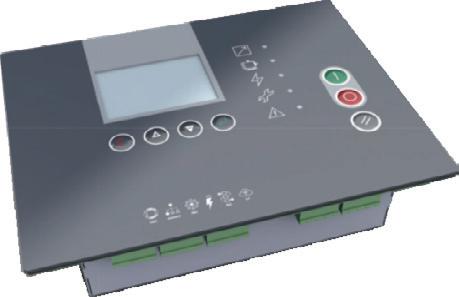



The new generation PSENslock 2 brings a host of new features for efficient process guarding, even in rugged environmental conditions. It offers a maximum holding force of either 1000 or 2000 N. With protection type IP67/IP6K9K, PSENslock 2 is insensitive to dust and water. The more hygienic design prevents dust and dirt deposits. Special versions with stainless steel components are also available for more hygiene-critical applications in the packaging industry.
For applications that require safe guard locking for personnel protection, there is a version available that monitors the holding force. Usable up to PL c, Cat. 2, this version enables a holding force of 1000 N.
Whether separately or in series, PSENslock 2 can be used universally for safety gate guarding. PSENslock 2 offers protection for hygiene-critical applications such as those in the packaging, food and beverage or pharmaceutical industries. Extended diagnostic options are available in combination with the intelligent diagnostic system SDD, increasing availability.
For simple operation, the safety locking device PSENslock 2 can be combined with the control unit PITgatebox — also with optional integrated access permission. In conjunction with the configurable safe small controller PNOZmulti 2, safety gates are protected with a single system. Safety Device Diagnostics (SDD) also provide comprehensive diagnostic and status information.
The PSENslock 2 offers diagnostics via 4 LEDs on both sides that enable direct status indication. It can be adapted to individual requirements through adjustable latching force via configuration key “Config Key”. The safety outputs (OSSDs) on the safety locking device switch independently from the guard locking status and enable greater flexibility when implementing applications.
Pilz Australia Industrial Automation LP www.pilz.com.au

The CRE pump is a versatile, inline multi-stage pump with a built-in variable-speed drive, which is suitable for various applications. It adjusts pump performance to match current conditions and desired pressure, temperature or flow, and is available in a range of sizes. It is suitable for water supply, cleaning, treatment, mining and more.
Grundfos Pumps Pty Ltd www.grundfos.com






In a blind taste test, recently published in the Journal of Food Science, 25% reduced-sugar chocolates made with oat flour were rated equally, and in some cases preferred, to regular chocolate. The findings could provide a new option for decreasing chocolate’s sugar content while maintaining its texture and flavour.
“We were able to show that there is a range in which you can manage a sizable reduction in added sugar and people won’t notice and don’t care, in terms of liking,” said John Hayes, professor of food science at Penn State and corresponding author on the study. “We’re never going to make chocolate healthy, because it’s an indulgence, but we can successfully take out some of the sugar for consumers who are trying to reduce their intake of added sugars.”
Hayes explained that chocolate is about half sugar by weight, with the rest being fat and cocoa solids, so reducing the amount of sugar by any amount can alter the texture and flavour profile of the chocolate.
notice,” said Gregory Ziegler, distinguished professor of food science at Penn State and co-author on the study.
Ziegler had the idea of testing two different grains, rice and oats, which contain fine granular starches as replacements for sugar in chocolate. The end result would still contain carbs, which eventually break down into sugar, but the speed of absorption may be slower.

“The function of sugar in chocolate is both sweetness and bulking, so if we take that sugar out, we have to put something else in that will do the job just as well, or consumers will
“Starch is still a carbohydrate, so it’s not lower calories, but there is an overall reduction in the added sugar content, which has potential health benefits,” Ziegler said.
The team conducted two different blind taste tests using dark chocolate made with varying levels of sugars and grain flour.
“Our results suggest we can cut back 25% of added sugar to chocolate, effectively reducing the total sugar by 13.5%, if we substitute oat flour,” said Kai Kai Ma, a doctoral candidate in food science at Penn State and co-author on the paper. “That addition of oat flour is unlikely to meaningfully impact consumer acceptability, which is great news.”
The researchers are hoping the oat flour findings will spur on the creation of new varieties of sugar-reduced chocolates.
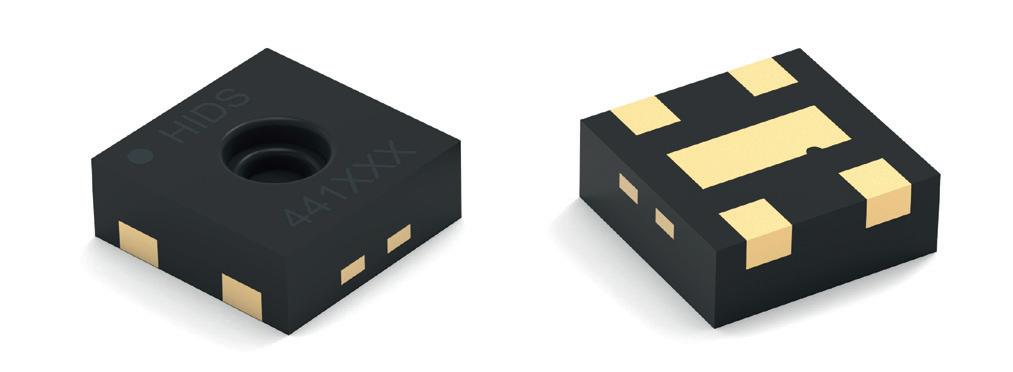
Würth Elektronik is launching a compact digital humidity sensor in the WSEN-HIDS series. The MEMS (MicroElectro-Mechanical System) sensor measures with a precision of ±1.8% RH in the 20–80% relative humidity range. The DFN (Dual Flat No Leads) package for SMT assembly measures just 1.5 x 1.5 x 0.5 mm. The sensor works with a current of 0.4 µA and can be operated with a power supply between 1.08 and 3.6 V. It is suitable for distributed IoT sensor networks, such as those in smart farming applications.
The humidity sensor uses a dielectric polymer that interacts with water molecules to adjust the permeability of the capacitor structure depending on the relative humidity of the surroundings. A temperature sensor is also included. Using the integrated analog-digital converter, the momentary temperature as well as the humidity information can be transmitted as 16-bit measurement data directly to conventional microcontrollers via an I²C interface. The heater (also included) with three selectable heating levels can be switched on temporarily as required, so the sensor works under demanding ambient conditions and the measurement is not falsified by condensation.
The Würth Elektronik humidity sensor is versatile — from air-conditioning equipment to data loggers in the food industry, to smart buildings, vertical farming and other applications that require precise environmental control. To support rapid prototyping, the sensor is part of the FeatherWing sensor and the IoT Development Kit from Würth Elektronik.
Würth Elektronik eiSos GmbH & Co. KG www.we-online.de

Researchers have gained a better understanding about how pathogens may survive in fruit packing plants — the findings may lead to changes in cleaning protocols at food processing plants.
When ingested, Listeria monocytogenes can be deadly to those with weakened immune systems, as well as pregnant women, the elderly and infants.
While L. monocytogenes can be killed using heat processing, this kill step isn’t always possible with minimally processed fresh produce that is consumed raw. As a result, much research has been conducted to develop detection technologies and find pre-harvest control strategies to prevent produce contamination. However, L. monocytogenes may still also survive and persist in food processing environments due to formation of biofilms that co-exists in these environments. Now, Penn State researchers may have gained a better understanding about how L. monocytogenes can survive and persist in fruit-packing plants by evading and surviving sanitisers.
According to their study, which is now available online and will be published in the June issue of the journal Biofilm, biofilms — comprising otherwise harmless microorganisms that attach to each other and the food surface — result in a kind of shield that surrounds and protects the Listeria. The findings may result in changes to sanitation protocols in foodprocessing facilities, which the researchers believe could help to diminish contamination of food with Listeria
“We found two groups of microorganisms in the tree fruit packing environments, Pseudomonadaceae and Xanthomonadaceae, that are very good at forming biofilms and protecting Listeria monocytogenes,” said corresponding author Jasna Kovac, the Lester Earl and Veronica Casida Career Development Professor of Food Safety. “Biofilms represent a physical barrier that reduces the effective diffusion and antimicrobial action of sanitisers and is hypothesised to increase L. monocytogenes’ tolerance to sanitisers used in food processing facilities.”
As a result of the biofilms shielding the pathogen, the sanitisers are not as effective in killing Listeria monocytogenes, explained Laura Rolon, who recently earned her doctorate from Penn State and spearheaded the study.
“Our research suggests that if packing facilities are having a recurring problem with Listeria monocytogenes, they may need to assess whether biofilm-forming microorganisms are causing it,” she said.
This study’s results indicate a need to assess the efficacy of commonly used sanitisers against non-pathogenic biofilmforming microorganisms commonly found in the food processing environments to prevent biofilms from establishing, Kovac explained. The results of further assessments could help inform practical recommendations for the industry, such as application concentrations and times, to prevent biofilm formation and improve the control of Listeria monocytogenes in these environments.
In future workshops and short courses, Penn State Extension educators will communicate the research findings to professional organisations dedicated to sanitation in food-processing facilities, noted study co-author Luke LaBorde, professor of food science and extension specialist.
“The findings of this research project will inform and enhance sanitation protocols and extension training efforts targeted at the tree-fruit industry to effectively control L. monocytogenes,” said LaBorde, an expert in the tracking of Listeria monocytogenes in produce production and processing environments.
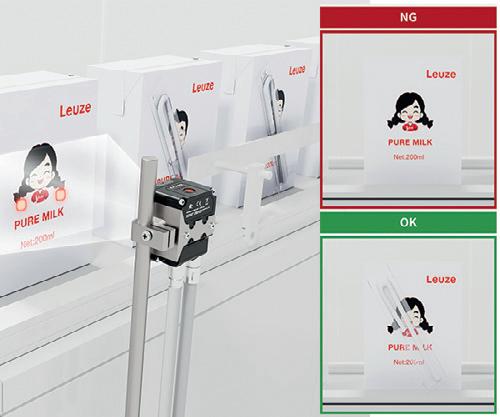
Correct printing of the ‘best before’ date or batch number, presence of labels and accessory parts on packaging are aspects which are relevant in quality checking during packaging processes. Simple optical sensors often reach their limits here; however, large camera systems are complex and require expert knowledge to operate.
The IVS 108 Simple Vision sensor is an easy-to-operate, image-processing sensor that is designed to help solve detection tasks encountered in packaging processes.
The sensor is easy to set up and put into operation. It can be set up using the teach button, or using the web-based, graphical user interface which visually guides users through a set-up menu with four input tasks.
Typical areas of application are food and beverages, pharmaceuticals and cosmetics, processing and packaging machines, filling systems and intralogistics. The sensor is also suitable for transport, sorting and handling systems, quality control and the automatic mounting of mechanical or electronic parts.
The IVS 108 is a user-friendly and low-cost device both for detecting accessory parts and for image transfer. It is easy to set up and delivers good inspection results. For example, with drink cartons, it can check for the presence of a drinking straw attached to the packaging. It can also use the fault images for optimisation of the production processes.
Leuze electronic Pty Ltd www.leuze.com.au
Canopy hoods are designed to collect and exhaust corrosive vapours, heat, steam and odours. They are available in 36, 48, 72 and 96 ″ widths, in Wall or Island models. Canopy hoods are available in either moulded chemical resistant flame-retardant one-piece composite resin, or fabricated or welded type 304 stainless steel. Wall canopy hoods include a wall mounting kit. Island canopy hoods have an optional suspended mounting kit available. Additionally, custom size canopy hoods can be manufactured to exact size and design requirements.
Corner canopy hoods can maximise wasted space in corner areas and can either be wall mounted or suspended from the ceiling. Optional corner composite work surface and corner tables are available. With any of the canopy hoods, vapour-proof lights, switches, and side and rear enclosure panels are offered to prevent cross drafts and further improve airflow while providing a way to contain chemical spills. Exhaust blowers, ducting and inline HEPA or carbon filters can be engineered to meet ventilation requirements.
HEMCO Corporation
www.hemcocorp.com

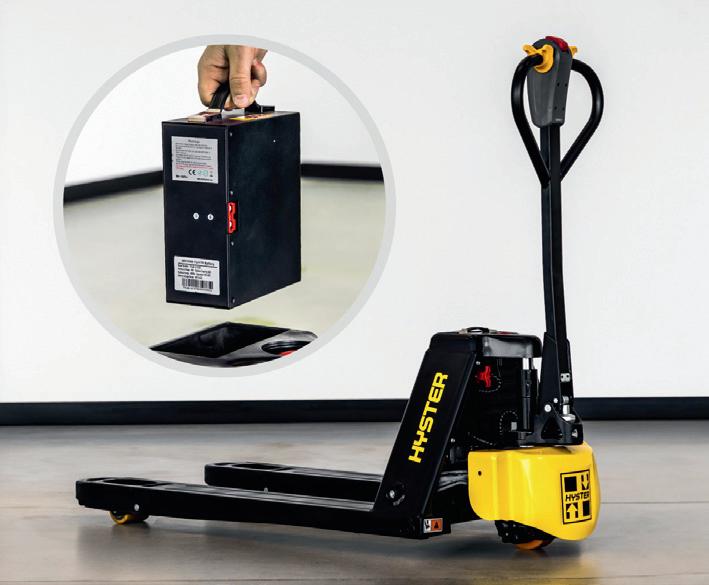
The Hyster PC1.5 lithium-ion powered pallet truck is designed to offer improved efficiency, reduced operator strain and good cost of ownership.
The compact and lightweight pallet truck has minimal maintenance requirements. Designed to work at three times the intensity of a manual hand pallet truck and with a battery changeover time of 6 seconds, it is suitable for continuous operations.
The series is built with several smart features to maximise productivity including: powered travel, lifting and lowering; optional large battery with three-hour fast charging; and a recharge alert.
Designed to be tough enough to stand up to day-to-day operational challenges, it has both rigid structure and a simple design for fast, efficient service. It also features maintenance-free components, such as a brushless drive motor and lithium-ion battery; a durable steel frame and protective cover; a 60-second drive wheel replacement; and an emergency reverse ‘belly’ button.
Adapt-A-Lift Group www.adaptalift.com.au


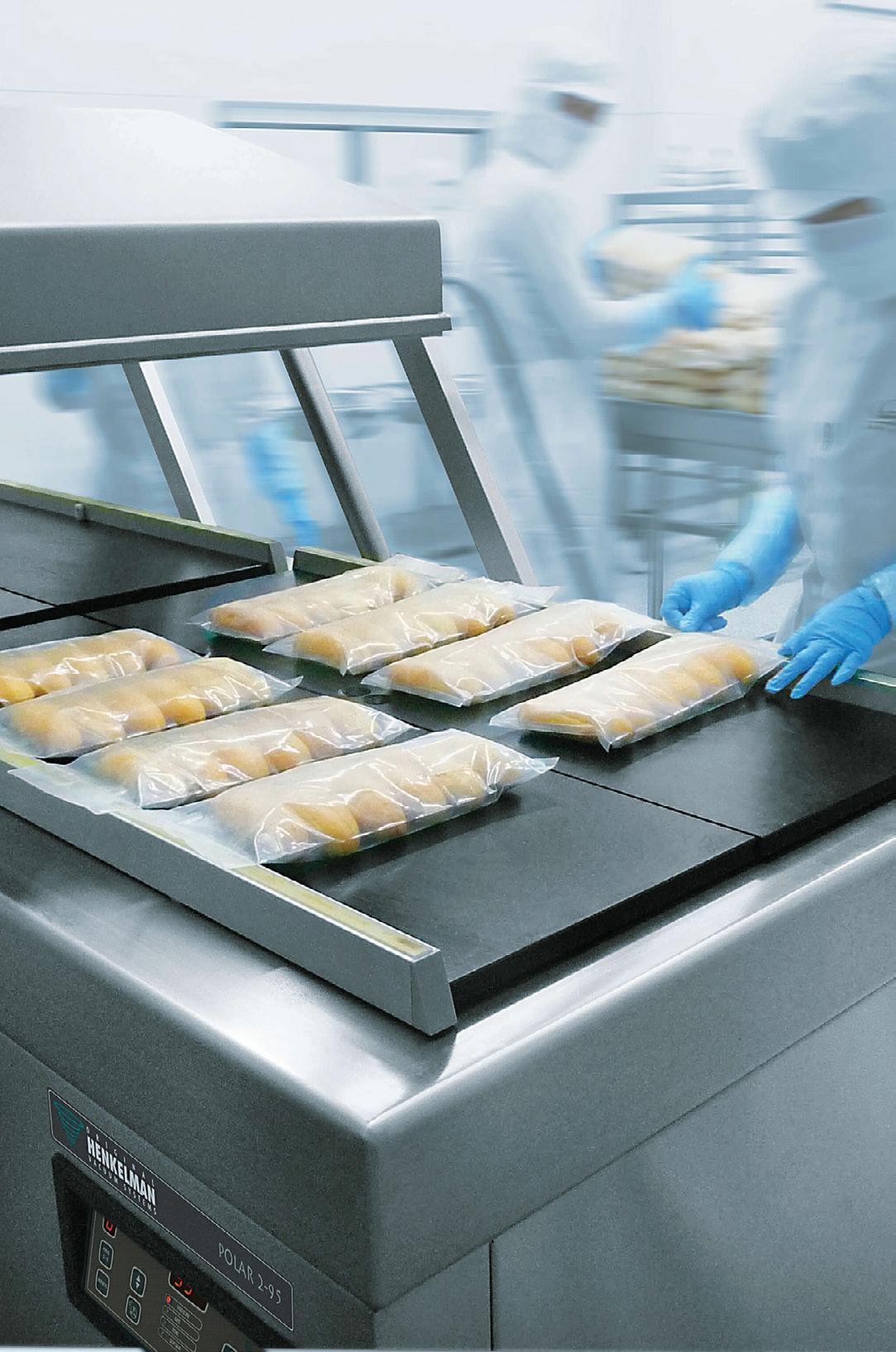

The ThermoView TV30 series from Fluke Process Instruments now has two thermal camera options: an edge sensor for standalone operation and a GigE version for advanced PC-based analysis.
The infrared cameras for fixed installation enable 24/7 thermal monitoring of processes and assets. They identify temperature anomalies and send alerts, allowing plant staff to rectify any problems early on and avoid poor quality output and damage to products and equipment.
The standalone version with onboard analytics and remote setup via web browser needs no PC in the field to automatically monitor up to 32 values for user-specified areas of interest (AOI) and criteria (max/min, average, spot temperature, standard deviation).
The GigE version enables direct communication between programmers and the camera using standard applications like LabVIEW or MATLAB or the proprietary ThermoView software. It connects to a shopfloor or control-room PC and can stream thermal images at up to 60 fps. The ThermoView software provides an extensive array of features and functions for all typical industrial temperature monitoring and documentation needs. It supports an unlimited number of AOI, trending for those AOI and manual or automated archiving of images as well as measured values for traceability.
The thermal imagers can detect temperatures from -10 to 1300°C. For improved accuracy, users can specify tighter temperature ranges. The imagers feature a rugged, IP67-rated housing. The series also provides a choice of two infrared camera resolution options, three lenses for different fields of view and protective accessories for demanding environments. All versions have good connectivity, with multiple supported protocols for easy integration in plant-level automation systems and computerised maintenance management systems (CMMS).
Fluke Australia Pty Ltd
www.fluke.com.au





Brabender ViscoQuick and Convimeter II measurement technologies are suitable for the snack and confectionery industry.
The Brabender ViscoQuick viscometer is used for characterising chocolate raw materials. It can determine the crystallisation behaviour of raw materials under shear as well as its rheological properties. Key raw materials from chocolate production include cocoa butter, cocoa masses and nut-based masses. Its measurement method carries out starch-based standard measurements in 10 min.
The Convimeter II enables viscosity measurement and process control in the production and development of liquids and pastes. It can therefore be used by the chocolate industry for all liquid or pasty raw materials or intermediate products, as well as measuring biscuit fillings.
Brabender
www.brabender.com/en/
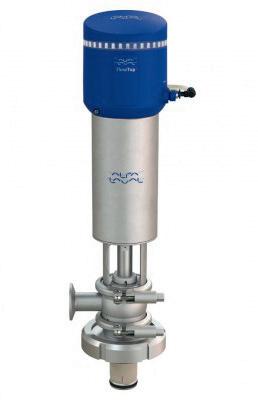
The Alfa Laval Free Rotating Retractor is a high-efficiency retractable cleaning device that can enhance product safety while boosting uptime and productivity.
The cleaning-in-place device remains sealed off from the product area during production, flush with the vessel wall. The spray head slides out, expelling cleaning media in a 310°-up spray pattern across the vessel surface. Upon completion of the cleaning cycle, the spray head retracts and the vessel is production-ready.
The device removes residues from the interior surfaces of hard-to-clean vessels. It complies with FDA, EU and China regulations.
The cleaning device is claimed to deliver up to 35% savings in water, chemicals and time for every CIP cycle compared to conventional static spray ball technology.
Installation, operation and maintenance are simple due to the product’s streamlined construction. To fully automate operation, pair two or more of these cleaning devices and Alfa Laval ThinkTop sensing and control units with an existing CIP system.
Alfa Laval Pty Ltd www.alfalaval.com.au
Grundfos CR XL Vertical Multirange is a centrifugal pump system for food and beverage businesses. The company’s pump system is designed to save users money and optimise efficiency, and reduce energy costs by up to 45%. Features include seamless production, self-cleaning features and remote monitoring.
Grundfos Pumps Pty Ltd www.grundfos.com


For 80 years, Italian food company SAILA (which stands for Italian Liquorice Corporation of Abruzzo — Società Anonima Italiana Liquirizia Abruzzese) has been producing sweets at its historic factory in Silvi Marina, Teramo. The province has a long-held love for licorice which SAILA has been making using a process first adopted by Dominican monks back in the 16th century, but now on an industrial scale. The manufacturer introduced mint-based sweets on its production lines in 1950, which were sold in traditional bags from 1964 and then boxed sweets were launched in 1978.

to be easy to clean and any products contaminated by a foreign object are identified.
Minebea Intec also provided other control and inspection solutions along the entire production line at the factory. Several checkweigher
CoSynus combined model groups (checkweigher and metal detector) were installed in the factory for checking the packaging and ensuring that pre-packaged products conform with Italian Law 690. These weighing machines are then connected to the SPC@Enterprise software, which enables real-time production checks, minimising downtime and improving production performance.
The adopted solution has enabled checks and secure detection of metal contaminants inside the sweets.
iStock.com/Esin Deniz
In order to ensure high-quality standards in the earliest production stages, SAILA decided to use a metal detector to identify the tiniest metal contaminants immediately after the compressor stage, and well before the final packaging of the product.
Minebea Intec created a solution for inspecting the loose sweets using a compact Metalldetektor Vistus/C metal detector that was easy to install in a production line. After the compressor stage, the loose sweets are passed through the metal detector, which has a very small opening for detecting the smallest contaminants. The system is designed

The Essentus checkweigher is designed to ensure that all boxes are filled with right number of packs.
In addition, a final check is also carried out using an Essentus checkweigher, which is designed to ensure that no package leaves the factory with a box of sweets missing.
“Our mission is to monitor the entire production line — from manufacture to delivery — in order to guarantee quality at each step,” said Vincenzo Fusco, Director of the SAILA factory.
“Minebea Intec helped us achieve our objectives right down to the smallest detail.”

In the dynamic landscape of beverage production, streamlined systems for liquid media management are paramount. From pneumatic valves to sophisticated automation systems, ensuring seamless control over pipelines, heaters, and storage tanks is essential for maintaining optimal operations.
Bürkert, a leading name in innovative solutions for the food and beverage industry, presents a game-changing approach with their latest offering: Bürkert Air Cabinet Solutions. Tailored specifically for Australian manufacturers, these cabinets revolutionise installation processes, slashing costs and enhancing efficiency across the board.
Crafted locally by Bürkert Australia, these cabinets arrive ready-to-install, seamlessly integrating pneumatic and electropneumatic control mechanisms into the production line. Built with precision German technology, these cabinets promise reliability and performance at every step.
At the heart of Bürkert Air Cabinet Solutions lies the Bürkert Type 8652 AirLINE valve island, meticulously pre-assembled within an IP66 stainless steel cabinet. This innovative design minimises installation time and effort, with features like digital input feedbacks, air pressure monitoring, and manual overrides ensuring unparalleled control over operations.
Moreover, the Type 8652 AirLINE boasts advanced diagnostic capabilities, allowing

for real-time monitoring and troubleshooting, either locally or remotely. Whether configuring for 8, 12, 16, or 24 stations, these cabinets offer flexibility without compromising on performance.
Bürkert Air Cabinets are available in two configurations to suit varying requirements. The standard 24VDC hardwired solution simplifies wiring with prewired pilot valves, while the industrial Ethernet version facilitates seamless integration into existing networks, supporting a range of protocols for enhanced connectivity.
Constructed from durable 316 stainless steel and equipped with wall mounting brackets, these cabinets are designed for easy installation and long-term reliability. Each unit is meticulously tested and supplied with comprehensive documentation, ensuring hassle-free operation from day one.
In an industry where every penny counts, Bürkert Air Cabinet Solutions offer tangible benefits. By streamlining installation processes and minimising labour requirements, these cabinets significantly reduce overhead costs and improve project timelines.
Furthermore, with the option to integrate digital connectivity via industrial Ethernet, ongoing maintenance becomes more
manageable, further driving down operational expenses over time.
Bürkert’s commitment to excellence extends beyond cabinet solutions. With a diverse portfolio of products and services, including custom configurations tailored to specific needs, Bürkert is poised to address a wide range of challenges within the food and beverage sector.
From small-scale pilot projects to largescale industrial facilities, Bürkert’s expertise and experience ensure that every solution is meticulously crafted to deliver maximum value and performance.
Discover the future of beverage production with Bürkert Air Cabinet Solutions at APPEX, from March 12th to 15th, 2024, at the Melbourne Convention and Exhibition Centre. Don’t miss this opportunity to explore cuttingedge technologies designed to drive efficiency and elevate your operations to new heights.


Steve Burgess, General Manager Europe at tna solutions, looks at how producers can attract health-conscious consumers and debunk the myth that ‘processed’ always means unhealthy.
Processed food has long had a reputation for being the ‘bad boy’ of the grocery aisles, and with consumers evermore focused on their health and wellbeing, there is the potential that these products could sink further. A recent GlobalData report on the ‘Health and Wellness Megatrend’1 highlighted how consumer behaviour is shifting — at the outset of 2022, 66% of global consumers were reported to be always or often influenced by the impact a product or service has on their health and wellbeing.
The food and beverage industry is heading in a healthy direction, driven by consumers seeking out products that align with their aspirations for a healthier lifestyle, and governments too are applying pressure globally to ensure food manufacturers continue to improve the nutritional credentials of their products. Like high-sugar products before them, ‘ultraprocessed’ foods have become the industry’s latest ‘bogeyman’, and the consensus is that the more processed the product, the less nutritious it is.
In this article, we’ll discuss how packaged goods don’t have to be deemed as the ‘unhealthy’ option and break down strategies manufacturers can use to give consumers the reassurance, insight and sense of control they need to see processed food in a whole new light.
Many processed foods derive a large part of their signature flavour from the seasoning stage of production — making this an important stage for nutritional improvement. In the UK, for example, upcoming government regulations designed to limit the placement and promotion of foods classed as high in fat, salt and sugar (HFSS) have already prompted potato chip giants Walkers (PepsiCo) to launch a reduced-salt version. Seasoning is, of course, a vital process, but in many cases this is where the majority of a product’s added salt or sugar content is incorporated. As such, the seasoning process is a key area where food producers can reduce and control sugar and salt levels in their products via more accurate processing equipment. In doing so, they will be better equipped to meet tight nutrition targets, while at the same time reducing food waste and changeover times.
In order for brands to adapt, original equipment manufacturers (OEMs) must support them accordingly, and where seasoning is concerned, one of the core elements is providing solutions that deliver the freedom to adapt and exercise precise recipe control. This is essential to ensuring flexible and efficient operating practices, and the latest on-machine seasoning solutions feature independent scarf feeders and separate tumble drums to accommodate alternative product varieties on a single production line.
This more automated, recipe-driven approach is vital as demand increases for products that contribute to better health and wellbeing, as lowering salt and fat content will be fundamental. Intelligent seasoning systems that incorporate integrated controls and monitoring solutions can monitor the quantities of

salt or oil being applied accurately. As a result, brands are able to offer greater transparency, at the same time enhancing efficiencies. Digitally enabled systems also allow manufacturers the freedom to adapt recipes, meaning that switching between standard and lower salt and fat content products can be done at the touch of a button at the beginning of each batch.
Frying is a familiar cooking method that’s easy for consumers to understand, and it’s often associated with high-fat, high-salt foods like potato chips and French fries, which go against the grain of perceived healthy foods. However, with the right processing equipment, brands can control oil quality during the frying process and open up the possibility of using healthier oils to give their products a more attractive nutritional profile.
When it comes to creating products that are more suited to the health and wellness category, oil quality is an important aspect. Selecting a high-quality, high-stability frying oil can help to minimise and even remove trans fats entirely, and there are additional benefits too in the form of prolonged shelf life and improved taste. These elements translate well to on-pack messaging and help to distance processed foods from the stigma surrounding products with high levels of unhealthy fat content.
New ingredients are also on the radars of producers as a possible solution to improve the health credentials of products such as chips. Ingredients such as lentils, whole seeds and quinoa have all featured in recent recipe innovations, as well as vegetables and even some fruits. With the right machinery, capable of adapting to different raw materials, there is an opportunity for producers to put a healthy twists on the classics.
While many plant-based foods are technically more processed than animal products, they are almost always healthier and more sustainable. It is a matter of mindset — moving away from the idea that processed is somehow a negative element and introducing the concept of the process being the facilitator of the healthy end product. In addition, that process can also be optimised from a sustainability perspective, adding further to the overall positive credentials brands are able to convey to consumers. There is everything to gain from targeting both elements.
For food producers, the key is choosing flexible, efficient processing and packaging solutions that can be adapted quickly to produce plant-based products. Features such as automated gas-flow analysis software drives power and resource savings, for example, and can help boost the power of the ‘health-halo’ effect even further by minimising energy wastage and ensuring fewer packs are rejected due to being under- or over-filled with gas.
Processing is also needed to create allergen-free products, and energy-efficient and hygienic processing equipment helps brands deliver these benefits to consumers. Looking back at a 2021 GlobalData report, 57% of consumers cited food safety concerns as a major influence on their purchasing decisions.2 Food producers, therefore, must keep processing equipment scrupulously clean to prevent such things as cross-contamination.
Hygienically designed processing equipment, with minimal moving parts and features, can be easily sanitised between product runs, while production elements such as horizontal distribution conveyers, for example, can be constructed using food-grade stainless steel with a 2B natural finish. Such materials can withstand aggressive fats, oils and flavours, whilst remaining resilient to caustic cleaning materials.
Clean label and traceability are closely connected to health in the minds of conscious consumers, and by lifting the lid on the manufacturing process, brands can build consumer trust in their products. Online monitoring systems and smart equipment operating systems can provide this invaluable insight, with intelligent, accurate and customisable digital data collection systems helping brands provide customers with concrete insights at every stage of the production process.
If we take inline systems like barcode scanners, date code assurance tools and metal detection equipment, for example, there are many possibilities. Integrated into the production line at various intervals, barcode scanners have the ability to verify the correct product batch is being processed by scanning product barcodes and cross-checking them with pre-approved production schedules. Then, once the product has been verified, date code assurance systems can take over to confirm that ‘use-by’ dates are printed, complete and legible on the product packaging. Then, finally, metal detectors and X-ray equipment continuously scan for foreign bodies, pinpointing sources of contamination within the product stream. With the comprehensive oversight provided by these solutions, manufacturers can check, scan and verify each and every pack to meet both the standards of consumers and regulatory bodies.
By improving traceability, brands can ensure the production process is operating efficiently, at the same time helping producers to reassure consumers of the safety of the products. Consumers perceive sustainably produced products to be ‘fresher and safer’, largely because they offer greater transparency about their ingredients sourcing and processing methods, so it is a win-win situation.
Similarly to tackling climate change, seismic change needs to be led from the top. The food industry does have a responsibility to help consumers make healthy diet choices, but this doesn’t have to mean a complete rejection of processed foods. From keeping shelf lives stable, to making essential nutrition accessible and affordable for all, there are many ways processing food can actually make products healthier and give consumers more control — something which food brands should do more to highlight. By clearly and honestly communicating these benefits, and taking steps to improve the nutritional credentials of their products, manufacturers can break down the myths that make consumers suspicious of processed foods.
1. https://www.globaldata.com/store/report/health-and-wellness-consumertrend-analysis/
2. GlobalData, TrendSights Analysis 2021: Sustainability & Ethics, May 2021, slide 10.
Singabera produces natural ginger drink mixes and other Indonesian specialties from locally sourced ingredients, and ships them to buyers in Australia, Singapore, Hong Kong, China, Japan and North America.
“We are committed to creating the highest quality products derived from natural plants while managing our environmental footprint,” said Managing Director Michael Na.
“At the old factory, we added coconut and cane sugar from 25 kg bags, and everything was done by hand, including transporting and weighing the sugar and cutting the bags open one by one,” Na said. “That was a lot of work.”
Foreign objects entering the process was another concern. “The US is our biggest market, and the standards are very strict. Any concern about quality is unacceptable,” Na said. “We needed to do something differently to have fewer people at the operation and to ensure consistency.”
To meet growing demand and raise quality standards, Singabera built a new factory and installed twin BULK-OUT bulk bag weigh batch dischargers, each feeding parallel lines of three flexible screw conveyors, from Flexicon (Singapore) Pte.
The automated system weighs and delivers fine sugar to six juice cookers at high rates while containing dust and improving safety.
The twin bulk bag discharging and conveying lines are positioned side by side and parallel to one another, each supplying sugar to three cookers on a 2 m-high mezzanine.
Each model BFC discharger is mounted on load cells and equipped with a cantilevered I-beam, hoist and trolley that lifts and positions a 1-tonne bulk bag into the discharger frame without the need for a forklift. A worker pulls the outlet spout through a 380 mm diameter iris valve, which closes around the spout, preventing material flow. The spout is then untied and the valve opened slowly, preventing uncontrolled bursts of material and dust from entering the 400 L floor hopper.
To promote evacuation of sugar from bulk bags, FLOWFLEXER bag activators raise and lower opposite bottom edges

of the bag with increasingly longer strokes as the bag lightens, eventually raising the bag bottom into a steep ‘V’ shape.
The hoppers include a bag dump hood for manually adding sugar from 25 kg bags, providing Singabera the flexibility to use material from bags of multiple sizes. “Most factories in Indonesia still use the smaller bags,” Na explained, “and sometimes we have to use them because of supply shortages.”

Discharging smaller bags at floor level into the manual bag dumping station means that workers no longer need to carry the bags up ladders or stairs to empty the contents into the cookers. This not only reduces the risk of injury from a repetitive and potentially hazardous manual process, it also reduces the time to achieve the desired batch weights when using smaller bags. A rigid screen keeps foreign objects and packaging material out of the hopper and supports the bag to ease the strain on workers.
The floor hopper for each station charges an inclined 7.5 mlong flexible screw conveyor that either feeds the first juice cooker or the charging adapter of a horizontally oriented 4.5 m flexible screw conveyor. The horizontal conveyor can, in turn, feed the second juice cooker or the charging adapter of another horizontally oriented 4.5 m-long flexible screw conveyor that feeds the third juice cooker.
The sugar exiting the inclined conveyor passes through a short length of downspouting into a pneumatically actuated slide gate valve which either opens to deposit the sugar into the cooker, or closes to move the sugar through the horizontal conveyor to the next discharge point. The closed slide gate also reduces the effects of the cooker’s heat and steam on the sugar, which could otherwise agglomerate and cause the conveyor line to shut down.
Each conveyor’s stainless steel outer tube encloses a flexible steel spiral that is driven beyond the point of discharge, preventing material contact with the bearings or seals.
Once an operator selects which juice cooker should receive a batch of sugar, a PLC actuates the corresponding slide gate valve(s) and 4 kW gear drive(s) of one, two or three of the horizontal conveyors.
When feeding the first juice cooker, the PLC runs the inclined conveyer at full rate and then at trickle feed rate prior to stopping the conveyor when the bulk bag discharger has lost the accurate batch weight. When feeding the second or third juice cooker, the PLC additionally starts and stops the horizontally oriented conveyor(s) in the same manner.
The floor hopper for each station charges an inclined 7.5 m-long flexible screw conveyor that either feeds the first juice cooker or the charging adapter of a horizontally oriented 4.5 m flexible screw conveyor.
< Twin bulk bag weigh batch dischargers with flexible screw conveyor systems feed sugar to a total of six ginger juice cookers selectively by weight, doubling capacity over previous manual methods.

Once a batch of sugar — typically 150 kg — is added to a corresponding volume of juice, the solution cooks for 45 to 60 minutes.
A level switch in each bulk bag discharger’s floor hopper signals when workers need to load another bulk bag. The PLC maintains in-process batch information which is designed to ensure that weight accuracy is maintained during changeovers.
Depending on the season, Singabera runs its drink-making process over two or three 8-hour shifts, employing three workers per shift instead of 10 workers required previously. Sugar throughput is 7 to 15 tonnes a day, twice what the old factory could handle.
“The system eliminates heavy manual labour, helping worker wellbeing tremendously,” Na said. “Other benefits are accuracy, consistency and hygiene.” The bulk bags also improve storage. “We can stack them using forklifts or put them on racks, making warehousing more efficient than with smaller bags. Flexicon gave us a turnkey solution, and it’s been working to its full capabilities.”
Flexicon Corporation (Aust) Pty Ltd www.flexicon.com.au

The Camfil Megalam ProSafe range of terminal HEPA panel filters is designed for turbulent and laminar airflow applications within high-tech cleanrooms, clean benches and clean air devices. These filters are used for installation within terminal housings, cleanroom ceilings and laminar airflow benches. They are available in HEPA (H14) and ULPA (U15, U16) efficiencies to EN1822 standards.
Thoroughly tested and individually certified, Megalam panel filters enable high performance under critical conditions for leak-free operation. They are also compliant with the ISO 846:2019 anti-microbial growth standard and the VDI 6022 hygiene in HVAC systems standard.
The Megalam ProSafe filters are manufactured from high-quality materials that comply with European Food Contact Regulation (EC) No 1935:2004 and are free of toxic chemicals such as bisphenol A, phthalates and formaldehyde. They are resistant to cleanroom decontamination and cleaning procedures, including hydrogen peroxide and other commonly used agents.
Megalam is a safe barrier protecting sensitive processes from harmful particles. These filters are suitable for the life science and food & beverage industries, featuring glass fibre media for low pressure drop and long life span.
Camfil Australia Pty Ltd www.camfil.com.au

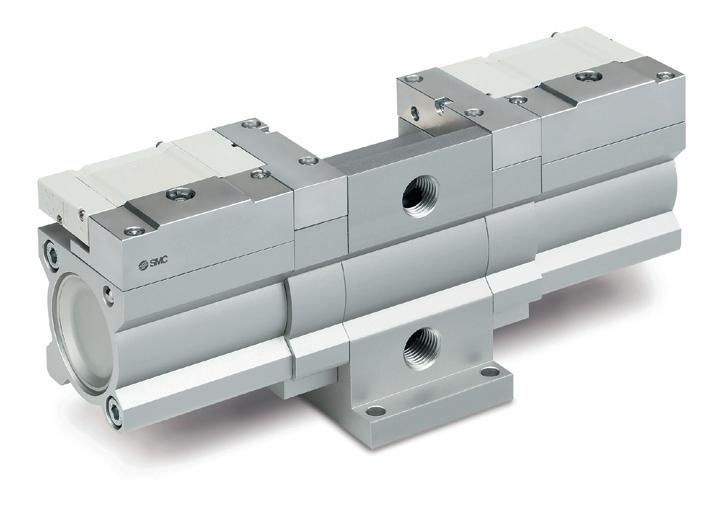
SMC Corporation Australia New Zealand (ANZ) VBA air booster regulator will be on show at APPEX 2024. This VBA series increases main line pressure by up to four times and airflow by 30%.


The model has a three-piston construction which reuses the exhaust air to reduce energy consumption, while ensuring any equipment downstream of the unit has the desired output pressure. It is designed to boost local line pressure without requiring additional power, helping ensure specific components of the user’s machine or facility can operate at the desired pressure. These units can be mounted vertically and horizontally for added flexibility.
The VBA requires low maintenance, with a service life of 50 million or more cycles.
It will be one of the six product categories that SMC will showcase at APPEX.
SMC Australia | New Zealand www.smcanz.com

The NORD LogiDrive solution is an energy-efficient, service-friendly and standardised modular system that is suitable for warehouse logistics requirements.
The solution includes two industry-optimised drive concepts for warehouse logistics applications — the LogiDrive Advanced and LogiDrive Basic.
Suitable for compact installation spaces, both user-friendly drives are low weight and easy to wire, and both provide power for warehouse logistics such as chain and roller conveyors, belt and pallet conveyors, and container and overhead conveyor.
LogiDrive Advanced was optimised for energy efficiency while the LogiDrive Basic was optimised with regards to costs.
LogiDrive Advanced has IE5+ synchronous motor; decentralised NORDAC ON+ frequency inverter, which was specially designed for combination with the IE5+; and a gear unit from the NORD portfolio.
LogiDrive Basic has IE3 asynchronous motor; decentralised NORDAC ON frequency inverter and a gear unit from the NORD portfolio.
The LogiDrive Advanced drive solution is designed to ensure maximum energy efficiency and thus achieve high savings in CO2 emissions. It is designed to achieve high efficiency via large speed and load ranges, and allows for a variant reduction. This makes it suitable for large systems with numerous drives: Fewer drive variants in a system result in streamlined logistics, warehouse and service processes and thus in reduced administrative costs.
The matched components of the LogiDrive Basic are designed to meet all essential warehouse application standards with a large adjustment range. This drive solution does not offer maximum efficiency but features low investment costs.
With both solutions, the user receives an industry-optimised solution, including a frequency inverter with integrated multiprotocol Ethernet interface. Both solutions are also equipped with all international certifications and can thus be used worldwide. NORD Drivesystems (Aust) Pty Ltd www.nord.com
*This



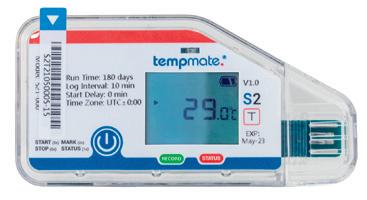


The impact being felt by Australians during their weekly shop due to rising inflation is comparable to what our local food and beverage (F&B) manufacturers are grappling with, in other words, rapidly increasing costs.
The post-pandemic era witnessed a departure from ‘just in time’ supply chains to a more cautious ‘just in case’ approach, where manufacturers maintained higher inventory levels to ensure a steady supply. However, this contributed to higher operational costs that had a knock-on effect on their profits, so we are starting to see market dynamics shift.
Thriving in the current environment requires a strategic blend of innovation, efficiency and adaptability. As consumer preferences shift, global supply chains are evolving and technology continues to reshape the F&B industry.
Achieving manufacturing excellence begins with gaining comprehensive visibility into every facet of the production process. By implementing an enterprise resource planning (ERP) and manufacturing operations management (MOM) solution, F&B manufacturers can monitor, track and analyse their operations from end to end to provide 360-degree visibility across the entire operation.
Armed with this knowledge, F&B producers can make informed decisions that lead to enhanced quality, minimised waste and optimised production processes. For example, by analysing historical data on production output and equipment performance, manufacturers can identify bottlenecks and other areas that can be improved.
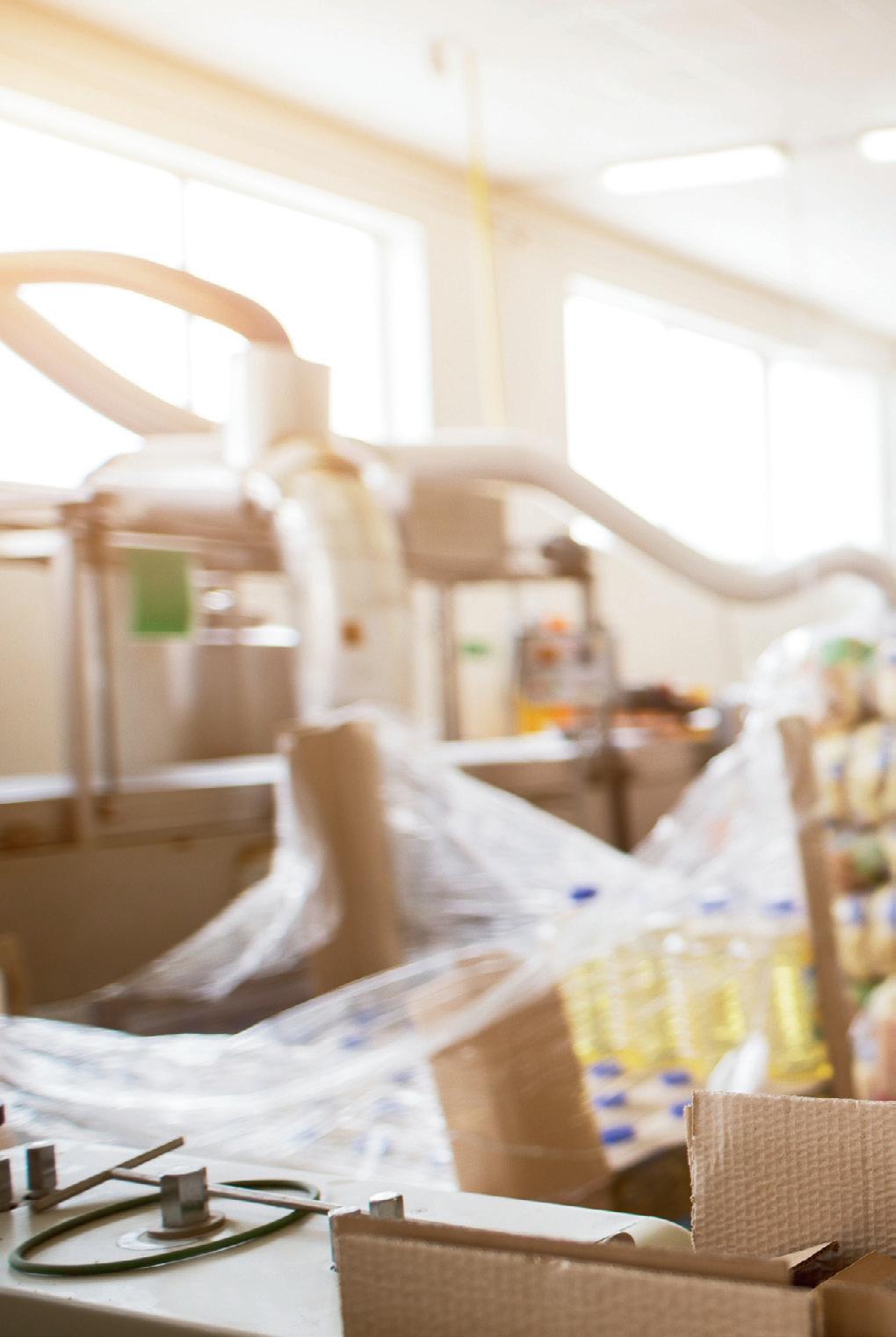
With comprehensive visibility of production processes, manufacturers can leverage predictive analytics embedded into their ERP system to anticipate maintenance needs, optimise inventory levels and streamline supply chain processes.
By leveraging actionable insights, F&B manufacturers can shift from reactive to proactive decision-making, preventing bottlenecks and disruptions to ensure continuous production. This strategic use of ERP technology not only improves productivity but also contributes to cost savings and resource optimisation.
In the era of Industry 4.0, digital transformation and connectivity have emerged as crucial pillars for success in manufacturing. An advanced MOM solution can play a pivotal role in a manufacturer’s digital transformation journey and the real-time data exchange it fosters can enable collaboration and communication across the entire value chain.
With real-time data provided by an ERP system that is integrated with MOM, F&B manufacturers can generate accurate production schedules that consider capacity constraints like people, machines, tooling as well as materials and can help identify production lines that need to be rescheduled to match changing customer demand.
Digital transformation and connectedness enable F&B manufacturers to develop entirely new categories of products, creating new alternatives for customers, while keeping ahead of the curve.

In the dynamic landscape of the food and beverage industry, the ability to adapt quickly to changing market conditions is a key competitive differentiator. Agile manufacturing goes hand in hand with digital transformation, enabling manufacturers to respond swiftly to regulatory changes or supply chain disruptions.
Agile manufacturing, supported by an advanced ERP and MOM solution, allows F&B manufacturers to rapidly react to shifts in demand due to changing consumer preferences, by experimenting with new, perhaps healthier recipes. Plenty of brands are currently devoting their time to making healthier or plant-based versions of their products that still taste delicious.
The ability to experiment with different recipes quickly is indispensable to a manufacturer’s prosperity, so modern recipe board instruments that can guarantee the accuracy of fixing levels, timing, blending strategies and cooking cycles are essential.
In specific areas of the food and beverage industry, equations can turn out to be mind-boggling; however, an ERP designed for manufacturers will actually want to deal with the subtleties and granular subtleties of even the most difficult set-ups in F&B production.
Manufacturers may also decide to change the packaging to move to paper from plastic or modernise the branding based on real-time feedback from consumers. It also enables them to introduce these new products swiftly, providing these manufacturers with a clear competitive advantage.
To remain ahead of the competition and propel their businesses to new heights, the time has come for F&B manufacturers to recognise the transformative benefits of consolidating all their data onto a unified platform.
By integrating ERP and MOM systems seamlessly into their operations, manufacturers can not only optimise efficiency and reduce costs but also position themselves as industry leaders ready to navigate the challenges and opportunities of the future. By embracing embedded analytics, manufacturers will be able to unlock new opportunities and ultimately improve their bottom line.
As the F&B manufacturing industry evolves, those who embrace these strategies position themselves not only to survive but to thrive in an increasingly competitive market. Recognising the transformative benefits of Industry 4.0 technologies and strategic integration, manufacturers can optimise efficiencies, reduce costs and emerge as industry leaders ready to navigate future challenges and opportunities. In essence, the time has come for F&B manufacturers to leverage ERP combined with MOM as a catalyst for innovation and sustainable growth in an everchanging competitive landscape.

Finnish food experience company Fazer is introducing a limited-edition chocolate snack bar under the Taste the Future concept at selected Cocoa Tree stores across Singapore.
The snack bar uses Solein, a novel protein that is said to be grown out of ‘thin air’ and developed by Solar Foods. The protein is produced out of a microbe sourced in nature. The microbe is grown to a protein powder in a bioprocess powered by electricity and carbon dioxide without the need for traditional agricultural methods. Solein received a novel food regulatory approval in September 2022 in Singapore, clearing its sale and use in food products in the city state.
The snack bar is labelled as vegan friendly, palm oilfree and made of 70% dark chocolate, hazelnut, dried strawberries and crunchy oat puffs. The recipe includes 2% of the Solein protein, which provides iron, a nutrient sometimes lacking in plant-based diets.
as bring different techno-functionalities into food products.
The snack bars were produced in Vantaa by Fazer. The Solein used in the bars comes from Solar Foods’ pilot factory, capable of producing small quantities of the protein. Solar Foods’ first commercial-scale facility, Factory 01, is close to completion and scheduled to begin operations in the first half of 2024. Once this first commercial-scale facility ramps up production, it will produce 160 tonnes of Solein a year.

For Solar Foods, the new snack bar demonstrates the versatility of Solein, which can be used as a fortifier to complement the nutritional profile of various foods. Solein can be used a source of iron, fibre and B vitamins, as well
Solar foods has now filed for novel food approvals in other key markets, such as the EU, UK and United States.
“This is an exciting moment for us working with Fazer — the very first time people can try Solein within a consumer snack bar. This also demonstrates the potential of Solein as a sustainable and nutritious fortifier. With this introduction in Singapore, we are getting valuable customer feedback on Solein’s viability in a new product category and also get a sense of the consumer acceptance of future ingredients. Our shared aim extends beyond this pivotal moment, targeting a wider scale European launch in 2025–2026 with a whole range of products,” said co-founder and CEO of Solar Foods Pasi Vainikka.

GEA has launched a continuous bacon processing line, designed to increase speed and capacity, and take the ‘batch’ out of bacon production and simplify the creation of bacon products. The all-in-one product comes with the option of a fully incorporated smoking state, for shorter process times than a conventional smokehouse.
The system complements GEA’s injection machine, the MultiJector 2mm, which injects the brine into the bacon using a dense needle pattern for even distribution and retention. After the smoking step, bacon hardening is handled by GEA’s A-Tec spiral freezer, which is designed to provide the right conditions for slicing the product.
GEA Group www.gea.com
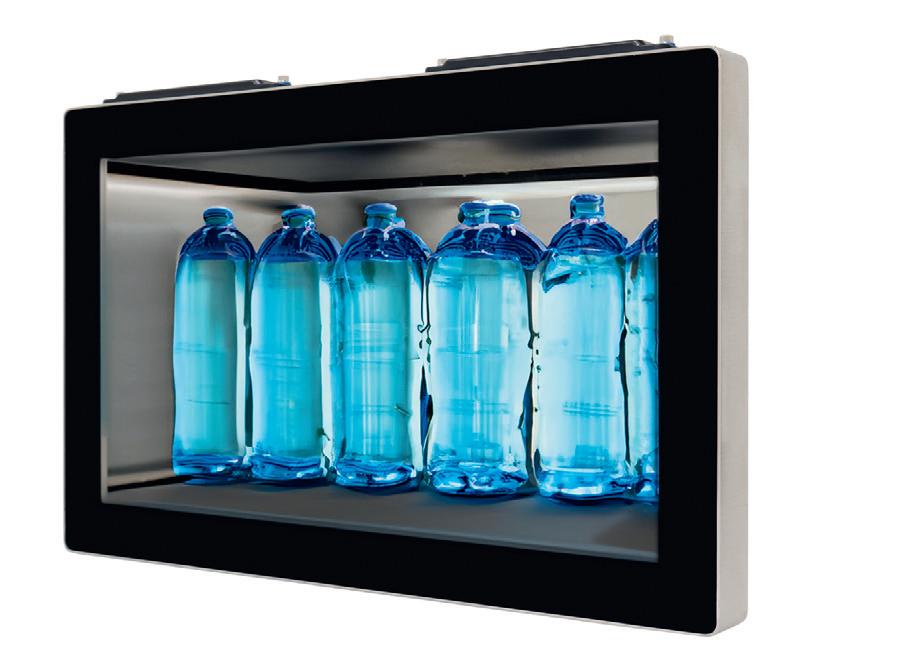
Backplane Systems Technology presents APLEX’s PhanTAM816BP/H 15.6 ″ flat and slim design stainless steel panel PC.
APLEX’s PhanTAM-8B panel PC is tailored for environments with stringent hygiene standards. This device, contrasting with the high-performance PhanTAM-9C, focuses on entry-level applications, especially in food and pharmaceutical industries.
It has good waterproof capabilities. Rated IP66/IP69K, it withstands high-pressure, high-temperature water jets, crucial for maintaining hygiene in food automation. The inclusion of a waterproof cover for the wireless antenna, M12 connectors and hygienic bolts (FDA-certified) enhances its water resistance and simplifies cleaning processes. This seamless design integrates anti-bacteria, anti-corrosion and anti-oxidation properties, supporting a wide temperature range of -20 to 60°C.
In terms of technical specifications, it is equipped with versatile ports and expansion slots, including USB, LAN, COM and options for 4G/5G, Wi-Fi/Bluetooth and SSD storage. It supports up to 32 GB DDR4 system memory and offers optional RFID for contactless operations, enhancing hygiene. Its power input ranges from 9~36 VDC and it supports various mounting methods for flexible installation.
Operating on Windows 10 IoT ENT LTSB and Windows 11, the unit is suitable for diverse industrial environments. Additionally, the optional explosion-proof film adds to its ruggedness, making it suitable for food factories with extreme temperature variations and intensive cleaning routines.
Other features include: grade 304 stainless steel enclosure (grade 316 for option); IP66/IP69K rated with M12 connectors; slim front frame design; and hygienic bolts on rear case. Backplane Systems Technology Pty Ltd www.backplane.com.au






In the bustling world of food production and distribution, every detail matters. For Parmalat S.p.A., a renowned global player in the food industry, the need for efficient and eco-friendly solutions is paramount. Producing a wide range of everyday essentials including milk, dairy products, and fruit beverages, Parmalat always seeks ways to optimize their processes. Enter Handtmann — a name synonymous with innovation and sustainability in food processing equipment.
THE CHALLENGE: ensuring processing equipment is thoroughly cleaned, particularly in processed cheese production. Traditionally, this required a two to three percent caustic solution, which once used, was usually discarded.
THE SOLUTION: Albert Handtmann Armaturenfabrik GmbH & Co. KG. With their expertise in recycling and innovative crossflow system, Parmalat can now recycle dirty caustic and return it for re-use, reducing caustic consumption and thus reducing costs.
The Handtmann CF (crossflow) system is a triumph of environmentally conscious technology. The system filters and purifies the caustic solution, returning it to the central tank, creating a cost-effective and ecofriendly recycling closed loop process. Thanks to this system, Parmalat significantly reduces its chemical waste and costs, conserves water consumption, most importantly reduces discharge to wastewater treatment and energy cost for reheating new caustic batches. Connecting a CIP to a buffer tank is only one option. Alternatively, the customer
can operate without a tank or connect multiple CIPs to a single tank.
Transform your operations and move toward sustainability with the Handtmann System a revolution in filtration efficiency
With a remarkable filter efficiency of 99%, a mid-sized Handtmann system can process approximately 20 cubic metres of contaminated caustic into pure filtrate daily. Handtmann isn’t just a solution for Parmalat; it’s a game changer for various industries. From southern Germany’s processed cheese production to countless other applications, the Handtmann system is proving its worth.
One of our satisfied customers required that the caustic loss should not exceed one percent — a demand met effortlessly by the Handtmann system, but we didn’t stop there.
A bigger Handtmann system was set to a filter capacity of 5.000 litres per hour. Even more impressively, we’ve managed to permanently reduce the COD value (Chemical Oxygen Demand) over 68%, maintaining it well below the limit of 3,500 mg/L set by the relevant wastewater authority.
Imagine a filtration system that works around the clock, seven days a week, and completely automated. A system capable of operating independently, or connecting to other systems via a central, overarching parent system. A system that ensures continuous operation even in the face of unexpected tank failures. This is the reality with Handtmann’s Crossflow Filter Technology. At the heart of Handtmann’s CF system lies the ceramic membrane, a powerful component that can be utilized for microfiltration or ultrafiltration, up to a best case separation limit of 5 kDa (kilodaltons), based on the task at hand. This robust membrane navigates the filtration process with such ease that the alkaline solution passing through it at a temperature of approximately 60 degrees Celsius is a testament to its prowess.
So, what about the Future? Parmalat and Handtmann continue to collaborate after installing Handtmann systems for caustic regeneration in five of nine Parmalat’s Italian plants in 2021 and 2023. The Handtmann system is more than just a piece of equipment; it’s a solution that meets the demands of today and the challenges of tomorrow. It’s a testament to the power of innovation and the importance of sustainability in the food industry.
The CF system’s capabilities extend beyond its impressive operational efficiency. The ceramic module within the system boasts high thermal and chemical resistance,

making the CF filter technology not only suitable but also exceptionally durable for corrosive filtration in the food and beverage industry. Our case studies with long term customers demonstrate this durability, with the ceramic membrane performing reliably for more than 10 years so far without exchange. Maintaining peak performance is simple, by weekly descaling of the ceramic module with acid. During this one-hour process, the CF system is temporarily disconnected from the plant. But rest assured, this short break is the only pause in the system’s otherwise relentless operation.
Today, Handtmann’s revolutionary technology is being transferred from the German and European market to global leaders in the food and beverage industry, dairies, and processing production. As regulations for environmental protection increase, and caustic concentrate prices
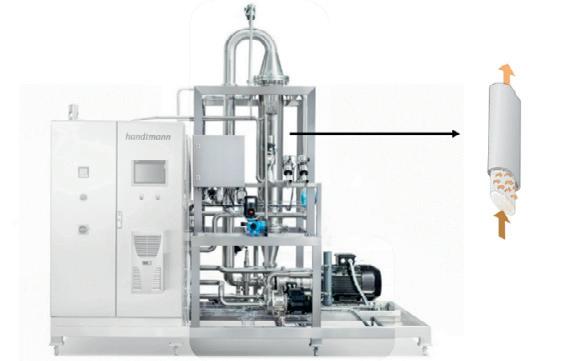

increase, the need to use resources sparingly and sustainably has never been more crucial. Experience the Handtmann difference firsthand. Now available in Australia & New Zealand to buy or rent for tests. Discover how Handtmann’s technology can benefit your business. After all, every step towards a more sustainable future is a step in the right direction. It’s not just a product, it’s a promise for a smoother, more efficient, cost effective and sustainable operation for your business.
Need more? contact:
i.A. Marc Pfeilsticker
Jr. Area-Sales Manager
Asia Pacific
Arthur-Handtmann-Str. 11, 88400 Biberach/Riss, Deutschland
Tel.: +49 7351 342-4535
Mobile: +49 151 7464 7492

Marc.Pfeilsticker@handtmann.de
Sandy Ross
Official Handtmann representative
Australia & New Zealand Rossbrew
58 Walana St, Geilston Bay, Tasmania
Mobile: +61 403 005 248
sandy@rossbrew.com.au



Albert Handtmann Armaturenfabrik
GmbH & Co.KG
www.handtmann-armaturenfabrik.de
At APPEX 2024, Sidel will be showcasing its latest packaging equipment including the cobotic palletiser CoboAccess_Pal, the blow-fill-cap Aseptic Predis X4 and the Evo-ON smart cloud suite.

The compact CoboAccess_Pal industrial cobotic palletiser is designed to be safe and easy to operate. The fenceless equipment is capable of stacking wrap-around or regular slotted cases at a rate of up to six cycles per minute and payloads up to 14 kg. To maximise uptime, the palletiser comes fitted with Sidel’s patented PalDesigner configuration and simulation software, allowing operators to create and modify pallet patterns directly in the palletiser’s system.
Sidel’s Aseptic Predis X4 is an integrated blow-fill-cap solution for PET bottles that incorporates Predis dry preform sterilisation. The system is capable of continuous production cycles lasting more than 200 h and combines high food safety standards, ease of use and maximum flexibility with a good environmental footprint.
The Evo-ON software suite is designed to improve line productivity. The collection of smart apps uses equipment data to make performance recommendations.


Sidel will also be celebrating its partnership with E80 Group, the automated intralogistics specialists, creating inbound packaging solutions for warehousing and outbound logistics.
Sidel Oceania Pty Ltd www.sidel.com



Nozomi Guardian Air is a wireless spectrum sensor purposebuilt for OT and IoT environments worldwide.
Guardian Air provides visibility into wirelessly enabled devices, monitoring several prominent wireless frequencies, not just Bluetooth and Wi-Fi, to provide security teams with visibility of connected sensors, devices, laptops and mobile phones. With the addition of Guardian Air, users can have a comprehensive network solution all in one integrated platform.
With Guardian Air, IT security professionals and OT operators can continuously monitor prominent wireless frequency technologies used in OT and IoT environments including Bluetooth, Wi-Fi, cellular, LoRaWAN, Zigbee, GPS, drone RF protocols, WirelessHART and more. They can also detect wirelessly connected assets and gain asset information to quickly address unauthorised installations, detect wireless-specific threats, including brute force attacks, spoofing, and bluejacking — with the added ability to determine the location of the devices performing the attacks and seamlessly integrate wireless data into a single OT & IoT security platform that unifies asset visibility from the endpoint and across wired and wireless networks.
Nozomi Networks Inc
www.nozominetworks.com
Most equipment today, particularly that which contains pipework, enclosed spaces and small apertures, is cleaned in situ without the need for dismantling or opening, and with minimal operator intervention — a technique which is known as cleaning-in-place (CIP).
As well as ensuring that production equipment is hygienically clean and suitable for use, CIP also plays a number of other important roles. CIP systems should ensure that no cleaning fluids or contaminants remain in the equipment — they are designed to ensure food safety, and by reducing the effort and downtime required for cleaning, they also help ensure production cycles are efficient and cost-effective.

Because of the automated or semi-automated nature of CIP systems, they provide improved control of the cleaning parameters to provide consistent results, as well as automatic record keeping for traceability and due diligence purposes. Furthermore, being automatic reduces the need for human contact with potentially harmful cleaning agents or other chemicals.
HRS has two types of CIP (and SIP) kitchen. The first are those which are integrated into other systems, such as HRS pasteurisers and sterilisers, as well as its Aseptic Block Series and aseptic fillers, for example. The second is the HRS series of standalone CIP and SIP kitchens. These are available with single (ST) or multiple tanks, which are heated with an HRS K Series heat exchanger. Their fully skid-mounted and modular design enables quick and easy site installation, and the fully automated systems are supplied with a programmable logic controller (PLC) system that can operate on its own or be integrated into the factory’s main control system.
HRS Heat Exchangers Pty Ltd www.hrs-heatexchangers.com/anz
























World’s first laser triangulation sensor of its kind with intuitive touchscreen operation, selectable operating modes, stainless steel housing in IP69K and IO-Link functionality.
All in one — one for all: with the new W10 diffuse sensor, SICK presents a sensor that can be used to solve a wide range of detection tasks in automation technology more universally than ever before. The sensor series comprises just four variants, which differ in their operating distances and mounting options. This considerably reduces the usual variety of types. The Class 1 laser light source, in conjunction with the precise receiver evaluation line, delivers precise detection results with high repeat accuracy. For the first time, a touchscreen interface has been implemented in a sensor of this type,
which means that the operation of the W10 meets demanding requirements for intuitive ease of use and innovative user experience. Three application-optimized operating modes can be activated just as easily via the display as foreground or background blanking if required. In addition, situation-dependent teach-in options allow the W10 to be conveniently adapted to individual application scenarios. The stainless steel housing with IP69k protection protects the sensor even when used in demanding environmental conditions. Thanks to IO-Link functionality, the light scanner offers the option of remote
configuration and efficient integration of the recorded sensor data into an existing automation network.
The W10 stands for versatility and a high degree of flexibility in application design. This opens up a wide range of applications for the diffuse sensor across numerous industrial sectors and innovation sectors, particularly in factory and logistics automation applications, for example in the robust and reliable detection of objects with different or challenging surface properties such as gloss, color or structures.
World’s first laser triangulation diffuse sensor with intuitive user experience via touchscreen Slide switches, potentiometers, rotary knobs — the W10 can do without all these setting elements. This is made possible by the touchscreen display, which makes this laser diffuse sensor the first of its kind. Whether speed, standard or precision operating modes, foreground or background blanking, individual teach-in settings, preconfigured parameters and limit values — the operator can select, call up, adjust and save everything intuitively. A screen lock as a special security feature of the W10 protects the settings securely against access or unwanted changes by third parties. As an alternative to operation on the device, the W10 can also be set easily via IO-Link and can also communicate via this interface. The W10 has two digital outputs for the output of switching signals.
The W10 combines a high-precision class 1 laser light source — whose focused light beam produces only a small light spot on an object — with a fast and precise receiver
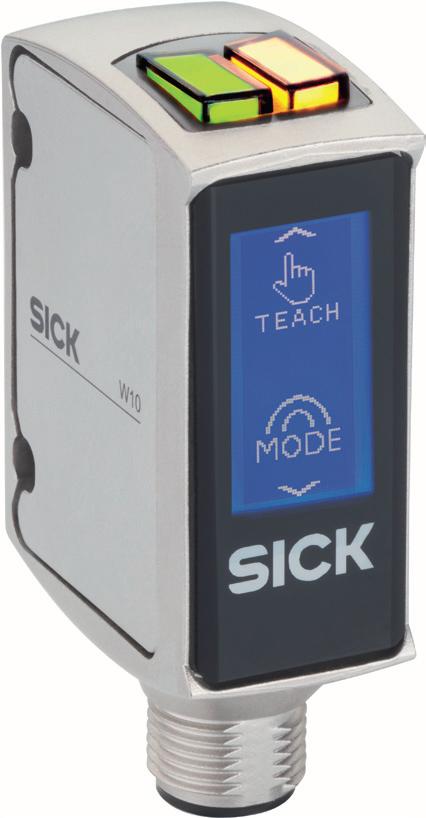
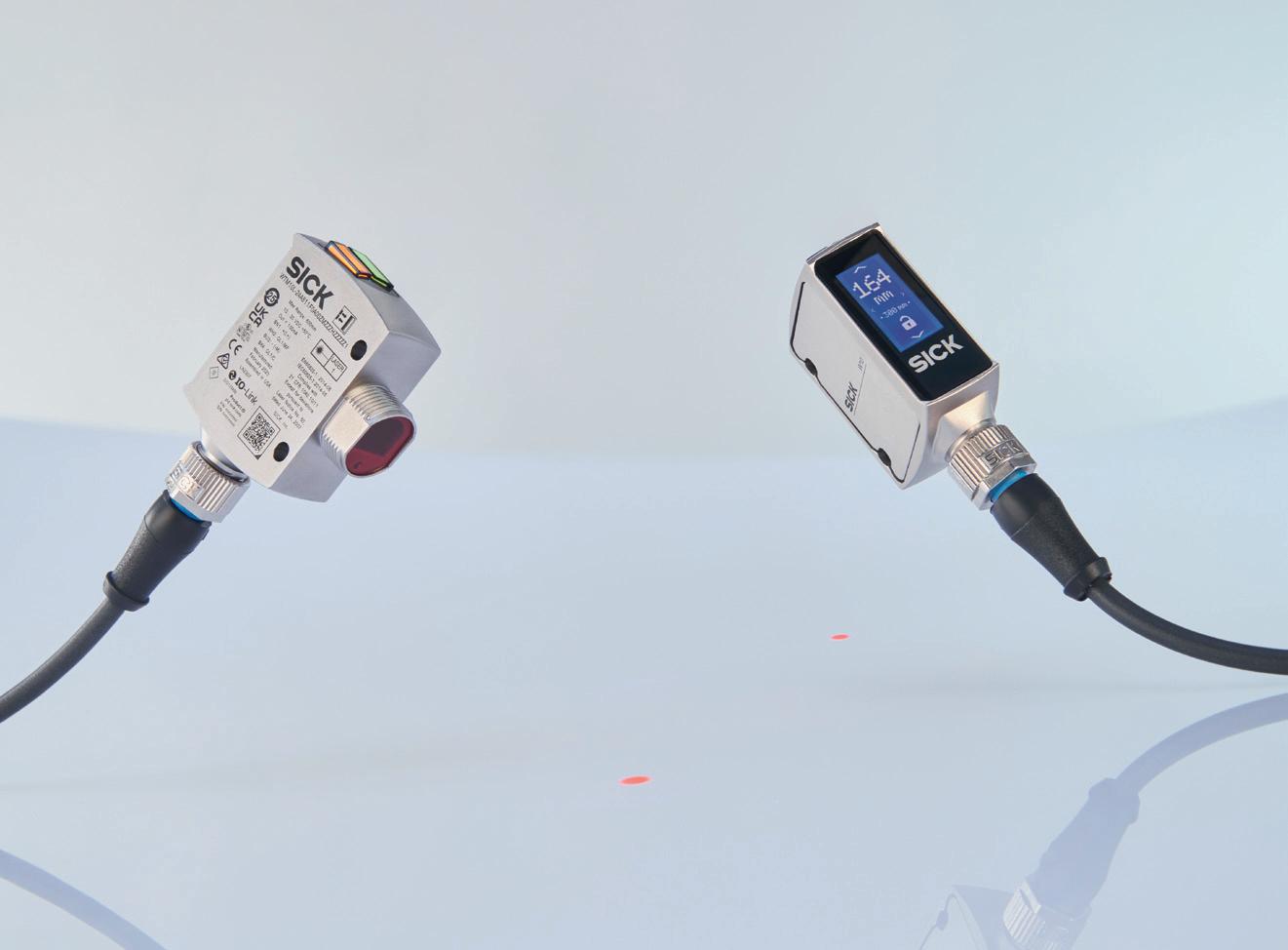
evaluation line. Thanks to this powerful technology, the diffuse sensor achieves very precise detection results with high repeat accuracy both in the short-range version with working distances between 20 mm and 400 mm and in the long-range version with ranges from 20 mm to 700 mm: this is ideal for the precise detection of objects and positions. In speed mode, the response time is 1.5 ms — reliable switching behavior is therefore guaranteed even at high machine speeds.
By using dynamic algorithms developed for specific applications, the W10 achieves a high level of reliability and good repeat accuracy ex works. The laser scanner offers individual teach-in options for specific adaptations. In addition to the usual 1-point teach, which detects objects at a defined distance, a 2-point teach enables objects of different heights to be detected. A manual mode extends the teach options and offers even more flexibility. Both the short-range and long-range versions of the W10 are available in two housing
variants: one for standard mounting with a 1-inch hole and one for hybrid mounting via the M18 thread on the front or the 1-inch hole on the side. With just two versions — each with two color LEDs to indicate the operating status — the W10 offers a high degree of mounting flexibility. This makes it suitable for the most common installation situations. The stainless steel housing with protection class IP69k makes all W10s extremely robust devices that can withstand harsh operating environments, aggressive media or frequent cleaning cycles. This ensures maximum availability during operation and avoids long downtimes in the application.
SICK Pty Ltd
www.sick.com/w10

The food industry has used many fungus strains for their capacities to ferment, produce flavours or produce heterologous molecules. According to a new study, two fungi used to produce food products have potential probiotic effects on gut inflammation. The study, published in mSystems , demonstrates this new way to develop probiotics.
Lead author Mathias L Richard, PhD, Research Director at INRAE in the Micalis Institute, France, said, “There is much to learn by studying the role of the fungal strains in the microbiota and host health and also that species simply used in food processes can be the source of new probiotics.”
To date, there is little known about the diversity of foodborne yeasts and their potential effect on gut microbiota and gut health. Yeasts are microscopic fungi consisting of solitary cells that reproduce by budding. Some have been used for hundreds of years for wine and bread production, while others are used for cheese crust production or ripening.
The researchers conducted the study because they’re working to further their knowledge of the effect of the fungal microbiota on human health. In this study, the idea was to target the fungi that food companies use to produce food products. The research focuses on the role of fungi in gut health and on the development of inflammatory bowel diseases.
The researchers selected yeasts that were used in food production and represented a range of different yeast species, then tested them either in simple interaction tests with cultured human cells or in a specific animal model mimicking ulcerative colitis.
They found that in the collection of strains used for food production, some strains have a beneficial effect on the gut and the host in inflammatory context. Two strains of yeasts that had potential beneficial effects on inflammatory settings in a mouse model of ulcerative colitis were identified: Cyberlindnera jadinii and Kluyveromyces lactis. In an attempt to decipher the mechanism behind these effects, several additional experiments were performed. In the case of C. jadinii, the protection seemed to be driven by the modification of the microbiota after the administration of C. jadinii to the mice, which in turn modified the sensitivity to gut inflammation through a still unknown mechanism.
According to Richard, these strains have never been specifically described with such beneficial effects, so it is a promising discovery even if it needs to be studied further.
C. jadinii and K. lactis strains have potential as probiotic yeast strains to fight against inflammation in the gut, but further studies are needed to understand the mechanisms by which these strains act on gut health.



Aresearch team has systemically analysed the Senate Inquiry into Definitions of Meat and Other Animal Products with implications for the recent moves by Australian regulators to approve cultivated meat. The team comprises Dr Hope Johnson from the QUT School of Law and her research team, Melbourne Law School Professor Christine Parker and QUT researcher Dr Brodie Evans.
According to Johnson, a concern stakeholders carried was that alternative proteins were a threat to animal agriculture; however, over the course of the Senate Inquiry, stakeholders began to concede that plant-based proteins are not in competition with meat and dairy.
In Australia, these industries felt that labelling laws were the problem, and the best solution would be ensuring ‘consumer clarity’.
However, animal agriculture industries in various nations have resisted this and advocated for laws that restrict the use of meat and dairy terms on alternative protein product labels.
“Despite the lack of consumer complaints about the labelling of meat alternatives to the ACCC, most stakeholders — and the outcome of the Inquiry — supported the introduction of mandatory qualifiers for plant-based meat and dairy alternatives, for example ‘plant-based burger’,” Johnson said.
She said the use of meat terms, such as “burger”, was supported here; however, in the US, the use of terms like burger on such products is more contested.
“Stakeholders also pushed for improved regulation of nutrition and sustainability claims, with the latter claims largely being unregulated by Australian food law and mostly left to consumer watchdogs,” Johnson said.
According to Johnson, food labelling refers to all the tags, brands, marks, statements, representations, designs and descriptions on food and its packaging that is made or displayed to consumers when it is sold.
By law, front-of-pack labelling has been long required to accurately describe the nature and content of food being sold, while back-of-pack labelling must have safety and nutritional information.
“In contemporary times, however, food labelling is more than a way to convey basic information about a product.
“Rather, the food label is a very small but precious bit of terrain in which claims are staked over the quality and provenance of food with real implications for both the consumer and the whole food chain.
“Examples include the introduction of mandatory ‘interpretive’ nutrition labelling, such as traffic lights, to grab consumer attention and ‘nudge’ consumer choice, and in some jurisdictions mandatory labelling of genetically modified foods or foods containing nanoparticles,” Johnson said.
Typically, food labels incorporate quality and credence claims, such as religious certifications, fair trade, fair labour, environmental, health and animal welfare assurances.
Johnson said she and her colleagues would continue to study the approval of cultivated meat products in Australia as it shapes up to be the third country in the world to approve cultivated meat.
“Some other countries may well go another way. For example, Italy recently took a different direction by introducing a ban on cultivated meat,” Johnson said.
Regulators in Australia are currently calling for public submissions on a proposal to approve a lab-grown quail product from Australia startup Vow.
When submissions are closed, regulators will consider how to label these products.
“We expect to see more concerns from stakeholders about the potential for cultivated meat products to replace conventionally produced meat and dairy.
“But perhaps unlike the previous political debates on plantbased meat, this will not be resolved by conclusions that the products are not in competition.
“Likewise, the ongoing lack of proactive regulation regarding sustainability claims on food will probably be flagged by stakeholders.
“The environmental credentials of both meat and cultivated meat are complex to verify and giving the consumer a full picture of all the environmental impacts is difficult on a standard label,” Johnson said.
The study, “Don’t mince words”: analysis of problematizations in Australian alternative protein regulatory debates, has been published the journal Agriculture and Human Values.


3 strategies that can help reduce the cost of food products:
• Modification
• Fortification
• Reduction
Book a meeting with the IMCD team to discuss how we can help you reduce costs.


Leveraging the advancements of Industry 4.0 technology and innovations within the food packaging sector is driving greater productivity, efficiency, and profitability for businesses. For small and medium sized manufacturers (SMEs), having access to such technology can have a significant positive impact on overall financial performance and the bottom line.
Packserv’s recent collaboration with the University of Technology Sydney (UTS) is focused on developing a range of machinery aimed at providing SMEs access to Industry 4.0 technology and enabling them to compete at the highest levels of quality manufacturing.
The first machine in the new range, an innovative high-speed liquid filler, will be launched at APPEX in March.
Designed, engineered, and built in Packserv’s Sydney facility, this machine, which has been manufactured for businesses of all sizes, incorporates the latest cylinder actuators

from SMC Technology, marking a pioneering application in this equipment. Manufacturers stand to benefit from fully electronically controlled twin lane container indexing that is not only more reliable and adaptable but is also significantly faster in production output.
The equipment offers a digitally enhanced experience for food manufacturers with realtime remote access for proactive monitoring of the machine, diagnostics, adjustments, and collaboration with Packserv’s technical specialists. The outcome is fast, proactive, efficient, and highly accurate technical support with predictive maintenance. Vital repairs can be carried out remotely which means increased uptime and savings in maintenance costs and resources.
The transition to a fully electronic design simplifies the training of Machine Operators thanks to an intuitive interface which enables operators to retrieve preset configurations from the menu. This eliminates the need for manual adjustments during each production run, saving time and reducing product waste.

Breaking away from traditional design concepts involving compressed air and a single stream of container movement means that the machine is significantly more energy efficient. The application of technology enables containers of various sizes to be filled as part of the same production run and micro adjustments can be performed on each cylinder, ensuring precise dispensing.
Moreover, the machine’s intelligent selfoptimisation and autonomous monitoring of the production line contribute to optimal speed, efficiency, and cost-effectiveness. Data acquisition and condition monitoring provide comprehensive insights into minimum and maximum cycle times, resource utilisation, and energy consumption. The line is equipped with daisy-chain connectivity, enabling the integration of secondary machines and adapting to the speed of the other equipment in the production line.
As part of Packserv’s vision to provide manufacturers with agile, sustainable solutions, the machinery not only increases plant efficiency and operator experience, but also reduces costs. Sustainability efforts are supported through waste reduction, optimal energy consumption, improved efficiency and a smaller production line footprint facilitated by the twin line configuration.
Packserv is committed to ongoing innovation and the expansion of its machine lineup, encompassing fillers, cappers, conveyors and in-feed and out-feed tables. This initiative is integral to its sustainable digital transformation strategy, aimed at securing the competitiveness of Australian manufacturing businesses, regardless of their size, on the global stage.

Many wine lovers believe wine looks and tastes better in glass so glass bottles have been the wine industry’s go-to for centuries. Glass bottles, however, may not be the most carbon-friendly option available, so researchers set out to discover what could be changed to motivate consumers to choose more sustainable packaging for wine.
Researchers from the University of South Australia’s Ehrenberg-Bass Institute for Marketing Science and the University of Adelaide’s Business School explored people’s wine packaging choices, and how attributes such as price, brand and messaging can also influence their decisions.
Jakob Mesidis, lead researcher, said previous wine packaging research has largely focused on wine label and closure (cork or screw-top) preferences, but little attention has been paid to the format of the packaging.
According to the study, conventional glass wine bottles are the wine industry’s largest source of carbon emissions, with the manufacture of a single bottle generating 1.25 kg of carbon dioxide. In total, over two-thirds of the wine industry’s carbon output comes from the production and transport of glass bottles.
The main alternative wine packaging formats in Australia are the ‘bag-in-box’ or cask wine and aluminium cans, though new formats, such as flat plastic wine bottles, are gradually entering the market.
These formats are claimed to be up to 51% more carbonefficient than glass, but, according to Mesidis, Australian consumers are resistant when it comes to these options.
It is thought that they may be seen as the cheaper, lowquality options compared to glass bottles, which are perceived with a sense of heritage and luxury.
“Canned wine has seen a rise in popularity but is still a
small portion of the market. Flat bottles have only recently been introduced to Australia but have grown in popularity overseas,” Mesidis said.
In a survey of 1200 Australians, the Ehrenberg-Bass Institute found that cask wine and flat plastic wine bottles were the most preferred formats after traditional glass bottles. Cans were the least preferred, as they were closely tied to specific occasions, such as drinking outdoors.
Results found that package format was the biggest influence on people’s choices. Price came second, while the importance of brand and eco-messaging depended on the respondent’s age and how many eco-friendly behaviours they engaged in.
Younger people typically bought more alternative wine formats. Consumers were found to be more likely to choose alternative wine packaging when it is priced at a mid-to-low price range and if it comes from a well-known, prestigious brand.
“If a smaller, less-known winery’s mission is to grow its brand as much as possible, relying solely on alternatively packaged wines is not the way to go. Most Australians — for the time being — are still going to reach for a glass bottle when they’re at the shops,” Mesidis said.
“Larger, more prestigious brands are likely to see more success with alternatively packaged wine. Ultimately, this research provides wine marketers with a foundation for their low-carbon wine packaging strategies, rather than blindly navigating this relatively new field.
“Research in this space is still young and there is exciting work to be done to better understand this burgeoning part of the wine industry.”
The survey study, which was funded by the Wolf Blass Foundation, has been published in the Journal of Cleaner Production
Prime100 has partnered with Tetra Pak to launch its dog food product line with sustainable packaging. The SPD (Single Protein Diet) product range comes in seven flavours and is now packaged in Tetra Recart, a solution made from carton with a low CO2 footprint.
The dog food range provides a single source of protein suited to all breed types and ages of dogs, including those suffering from food-based allergy and sensitivity. Made from selected functional ingredients aimed at increasing levels of vitamins, minerals, essential amino and fatty acids, the range is slow-cooked, which is more digestible and palatable for dogs.
The partnership signifies an innovative approach to pet nutrition and packaging in Australia — a booming market. Australians spend an estimated AU$33 billion on pet services and products annually.
The launch will also be Tetra Pak’s first entry into the pet food category in Australia. Cartons are claimed to have up to six times less impact on the environment compared to cans in their life cycle, including the source of the material, transport and end of life. Tetra Recart delivers on the packaging requirements in food, maintaining food at safe room temperature without preservatives. It is also easier to open, store and dispose of.
Tetra Recart can be recycled at kerbside collection points and can also be transported to a saveBOARD recycling facility and turned into sustainable building materials for homes and offices.
Jason Gray, Prime100 CEO, said the partnership with Tetra Pak is a significant milestone in the company’s journey to transforming pet nutrition. “Tetra Pak’s sustainable packaging ensures our products benefit both pets and the planet.”
Boris Munster, Tetra Pak Australia and New Zealand Managing Director, said, “We are thrilled to be partnering with Prime100 to drive greater sustainability in their portfolio through product and packaging innovation. It’s great to see a homegrown pet food brand drive thought leadership in the category and we hope that it’ll inspire more brands to make the switch to more sustainable packaging to help reduce carbon footprint.”
Available nationwide at Petstock, Petbarns and selected vets, the SPD range will be manufactured in Prime100’s Melbourne Facility.
Tetra Pak
www.tetrapak.com/en-anz

Rotary ring-style automatic stretch and pallet wrap machines have long been regarded as an ideal solution for high-speed applications. Robopac makes a wide range of rotating ring machines to wrap and stabilise loads on pallets with stretch film for any industry.
Able to handle up to 160 pallets in a wide range of sizes per hour, Robopac’s Genesis Thunder provides good durability for heavy-duty operations and good performance at low energy cost. It features Robopac’s Cube Technology for intelligent use of pre-stretching, which is designed to save users 30–55% on film costs and reduce product damage by up to 40%. Robopac’s patented Nip&Tuck Tail System clamps, cuts and threads the film without sealer. The last tail of the wrapping film is inserted into the second-last wrap.
With a hygienic and ergonomic design, the machines have noiseless operation and reduced maintenance. A dynamic parachute provides double redundant and continuous locking mechanisms for maximum operator safety.
Robopac (Aetna Group SpA) of Italy has made over 12,000 Robopac Pallet Wrappers to ISO standards and exported globally. Robopac is serviced and supported by Foodmach in Australia and New Zealand.
Meet with Robopac at Foodmach’s stand D050 at APPEX 2024.
Foodmach Pty Ltd
www.foodmach.com.au

Automated systems for production and packaging processes need to be more flexible, more efficient, and more intelligent. We help you with our innovative sensor solutions — from the first to the last step in the packaging process.
The processing and packaging of food, pharmaceuticals or cosmetics places high demands on hygiene, robustness, speed, and safety at work. Products and product packaging change continuously in automated packaging processes. For decades we have been working closely with manufacturers of packaging machines and with consumer goods producers from different sectors. Our industry experts have an exact knowledge of the special challenges and needs. Regardless of whether you require individual standard or special sensors, complete sensor solutions or have questions about Industry 4.0, predictive maintenance, or safety at work, our goal is to ensure that your packaging systems are available and the processes and products are safe and trackable.
The development and integration of special sensors for challenging tasks in the packaging industry is our strong point. We offer the world’s most powerful throughbeam photoelectric sensor, a dynamic reference diffuse sensor specially designed for detecting products and packaging on conveyor belts and a forked sensor for label detection, to name a few. Providing our customers with solutions for all packaging applications — from standard to special.

Requirement: In a horizontal packaging system, candy bars are packaged in film. The packaging film has a colourful print and is opaque. To separate the bars, however, the front edge of the bar inside the film sleeve needs to be reliably detected to ensure that sealing occurs at the correct position.
Solution: The LS25CI.XX transilluminates even metalized and darkly coloured films effortlessly, even if multiple layers need to be transilluminated. Despite this, the front edge of the packaged product is reliably detected.

Requirement: For trouble-free control of the buffer section, packaging made of various materials and with a wide variety of surfaces must be reliably detected from the front edge. Changing products or packaging films should not require any additional setup and adjustment work on the sensor.
Solution: The DRT 25C (dynamic reference diffuse sensor) uses the conveyor belt surface as the point of reference. The detection is independent of the surface characteristics of the materials used, such as the color, gloss, and transparency. This means no setup work on the sensor is required when changing products.

Requirement: For position-accurate dispensing of labels onto the products/packaging, it is critical to reliably detect the labels (or the gaps between two labels) on the carrier tape. Using ultrasonic technology, the fork sensor can easily detect transparent or semi-transparent labels with challenging shapes (e.g., round or oval) to prevent machine downtime or inaccurate dispensing due to unreliable detection. The fork sensor must be easy to set up for all types of labels.
Solution: The GSU12, GSU14E, and IGSU14E ultrasonic fork sensors can reliably detect all types of labels — whether the labels are semitransparent or not. This means that machines can be fitted with only one fork sensor, regardless of the application. The GSX14E fork sensor, which combines an ultrasonic and an optical system in a single housing, can even reliably detect labels made from inhomogeneous cavitated BOPP material.
For more information on our range of sensors for the packaging industry, check out our website: https://www.leuze.com/en-au/ industries/packaging-industry or phone 1300 538 933.

In the ever-evolving landscape of the food industry, where consumers are increasingly conscious of what they consume, food labels play a crucial role in conveying information about products.
Behind the scenes, technology is driving a revolution in the way food labels are created, offering not only enhanced aesthetics but also improving transparency, traceability and communication with consumers. In this article, Action Labels delves into the technologies being used to make food labels and explores how they are shaping the future of food packaging.
QR codes for enhanced information:
One of the most notable advancements in food labelling technology is the integration of quick response (QR) codes. These small, square codes, when scanned with a smartphone, can unlock a wealth of information about the product. From the sourcing of ingredients to nutritional details, allergen information and even sustainability practices, QR codes provide a platform for brands to communicate directly with consumers, offering a deeper level of transparency.
Smart labels with IoT (Internet of Things):
The Internet of Things has made its way into food labelling through smart labels. These labels, equipped with sensors and RFID (radio-frequency identification) technology, enable real-time tracking of a product’s journey from production to consumption. This technology enhances traceability, allowing consumers to access information about the product’s origin, transportation conditions and even expiration status.
Augmented reality (AR) for interactive labels:
Augmented reality is transforming the way consumers interact with food labels. Brands are using AR to create immersive experiences for consumers by overlaying digital information onto physical labels. This technology allows customers to visualise nutritional content or cooking instructions, or even
watch videos showcasing the product’s story by simply pointing their smartphones at the label.
Blockchain for supply chain transparency:
Blockchain, a decentralised and secure digital ledger, is being employed to enhance transparency in the food supply chain. By implementing blockchain technology in food labels, consumers can trace the journey of a product right from the farm to the shelf. This is not only designed to ensure the authenticity of claims made on the label but also helps in identifying and addressing any issues in the supply chain quickly.
Colour-changing labels for freshness indication:
Advancements in colour-changing technology are finding applications in food labels, particularly for perishable products. Smart labels equipped with sensors can detect changes in temperature, moisture or gases emitted by the food, causing the label to change colour accordingly. This provides a visual indicator of the freshness of the product, helping consumers make informed decisions about the items they purchase.
Edible packaging and QR codes:
The push for sustainability has led to the development of edible packaging materials, and QR codes are playing a role in this innovation. Edible QR codes can be printed directly onto food items, offering information without the need for additional packaging. This not only reduces waste but also aligns with the growing demand for eco-friendly solutions in the food industry.
As technology continues to advance, the landscape of food labels is undergoing a transformation. The integration of QR codes, IoT, AR, blockchain and other cutting-edge technologies is not only enhancing the visual appeal of labels but is also revolutionising how information is communicated to consumers. The future of food labels is not just about what’s on the surface but about the dynamic, interactive experiences they can offer, contributing to a more informed and engaged consumer base. As we witness these technological marvels unfold, it’s clear that the journey from farm to table is becoming more transparent and fascinating than ever before.
Action Labels is a wine and food label printing company in Melbourne. Its in-house art team can help design labels for sticker and label printing.


Cell Biosciences, a leading distributor of Food Safety Solutions in Australia, is pleased to offer the Charm Sciences range of Environmental Monitoring Products.
USA based Charm Sciences, is the global leader in manufacturing rapid diagnostic tests to detect residues, toxins, microbial, and sanitation risks in a range of industries. Charm’s test methods are easy to perform, delivering unmatched quality and commitment to customer satisfaction.
Integrated Environmental Monitoring Program’s play a significant role in reducing the risk of food product spoilage and food poisoning outbreaks.
The recently launched eBacMap Data Mapping & Trending software allows for actionable insights by integrating collected food safety data into one solution.
Effective cleaning is crucial to ensuring food safety as it helps prevent the spread of harmful bacteria, viruses, and contaminants that can pose serious health risks. In a food preparation environment, surfaces, utensils, and equipment come into direct contact with raw ingredients, making them potential breeding grounds for pathogens. Regular and thorough cleaning helps eliminate these microorganisms, reducing the risk of cross-contamination and foodborne illnesses. Additionally, maintaining a hygienic environment fosters a culture of food safety, instilling confidence in consumers and ensuring that the food industry adheres to stringent hygiene standards. Ultimately, a commitment to cleanliness is a fundamental aspect of responsible food handling, promoting the wellbeing of both consumers and the reputation of food establishments.

The use of adenosine triphosphate (ATP) testing in food safety programs is instrumental in ensuring the effectiveness of sanitation practices and overall cleanliness of food preparation environments. ATP testing provides a rapid and quantitative assessment of the presence of organic residues, including food particles and microorganisms, on surfaces and equipment. By measuring the amount of ATP present, food safety professionals can gauge the cleanliness of critical areas, identify potential hygiene risks, and promptly address sanitation issues. Realtime nature of ATP testing allows for immediate feedback, enabling quick corrective actions to prevent cross-contamination and mitigate the risk of
foodborne illnesses. Integrating ATP testing into a comprehensive food safety program not only enhances the precision of sanitation monitoring but also aids in compliance with regulatory standards, demonstrating a commitment to maintaining high hygiene standards in the food industry.
However, the challenge when implementing ATP systems is understanding the different technologies available. Not all ATP instruments are the same. The Charm system utilises a photomultiplier tube (PMT), whereas other systems utilise a photodiode to detect light produced by the ATP reaction.


The distinction between the two lies in their mechanisms of light detection and amplification. PMTs amplify the electrical signal, whereas photodiodes do not. In ATP detection, where sensitivity is crucial, photomultiplier tubes excel due to their ability to detect low levels of light. The amplified signal enhances the instrument’s overall sensitivity, making PMTs particularly advantageous in applications where detecting faint bioluminescence, as produced in ATP assays, is essential. Contrastingly, photodiodes may be suitable for less demanding applications where the emphasis is on simplicity and cost-effectiveness rather than extreme sensitivity and signal amplification.
eBacMap Data Mapping & Trending software is the future of environmental monitoring. Staying ahead of potential issues is crucial in today’s highly regulated manufacturing environments.
This cloud-based trending and tracking software tool is revolutionising how you monitor and manage your facility by combining pathogen, microbial indicator, allergen control, and ATP cleaning data all on one map.
Dynamic Hot Spots helps visualize your facility by easily organising test results showing the physical location and frequency of contamination. This allows the identification of patterns in positive test results to enhance preventative control.


Researchers have resolved the complex gas dynamics that occur upon opening a champagne bottle, or any bottle containing a pressurised liquid and gas, and these dynamics’ interaction with the bottle’s cork stopper. The researchers’ findings have been published in Cambridge University Press fluid mechanics journal Flow
They found that the difference between the pressure force at the cork’s base and the (sliding) friction force decisively controls the cork’s motion, as the pressure forces acting on its remaining surfaces have negligible impact. Since the (sliding) friction force decreases slower over time than the pressure force, the stopper’s acceleration must exhibit a minimum, found to be near 0.5 ms prior to its full escape. Moreover, this minimum value can become so negative that the stopper gets stuck inside the bottleneck.
Researchers adopted different strategies to assess the spatial and temporal consistency of the numerical method with respect to refined grip resolution and maximum time steps.
The findings also identified that a Mach disc forms between the bottle opening and the freely moving stopper. Mach discs are the pattern of evenly spaced rings visible in the exhaust of an engine or other instances of propulsion.
In this instance, the researchers found that the disc initially exhibits a convex shape due to the radially carrying times of shock generation. It reaches a maximum distance from the bottle opening and then retracts towards the opening. During this phase, a second disc is potentially created upstream of, or split off from, the first.
These findings suggest that sensing the position of the Mach disc provides, quite remarkably, an option to determine either the gas pressure or temperature inside a champagne bottle.
First author Lukas Wagner, of TU Wien, noted that the study has applications well beyond understanding the physical forces involved in uncorking a champagne bottle.
“Our study can serve as a benchmark test for future experimental and numerical efforts, in particular regarding the spatial/temporal resolution of the full fluid–structure interaction of a high-speed gas flow with a solid moving obstacle,” Wagner said.
“The current focus on the involved gas dynamics, highly unsteady and supersonic albeit at relatively moderate Mach numbers, might already provide a better insight into the complex details, specifically the shock structures, of transitional ballistics in related but more extreme situations of engineering importance.”

Upfield has launched a plastic-free, recyclable tub for its plant butters and spreads.
Following four years of development, in collaboration with Footprint, MCC and Pagès Group, the new packaging marks the beginning of Upfield’s transition to a paper solution across its portfolio, delivering on the company’s ambition to reduce plastic content by 80% by 2030.
Initially launched in Austria with Flora Plant towards the end of 2023, Upfield expects further scaling of its paper solution, aiming to replace up to two billion plastic tubs by 2030, avoiding more than 25,000 tons of plastic waste per year.
The paper tubs are made from compressed wet paper fibres and are waterproof, oil-proof and recyclable in local paper waste streams. The tub has received Conventional Plastic Free Certification and uses paper from a PEFCcertified supplier. Upfield expects the packaging to achieve home compostability certification by 2025.
David Haines, Group CEO for Upfield, said, “Globally, 40% of all plastic produced is for packaging that is used once and then discarded. It is clear that the issue of plastic waste is one of the most critical facing our environment. When we established Upfield, innovating our way out of plastic tubs was our moonshot and I am very proud of all Upfielders that continue to work towards this goal.”
Unlike many paper packaging solutions, Upfield’s paper tubs do not have a plastic liner so it is possible for them to be recycled along with other paper and cardboard household waste.
Karina Cerdeira, Head of Packaging for Upfield, said, “We are proud to have created, with Footprint, an innovative paper-based tub that is durable, oil-resistant and appealing, and which many thought would be impossible with paper. But after years of dedicated focus from joint Upfield and Footprint R&D teams and dozens of prototypes, we made the impossible possible. This new paper tub marks a true milestone for sustainable packaging that significantly minimises reliance on plastic.”
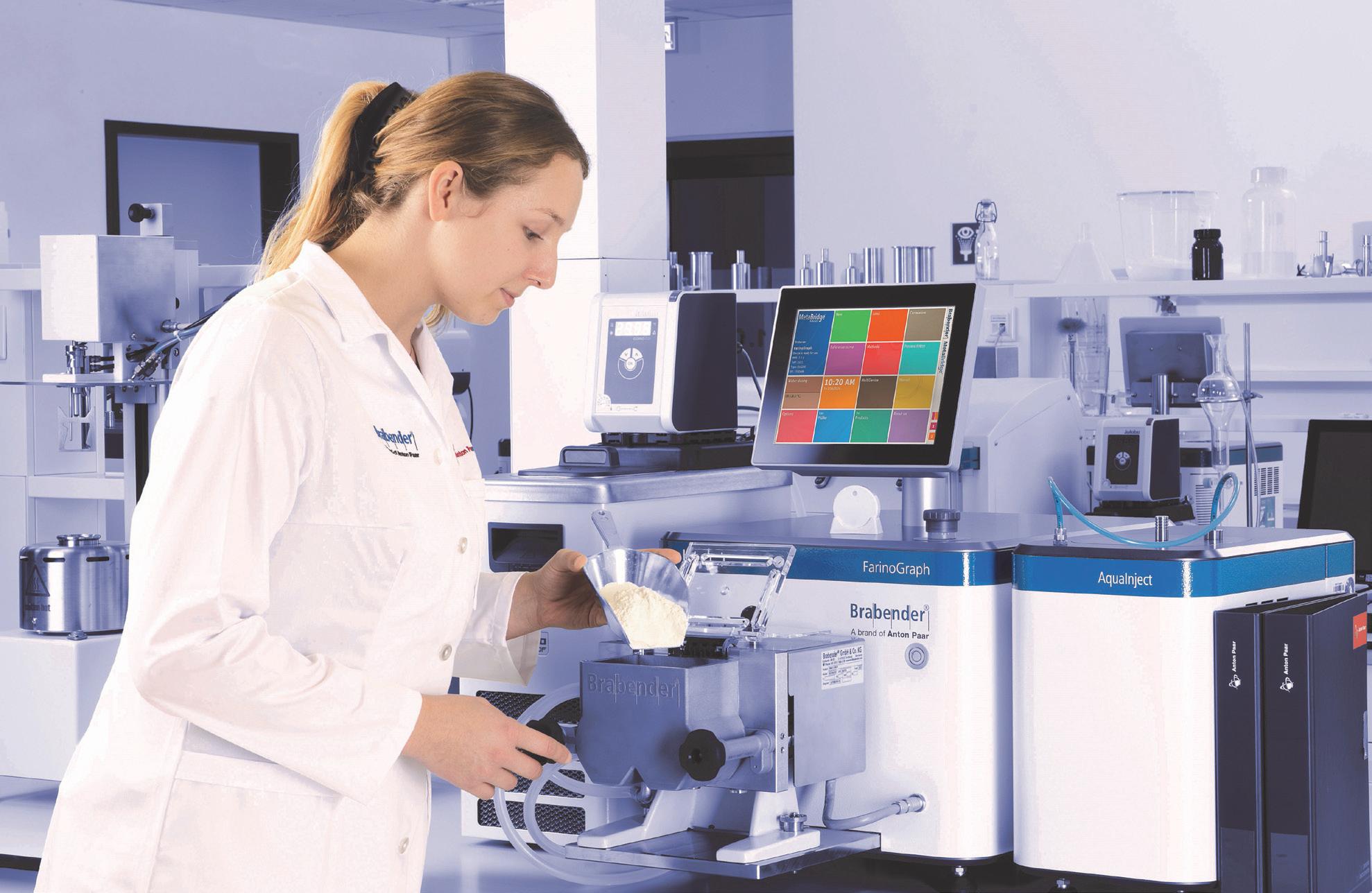
Brabender
Anton Paar, a global leader in laboratory and process measurement technology, announces a new chapter in the company’s journey with the acquisition of Brabender in August 2023.
This addition to the Anton Paar Group gives Brabender customers the added value of access to 37 global sales and service centers of Anton Paar. These centers offer not just local expertise for the vast Brabender product portfolio, but also guarantee direct access to demo instruments, detailed sample analysis, and tailored application advice. With more than 650 certified technicians spanning over 110 countries around the world, Anton Paar
promises fast and efficient support. Customers also have the possibility to select elements from Anton Paar’s comprehensive training program and adapt them to their needs.
Starting with March 1, 2024, Anton Paar Australia and Anton Paar New Zealand will take over the national sales and service network of Brabender products in respective countries and the Pacific Region.
Anton Paar understands that quick support is crucial: Within 24 hours, customers receive a first, personal response — from real experts, not automated systems. As Brabender’s strengths are integrated, the focus remains on innovative solutions and outstanding service. Anton Paar strives not just to fulfill the needs of its existing — and new — customers but to go beyond expectations and looks forward to fruitful partnerships with our customers.
Visit this page to learn more: https://www. anton-paar.com/au-en/anton-paar-torquetecfaq/#c80311
For further information, please contact:
Anton Paar Australia I Email: info.au@ anton-paar.com, Tel: +61 2 8315 4400
Anton Paar New Zealand I Email: info.nz@ anton-paar.com, Tel: +64 9 414 3190
Anton

There are many challenges associated with processing powdered food through a production facility, so how do you choose the right conveyor for the task?
Most industries have powdered versions of products or ingredients that will require transport throughout a production facility for further processing. Within the food processing industry, this encompasses a range of products including powdered sugar, flour, coffee, cocoa, food additives, protein concentrates and isolates.
However, there may be challenges in conveying these ingredients if the powder is sticky, hygroscopic or tends to cake or pack. Powdered food products and ingredients can also present health and safety hazards if they become airborne, are combustible or have explosive properties.
The quandary for processors is selecting the right conveyor from the options available, which can involve considering these factors as well as the material’s characteristics, flow rate and other requirements.
“While there are many conveyor options in the market, some are more effective at addressing issues like dust escape
and explosion risk as well as caking, packing and cleaning out residue between batches. Processors that minimise or eliminate these issues in the conveyor design will improve their safety, productivity and product quality,” said Don Mackrill, Regional Sales Manager at Automated Handling Solutions (AHS).
According to Mackrill, selecting the right mechanical conveyor can be a daunting task.
The most critical aspect to consider is the type of product being conveyed. Issues such as flowability, abrasiveness and cohesiveness should always be considered, whereas product degradation or the need to maintain a blend may be key aspects to consider in some applications.
The distances and rate of speed required to move the material is also a consideration. Does the conveyor need to pick up from or feed multiple locations or follow a complex route around other equipment or structures? Are there any special safety considerations based on area classification, traffic or other processes?

For food-grade applications, hygiene specifications and the ability to clean-in-place are key considerations.
According to Mackrill, there are several categories of enclosed conveyors that meet requirements, including aero mechanical, flexible screw and tubular cable drag designs. However, factors such as the type of and size of the powder and the specific challenges those materials create when conveyed often dictate the choice.
With powders, care must be taken to avoid the powder caking and clogging the conveyor, which can result in downtime and increased safety hazards during maintenance and cleaning.
An alternative is an aero mechanical conveyor, which uses evenly spaced discs to generate a high velocity air stream to fluidise and convey powdered products. Aero mechanical conveyors like the Aeroflow are totally sealed, tubular systems that are designed to ensure the dust-free transfer of powders without need of additional dust collection systems.
Unlike dilute phase pneumatic conveying systems, aero mechanical systems transport materials at lower speeds, so suspended particles have fewer shear forces. This minimises breakage and caking and packing inside the tube. Because aero mechanical conveyors have near-to-total product transfer capability, any residual product in the system between batches is also minimised. However, if caking or build-up occurs, aero mechanical conveyors can be easily disassembled for regular, quick cleaning.
For food processors, another priority is containing powdered products within the system, so they do not become airborne. When powder and bulk solids escape the conveyor, the “fugitive dust” can pose health, safety, sanitary and explosive risk, depending on the material and environment. According to OSHA’s (Occupational Safety and Health Administration) definition of combustible dust explosions, any combustible material can burn rapidly when in a finely divided form. If such a dust is suspended in the air in the right concentration, under certain conditions, it can become explosive.
“When conveying powders, understanding the requirements is critical because an explosion can injure people as well as destroy essential equipment, causing lengthy downtime. So, any conveyor system that handles such material must be designed and engineered to comply with all safety codes and have dust mitigation procedures in place,” said Gary Schliebs, a Process Engineer and Director of Plus One Percent…Engineered Solutions, a consulting firm that works in the food industry and globally markets food industry conveyor equipment.
When moving powdered material in a plant, an enclosed system can address concerns over dust containment to deter explosions and prevent environmental contamination.
“One of the best ways to prevent fugitive dust is to use an enclosed conveyor. This prevents spillage, the release of airborne dust, the need for additional clean-up of the surrounding area, as well as the potential for powder contamination from the external environment,” Mackrill said.
Flexible screw conveyors use rotating spiral or open helix screws within tubes to push product along and are mechanically dust tight and totally sealed during operation. Since air is not used as a conveying medium, there is no risk of dust contamination.
Tubular cable drag conveyors are also enclosed and use cables with discs attached at set intervals within a tube to gently pull powder from inlets to discharges.
Because sugar, grains, flour and other powdered food products can combust, it is critical that the conveyor system minimises or eliminates potential sources of ignition, such as sparks or fire. Improper maintenance of conventional open mechanical conveying systems can become an ignition source

since they use numerous moving parts. Bearings and out-ofalignment belt conveyors, for example, can be problem areas if they cause sparks or generate heat from friction.
Although enclosed, pneumatic systems can still create a “dust cloud” inside the tube, as well as on exit. Because tubular cable conveyors do not suspend material in high-velocity airstreams, less “energy” is imparted into the conveyance and the slower velocity reduces any friction and heat generated to well below an ignition point, limiting it about -12 to -6°C above ambient temperature.
Another way to mitigate dust accumulation is through sufficient cleaning to remove any potential powdered debris. For this, tubular cable conveyor systems have options for dry and wet cleaning to remove accumulations of dust and food residue. The Iowa-based company Oskaloosa has designed, engineered and serviced enclosed cable and disc tube conveyors for almost 50 years. It can provide cleaning accessories such as brush boxes, urethane wipers, air knives, in-line sponges and in-line bristle brushes, as well as fully automated CIP wet cleaning systems.
Although enclosed conveyors can be effectively used to convey powders in the food industry, the choice may be dictated by the specific product and size of powder.
Mackrill offers the following examples:
Sugar
Since powdered sugar is highly flammable and explosive, conveying system design should minimise this risk. In fact, due to recent industrial accidents, government regulatory bodies like OSHA and NFPA (National Fire Protection Association) have issued heightened regulations governing the handling of sugar. Furthermore, powdered sugar tends to pack and cake while conveyed. Like powdered sugar, granulated sugar is highly combustible and potentially explosive, and will ignite at high temperatures.
Enclosed aero mechanical conveyors are ideal for conveying large volumes of both powdered and granulated sugar to the mixer. Any dust created during conveying is contained within the conveyor, reducing the risk of explosions caused by static build-up and sugar dust clouds. In addition to being airtight, aero mechanical conveyors run quietly with minimal energy.
Flour
Flexible screw conveyors are an ideal choice for flour. The flexible screw conveyor’s only moving part, the spiral, continu-
ously mixes as it conveys. The conveyor can be configured with a drop out trap, quick release flanges and a reverse bung that facilitates hygienic flour conveying when switching between different batches of flour.
When conveying flour where degradation is a concern, an aero mechanical conveyor is also a good choice. An aero mechanical conveyor creates an airstream which moves flour up the tubes along with high-speed discs and a stainlesssteel cable. The material is transported gently through the airstream between discs, ensuring minimal handling and no dust generation due to the non-friable nature of flour. Any dust generated will remain suspended in the airflow together with the material and will not accumulate or come into contact with any potential ignition sources.
When conveying ground coffee or mixes, dust control is of utmost importance due to combustible properties and the need for operator safety. Since ground coffee is hygroscopic, it easily absorbs moisture and is prone to clumping. Maintaining the consistency and size of the ground coffee is also essential for brewing a good final product. In addition, conveying systems processing different types of flavoured coffees or mixes often must be quickly and thoroughly cleaned between product changeovers to prevent flavour cross-contamination.
With these considerations in mind, tubular cable drag conveyors are quickly becoming the conveyor of choice for coffee processors due to safe, gentle movement that minimises dust hazard and product degradation while still offering high throughput. These conveyors provide very versatile layouts and can be used to pick up coffee grounds from different sources for transport over long, complex routes to various destinations.
Given the variety of conveyor choices and powdered food ingredients that must be safely moved during processing, the potential risks warrant a careful examination of the available equipment options in consultation with experts.
In the end, implementing a conveyor that minimises the risk of dust escape and explosion along with problems like caking and packing can be the recipe for better health and safety as well as greater productivity and profitability.
AHS can provide a range of material handling equipment and industrial automation solutions, including Spiroflow material handling equipment and control systems integration, and Cablevey Conveyors tubular drag conveying systems for food and beverage and industrial applications.


Now in its seventh year, the Brisbane Economic Development Agency’s (BEDA) 2024 Future Food Global Accelerator program is designed to cater to businesses at the cutting edge of food and beverage innovation and help them expand into new global markets.
From emerging start-ups looking to accelerate growth to global titans exploring new opportunities, eleven Brisbanebased businesses will participate in this year’s program.
One of these businesses — FigJam & Co — is a second-generation Indigenous catering and condiments business, serving up Indigenous and bushland ingredients and flavours. With demand from Michelin-star restaurants and a range of new products on the horizon, FigJam & Co said the program will support the company’s ambition to expand domestically in Australia and export globally to markets like Singapore and Malaysia.
Jacob Davidson, FigJam & Co. Head of Strategy, said: “Working in an emerging market like bushfood, we are currently riding a wave of innovation and believe with the right connections and support we can achieve global success for FigJam & Co and Brisbane.”
Lord Mayor Adrian Schrinner said: “Brisbane’s proximity to international markets, advanced manufacturing and logistical capabilities, and network of national and global brands based locally continues to create incredible opportunities for local food and beverage businesses to grow and thrive.
“Through support programs like the Future Food Global Accelerator, we can make sure our local businesses have the right support to fast-track opportunities for global success.”
FigJam & Co will be joined by 10 other participants this year, including: FutureFeed, Gourmet Taste Creations, Hilton Foods, Lilly’s Little Lunchbox, Little White Goat Cheese, New Farm Confectionary, OMG! Decadent Donuts, Reclaim Foods, Ugly Duck Fine Foods and Yaala Sparkling.
Some of the other participants’ innovations include seaweed technology to reduce methane emissions in livestock and a freeze-dried goat feta that is designed to have an ambient shelf life of 18 months.
Hilton Foods, a protein processor and food solutions business, creates innovative new products and tech in the food sector, working across five categories: meat, seafood, vegan & vegetarian, easier meals and services. The business has more than 7000 employees and operates in 13 markets worldwide. CEO Mel Chambers said Hilton Foods was eager to network and learn alongside other participants.
“We look forward to hearing from leading experts and building connections with other Brisbane-based businesses participating in this program,” Chambers said.
The Global Accelerator program is designed to help companies pursue funding and distribution partners to expand their operations and explore new markets.
Since 2018, BEDA’s Future Food Initiative has supported more than 400 businesses, with JBS Foods Australia, Merlo and Priestley’s Gourmet Delights among past participants.
Participating businesses took part in an eight-week global readiness program in February facilitated by industry-leading experts and Queensland University of Technology (QUT).
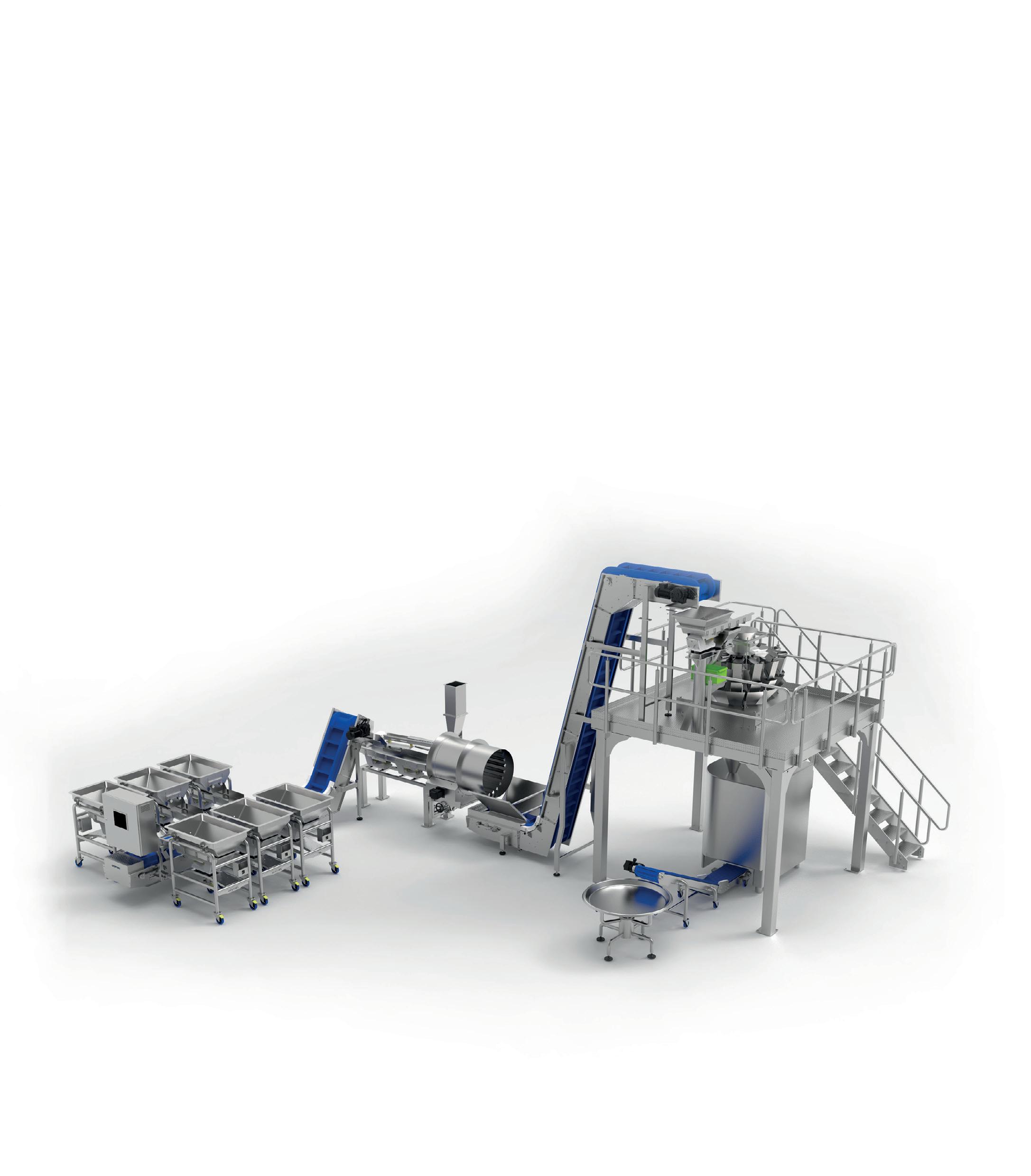
Until now, adding automation to your production line could be an expensive exercise. But Enmin’s new Generate+ systems changes all that. A range of affordable modular systems that slot easily into an existing line; reducing labour costs, boosting
Designed and built right here in Australia they feature the same quality, reliability and safety that Enmin is renowned for. Plus, they can be added to and extended as your business evolves.


Western Container Services has announced a simple innovation to its Sydney Depot — a multi-level monitoring gantry designed to enhance the safety and efficiency of powering and monitoring its 100+ powered refrigerated shipping container points.
In 2022, the depot expanded its electrical infrastructure, investing in a new 1400-amp electrical substation, which increased its capacity for powered refrigerated shipping container storage. However, the existing solutions for accessing and monitoring these containers, such as ladders, cherry pickers or forklift personnel baskets, were deemed inefficient and potentially hazardous.
Rick Johnson, Western Containers Managing Director, said, “Working at heights has long been a leading cause of workplace fatalities, with falls from ladders contributing significantly to these grim statistics. Our team sought to find a solution that would address both safety concerns and the efficiency of monitoring the containers.”
The solution was to modify 40′ shipping containers to create stackable gantries. The containers feature reinforced side panels with easy-access windows, power points along both sides and a dedicated power board at one end. Each level is also equipped with safety stairs, chains and railings to prevent falls, ensuring a safer working environment for the team.
According to Johnson, the goal was to provide the team with a safer way to work while improving the efficiency of its monitoring process.
Paul Zalai, Director of Freight & Trade Alliance (FTA), recently visited Western Container Services to witness the container depot operations first-hand. He was impressed by the company’s commitment to safety and efficiency and is looking forward to potential future collaborations.
As a longstanding container depot located at the gateway to the west of Sydney, this innovation aligns with Western Container Services’ vision of processing powered refrigerated shipping containers efficiently and ensuring timely delivery for businesses reliant on these goods. It is strategically located away from the congested Port Botany area, a gateway to the Western Sydney industrial precincts with easy access to the M4, M5 and M8.
Western Container Services
www.westerncontainers.com.au/
In the dynamic landscape of manufacturing, the mantra ‘buy in bulk and save’ has been a guiding principle for cost-conscious decision-makers. However, the practicality of this approach has often faced challenges, particularly when dealing with the incorporation of powders and granules from one-tonne bags into liquids using traditional mixing technology.
With over 40 years of expertise in mixing design, Mixquip has developed the Mixquip Series 620 High Shear Powder Liquid Mixer to help Australian manufacturers use costeffective bulk bags seamlessly in production processes.
Designed and manufactured in Australia, the mixer has the ability to completely disperse one tonne of sugar into a beverage stream in under 10 minutes. This example showcases the mixer’s efficiency and speed in the incorporation of powders into liquids.
Suitable for handling powders in cold or ambient temperature liquids, the mixer is designed to eliminate the need to expend energy on warming liquids to ensure thorough powder dissolution.
Manufacturers now have the option to use more cost-effective bulk bags, as the Mixquip Series 620-3 eliminates the need for liquid products like liquid sugar or caustic because the mixer allows for the incorporation of powdered versions of these ingredients and cleaning products.
The Mixquip Series 620-3 not only facilitates the rapid incorporation of bulk powders into liquids but also addresses common challenges associated with traditional methods. Undesirable ‘fish eyes’ or agglomeration can be eliminated as the high-shear mixer is designed to ensure a homogeneous blend, and a smooth and efficient production process. Mixquip Pty Ltd www.mixquip.com/



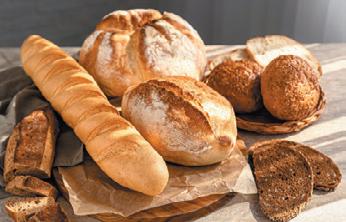





In 2024, the manufacturing industry is expected to be heavily focused on embracing advanced technologies, creating a highly connected, data-driven environment. The integration of information technology (IT) and operational technology (OT) plays a crucial role in this transformation.
Mei Dent, Chief Product and Technology Officer, TeamViewer, said, “The convergence of IT and OT is essential to optimise operational efficiency and embrace digital transformation. Manufacturers that fail to integrate these technologies may face significant challenges, including operational inefficiencies due to disjointed governance, slower adoption of new technologies and isolated data pools. Additionally, the lack of IT/OT integration increases cybersecurity risks, leaving manufacturers vulnerable to targeted attacks that exploit system weaknesses.”
The following trends are expected to shape the future of manufacturing:
1. Digital transformation and cloud computing Manufacturers are increasingly embracing digital transformation and cloud computing to improve operational agility. Cloudbased infrastructure facilitates rapid scalability, flexibility and cost optimisation, critical for maintaining competitiveness in a dynamic market. This shift is particularly relevant for manufacturers looking to optimise productivity while controlling technology expenditure, such as using cloud analytics for energy efficiency in production processes.
2. Artificial intelligence (AI), vision AI and generative AI
AI is revolutionising manufacturing processes with capabilities like real-time data analysis, intelligent automation and predictive maintenance. Vision AI, a subset of AI, is increasingly used for tasks such as defect detection and quality control. Another emerging AI field is generative AI, which is fostering innovation in product design and production optimisation, delivering quick access to information and product personalisation.
3. Automation and robotics
Industrial automation, including the use of collaborative robots (cobots), is increasing manufacturing efficiency. Cobots are designed to collaborate intelligently and safely with human workers. They represent a key component of industry 4.0, enhancing human abilities while maintaining safety. Unlike traditional industrial robots that operate independently and often require physical barriers for safety, cobots can share a
workspace with humans. They monitor the environment and co-exist with humans, making operations more fluid while reducing operational delays.
Sustainability has become a key driver of success in manufacturing. Efforts are being made to develop waste reduction capabilities and invest in technologies for product recycling. By adopting a circular economy model, manufacturers are focusing on creating products that are designed for longevity, repair and recyclability. This approach minimises waste, conserves resources and aligns with the growing consumer demand for environmentally responsible products.
5. Preparing for a smart factory future
A defining trend for 2024 will be the emergence and expansion of smart factories. These are highly connected and data-driven environments, leveraging the power of the Industrial Internet of Things (IIoT), AI and machine learning (ML). This technological integration is transforming traditional manufacturing processes, empowering manufacturers to optimise production, predict and prevent equipment failures, and tailor products to individual customer preferences.
The use of augmented reality is anticipated to expand further, being used for staff training and to address physical problems. With the aid of smart glasses and advanced AR software, individuals at the factory floor can receive guidance from professionals located remotely, facilitating step-by-step walkthroughs of various processes. This may help improve overall operational efficiency, minimise downtime and empower employees to refine and optimise their workflows.
“Throughout 2024, an increasing number of manufacturers are expected to channel resources into developing shop floor processes, leveraging operational data to transition their factories into smart factories. AR and mixed reality technologies will become increasingly important, particularly in complex fields such as aerospace and logistics.
“These technologies have the capability to enhance the physical world by superimposing digital information onto real-world objects and environments, which can significantly boost efficiency and training effectiveness within manufacturing settings. As these trends continue to evolve, manufacturers that embrace innovation and adapt to these changes will be well positioned to thrive in the competitive global marketplace,” Dent said.

UniFlow AireStream Fume Hoods are constructed of chemical-resistant, flame-retardant, non-metallic composite resin materials and feature a ‘unitised’ construction that does not require screws, bolts, rivets or metallic hardware for assembly. The fume chamber is moulded one piece with all corners coved. This series of fume hoods is UL 1805 certified and is offered in 48 ″, 60″, 72″ and 96″ widths in either constant air volume or restricted bypass models. The hood is equipped with a 36 ″ high extended view height, vector slotted rear VaraFlow baffle system, aerodynamic sash lift with perforated air-sweep feature and moulded-in belled outlet collar for reduced airflow resistance. The lighting is a vapour-proof LED strip fixture with a central switch, pre-wired to a single point junction box 115 V/60 Hz. The hood is shipped completely assembled and can include a wide selection of accessories that can be factory installed to meet specific needs. Work surfaces in a variety of materials and a choice of base cabinets including acid or flammable storage are optional as required.
HEMCO Corporation www.hemcocorp.com
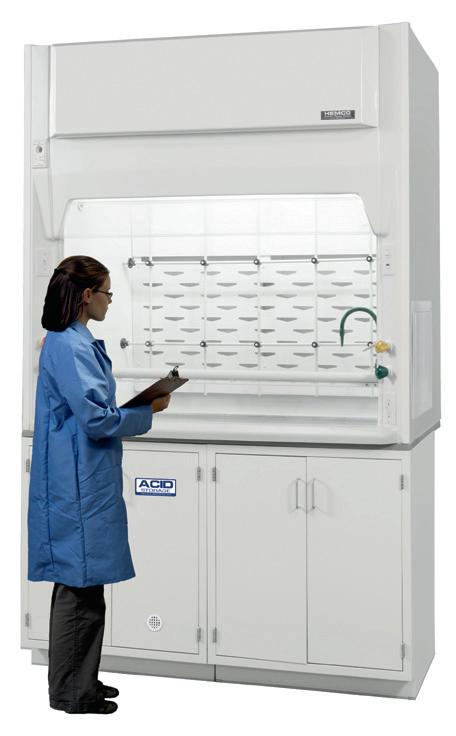


Coperion has developed the MEGAtex S7 cooling die for manufacturing plant-based HMMA (high moisture meat analogue) meat substitutes. Mounted at the discharge of the ZSK Food Extruder, this texturising unit gives the plant protein mass a dense, fibrous structure that is designed to closely resemble animal flesh.
With the cooling die, Coperion has developed a new discharge for HMMA production that allows for variable width and strength as well as various textures for meat substitutes. The device includes features that simplify handling and make both recipe and configuration changes possible with just a few quick adjustments.
HMMA is a plant-based intermediate product that is primarily used for ready-to-eat meals such as vegan chicken nuggets or ground meat. It contains 50–70% water and 30–50% plant proteins with less than 10% fat content. In the HMMA manufacturing process, proteinrich raw materials are first mixed with water and worked into a homogeneous mass in a ZSK Food Extruder. This mass is then pressed through the MEGAtex cooling die, where the meat-like texture is formed and a solid strand is discharged for further processing.
Characteristics of HMMA quality are the product’s texture and strength as well as the length and strength of the fibres. Coperion developed the new texturising unit in order to more precisely fulfil these quality requirements, and in particular to provide more flexibility to smaller companies, research organisations and startups.
The MEGAtex S7 achieves throughputs of 5 to 50 kg/h and can currently be combined with the ZSK Food Extruder sizes 18, 27 and 34. Additional sizes for higher throughputs will be available later.
Featuring a modular design, the cooling die consists of individual segments which can be combined as needed, depending on the requirements of the raw materials and the desired product structure.
It comes with interchangeable inlays that give the machine operator the flexibility to vary the strand width between 35 and 70 mm and the length between 10 and 15 mm. Just a few simple steps are all that is needed to open the cooling die and exchange the inlays.
Such easy handling is also an advantage when changing recipes or extracting product samples. With its innovative opening mechanism, the cooling die provides good access along its entire length. Moreover, product samples can be extracted at any time in any segment of the cooling die. It also features a hygienic design which reduces machine downtime for cleaning to a minimum, increasing the efficiency of the entire production line.
At the end of the die, there is a special cutter to facilitate quick sampling of HMMA at the discharge. The cooling die is mounted on rollers, making it mobile. These additional features make it flexible when frequently changing products, and suitable for development environments.
Coperion
www.coperion.com/en

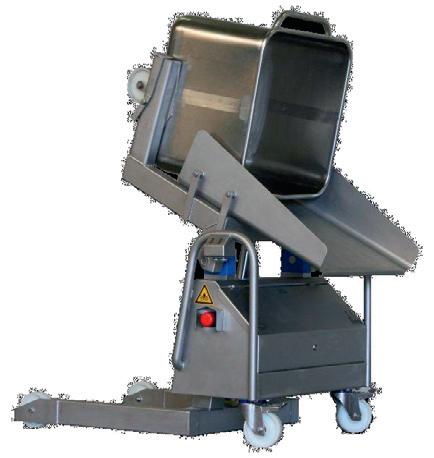



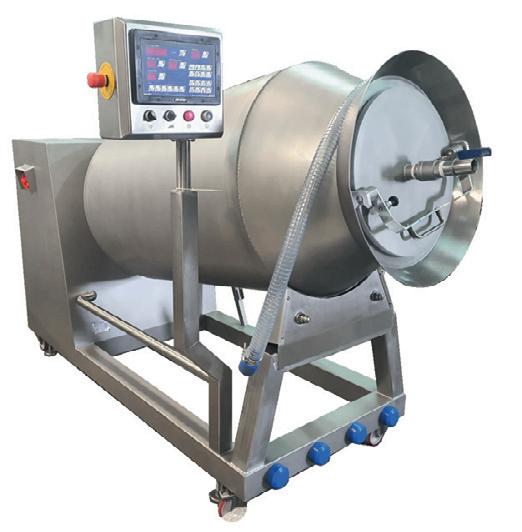







Key Technology COMPASS and VERYX optical sorters are designed to automatically remove product defects and foreign material from processed protein products, such as frozen chicken nuggets, chicken tenders, fish sticks, plant-based meat alternatives and more.
The sorters detect the colour, size, shape and/or structural properties of every object to identify and remove a variety of product defects including clumps of product, clumps of breading/batter and product that hasn’t been formed, cooked or coated correctly. Foreign material, such as plastic, metal, glass and paper, that may have been accidentally introduced to the production line is also removed. For processed protein applications, optical sorting is most often used immediately prior to packaging for final inspection but may also be used upstream to inspect incoming ingredients.
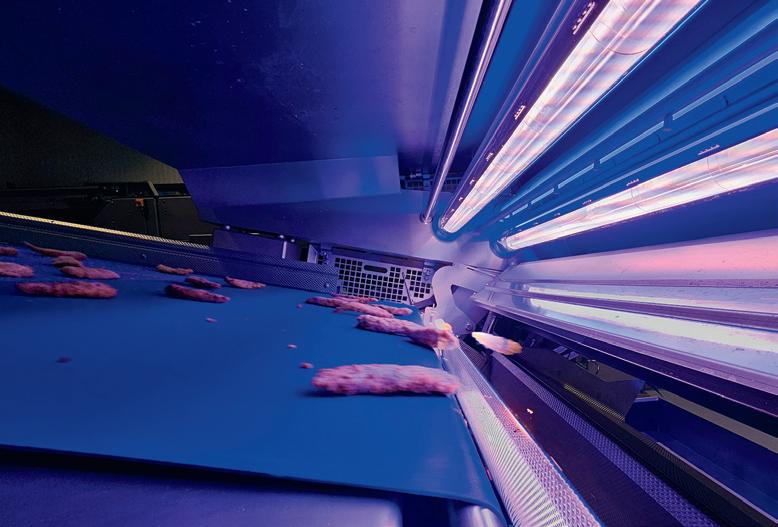
Each sorting system is customised by Key in a suitable size and configuration to address the processor’s product characteristics and line requirements. Key infeed and collection conveyors can be integrated with the sorter to gently move product and preserve its integrity while maximising sort accuracy. Optional conveyor screens are available to remove fines prior to sorting, if needed.
Engineered to satisfy the high sanitary standards required for protein processing, Key’s optical sorters feature open designs, sloped surfaces and more, to maximise equipment hygiene and ease cleaning.
Every COMPASS and VERYX sorter is equipped with Key Discovery, a data analytics and reporting software that enables the sorter to collect and analyse data about objects flowing through the sorter to reveal patterns that can help improve upstream and downstream processes.
Key’s optical sorters for frozen protein products are designed to reduce the need for manual inspection. Fast and accurate recipe-driven changeovers are designed to maximise production versatility and uptime while ensuring repeatable results. Operator qualification requirements allow a minimally skilled individual to become a proficient user of the system in less than one hour. Key Technology Australia Pty Ltd www.key.net

Featured by Interworld Electronics, the FABS-8B series is a range (7″~21.5″) of food-grade stainless steel fanless industrial panel PCs designed for harsh environments requiring a high level of hygiene. The FABS-8B series features a cost-effective, yet powerful Intel Celeron J6412 Processor, with up to 32 GB SoDIMM DDR4 RAM.
The FABS-8B series is housed in a fanless, rugged aluminium chassis with a 304 or optional 316 grade stainless steel front bezel that provides IP66/IP69K front panel water and dust protection.
The FABS-8B supports resistive touch, suitable for use with gloves or in areas where the display may be covered in liquid, dirt or dust, or projected capacitive touch that features multi-touch support and an anti-scratch surface. It also has the option of high brightness (1000 nits) and auto dimming.

The FABS-8B includes: 1 x RS-232/422/485, 2 x 2.5GbE LAN ports and 4 x USB ports (2 x USB3.2, 2 x USB2.0) as well as support for internal Mini-PCIe expansion modules supporting 4G or WiFi/BT. Furthermore, the FABS-8B also has a DisplayPort output which enables users to connect an additional monitor when required. Additional COM, LAN and USB ports can also be included.
The FABS-8B also supports Windows 10 IoT and Windows 11, DC 9~36 V power input and an operating temperature range of 0~50°C (optional -20~60°C). Support for both Panel and VESA mounting also makes the FABS Series convenient to install and allows the system to be ergonomically positioned for operator convenience. Interworld Electronics and Computer Industries www.ieci.com.au

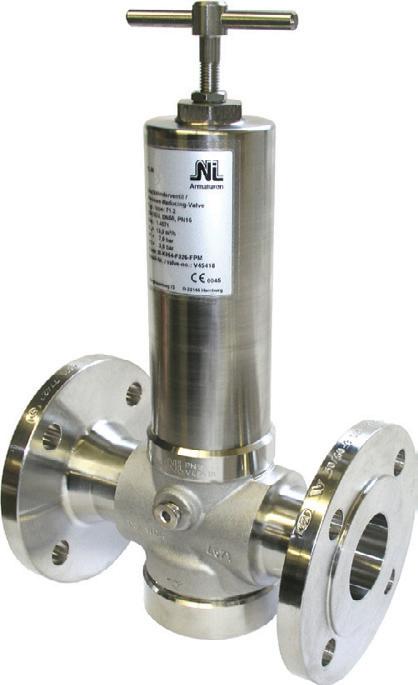

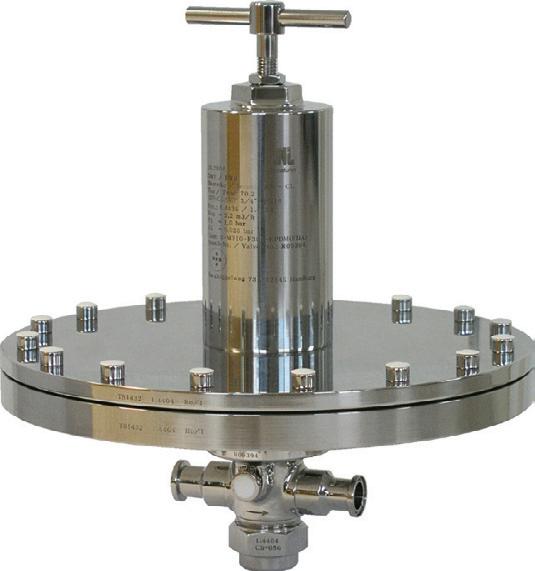
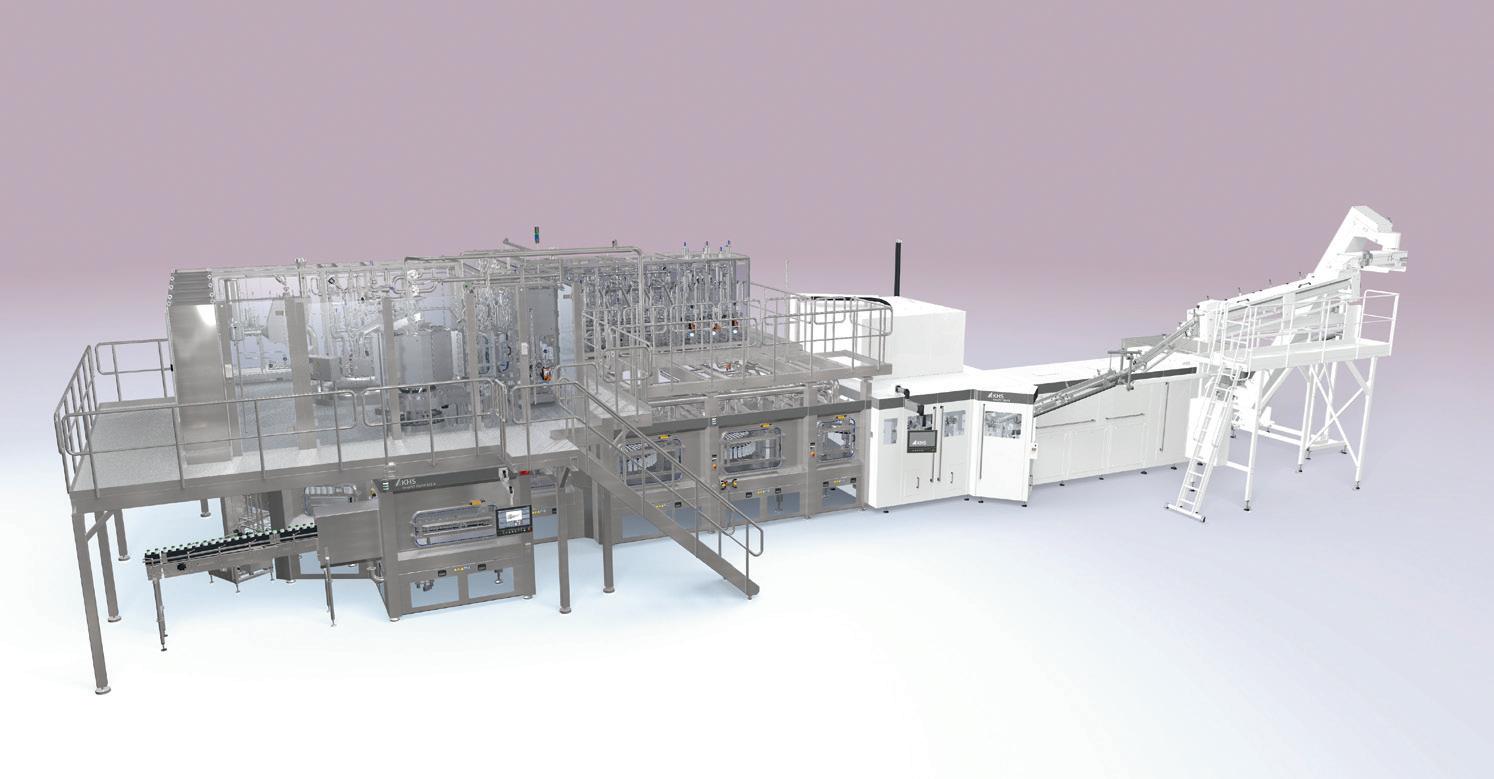
KHS has a range of solutions for PET bottle sterilisation and filling.
The KHS InnoPET BloFill ACF-R aseptic block combines the InnoPET Blomax Series V stretch blow moulder with the rotary Innofill PET ACF-R filler. The rotary aseptic block has a capacity of up to 36,000 1 L bph, achieving a sterility of log 6 inside the bottles. Unlike preform sterilisation, this bottle sterilisation can also be combined with the KHS FreshSafe PET coating system, offering additional barrier protection for sensitive beverages. This process gives bottlers more flexibility and greater availability during format changeovers.
KHS also has the latest generation of Plasmax coating technology, where a wafer-thin layer of chemically pure glass is applied to the insides of PET bottles. This protects sensitive products such as fruit juice, wine, beer, soft drinks, ketchup, sauces and other liquid foods from oxidation and loss of CO 2, while retaining the recyclability of the bottle.
KHS’s range of digital services will move to the ConnectApp that provides two extra benefits, including data-based transparency regarding the key line performance indicators and help with decision-making processes and support with system operation.
The first KHS ConnectApp function is the Guide module, which has interactive work instructions and a notification management system, helping to ensure trouble-free workflows during inspection and maintenance or when training new employees. All work steps can be documented with the app.
KHS Pacific Pty Ltd www.khs.com







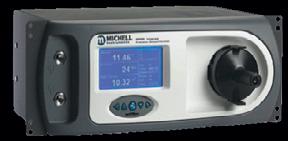



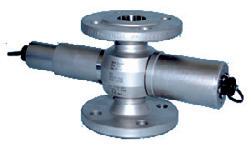




Traditionally, the more components you add to a process, the more complex it becomes. The Traceable Quality System (TQS) combines all functions in its central control, making operation as simple and safe as possible. Its modular design allows full integration of marking and verifying, labelling, weighing, metal detection and many more tasks for a variety of products.
With a variety of handling modules, the system will easily adjust to most product dimensions and packaging types. Whether it is made to fit directly after the filler or at the end of the packaging line, the result is that only 100% verified products move forward in the process.

Especially when looking towards the implementation of 2D codes on consumer goods for retail, TQS is designed to make users’ production futureproof. With one unit, users will be able to apply basic information like the ‘best before date’ and batch number, and also add a dynamic QR code. And a simple upgrade will even prepare users for full serialisation on item level.
Wipotec Australia Pty Ltd
www.wipotec.com






ICP Electronics Australia ICP DAS FR-2057iTA is an FRnet I/O module for industrial automation systems. With its 16-channel isolated digital output (DO), which operates on a source output basis (PNP, 30 VDC), this module is designed for applications requiring precise control and safety. The isolation on the DO channels and communication line is designed to ensure robust protection against electrical noise and interference.
A feature of the FR-2057iTA is its built-in wire-saving FRnet DI/DO control mechanism, which facilitates high-speed data transmission. This module eliminates the need for extensive software overhead for protocol processing, thanks to its simple synchronisation mechanism and support for broadcasting, allowing easy 1:n data transmission.
The module can also simplify system design and operation. It can duplicate output easily and has fixed I/O scan-time and synchronisation for precise control and timing across the network. Users can daisy chain several FR-2000 series modules, including the FR-2057iTA, through the FRnet interface, extending remote I/O control capabilities to PCs, programmable automation controllers (PACs) and programmable logic controllers (PLCs).
ICP Electronics Australia Pty Ltd www.icp-australia.com.au

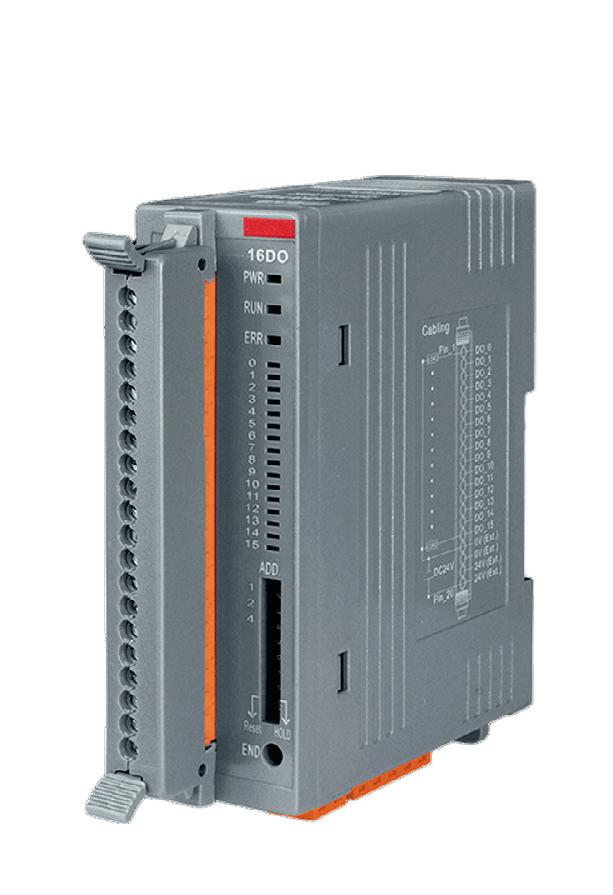
Field spot-checking is a common way to determine the measurement accuracy of a fixed measurement instrument between calibration intervals. However, it is important to understand that spot-checking is different from field calibration. The Vaisala eGuide provides a brief outline on some of the differences.
Spot-checking and field calibration are similar in that they both use a reference standard to verify the measurement against the unit under test.
Spot-checking is a less time-consuming process than calibration, in part because the calibration process can include as-found data, adjustment (if necessary) and as-left data, whereas spotchecking is a verification that the unit under test is still within specification. It is helpful to remember that the calibration process deals with the instrument involved, not the measurements it produces. Field calibration processes should be performed under normal process conditions using standard laboratory determinations of sample concentration.
Like calibration, quality guidelines should have defined intervals for spot-checking. Guidelines should be defined beforehand with pre-established limits to determine potential actions based on results of the checks.
Spot-checking can also be part of a verification process because it is designed to ensure that measurement output on a process sensor is within specifications. Simply stated, in spot-checking, verification and field calibration, users are comparing measurements. Ideally, the device used to check is known to be accurate based on its calibration status. However, there are differences in spot-checking, verification and calibration, most importantly, in calibration users may make decisions and adjustments based on comparison.
Vaisala Oyj www.vaisala.com/en/

Scientists are researching and developing new technology to build a prototype robot arm that will automate the repetitive parts of banana processing, which could result in efficiencies for the banana industry.
Delivered through Hort Innovation and led by QUT in collaboration with Future Food Systems, the Advanced Robotics for Manufacturing (ARM) Hub and BNL Industrial Solutions, the $2m program will use technology such as computer vision and machine learning to provide the banana industry with a solution for the process known as banana ‘de-handing’.
Banana de-handing is the process of separating the banana fruit from the stalk and it is a repetitive and physically demanding activity that if automated, could improve processing efficiencies and provide a valuable integration point for robotics systems.
Hort Innovation chief executive officer Brett Fifield said, “If successful, this type of technology could also be applied to other crop types to support
Aussie fruit and vegetable supply.”
QUT lead researcher Dr Chris Lehnert said, “Over the next two years we will build the prototype robot for banana dehanding and then integrate that robot with a vision system that allows it to ‘see’ what actions it needs to perform.
“The prototype will then be trialled at the ARM Hub’s testing facility where we will conduct further testing and allow growers and potential investors to come and see it in action.”
Australian Banana Growers’ Council chief executive officer Leanne Erakovic said the banana industry was keeping a close eye on the project.

“Currently there is no commercially available solution for the banana industry,” Erakovic said.
“Banana de-handing is a core process in all banana packing sheds, so any efficiencies that could be realised through the use of robotic technology would likely have a significant impact on growers’ processing costs. A win-win for our industry and for consumers.”

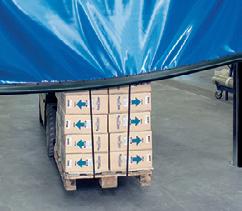






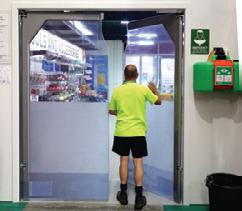
Developed in response to the rising global demand for plantbased milk drinks and products, the HRS DSI Direct Steam Injection pasteuriser or steriliser is proving popular with manufacturers around the world.

The benefit of sterilising using direct steam injection is the speed of the process, with sterilisation temperatures of 100 to 145°C being reached in around a second, much quicker than the fastest heat exchanger systems. The faster the product is heated and cooled, the less impact the heat has on the product — so that product taste and colour are not damaged while microorganisms and spores are neutralised.
Grain-based products such as oat milk also benefit from the additional dilution with water which the steam injection provides.
The HRS DSI injects food-grade steam into liquid products, providing an instant increase in the thermal process. Cooling
of the product is then carried out in a flash evaporation/condensing vessel, with the process carefully controlled to ensure the volume of water removed correlates with the amount of steam added.
The HRS DSI system includes double balance tanks, a water tank, and a dualpurpose clean-in-place (CIP) tank for batch cleaning and a second water tank which is used when water to product changeover is performed. As with all HRS Corrugated Tubular Heat Exchangers designed for use in the hygienic industries, the DSI is fully clad in stainless steel for cleanability and has the option for insulation to prevent the inefficient loss of energy.
Direct steam injection isn’t just limited to the production of plant milk. It is also suitable for a range of extended shelf life (ESL) dairy products as well as low-viscosity products with small particulates such as soups and sauces, non-dairy creams, and starch-based products.
A number of HRS DSI units are now operational around the world, and the hygienic stainless steel DSI can be supplied on its own, or with heat exchangers for pre-heating and final cooling to provide a complete UHT (ultra-heat treatment) system for plant-based products.
Located in Melbourne, HRS Heat Exchangers is part of the EIL Group (Exchanger Industries Limited) which operates at the forefront of thermal technology. HRS offers innovative heat transfer solutions worldwide across a diverse range of industries. With more than 40 years’ experience in the food and drink sector, specialising in the design and manufacture of an extensive range of turnkey systems and components, incorporating our corrugated tubular, and scraped surface heat exchanger technology, HRS products are compliant with global design and industry standards. HRS has a network of offices throughout the world: Australia, Canada, New Zealand, UK, Spain, USA, Malaysia, and India; with manufacturing plants in India, Spain, and Canada.

HRS Heat Exchangers
www.hrs-heatexchangers.com/anz info@anz.hrs-he.com

As the food landscape evolves to reflect technological advancements and cultural and economic shifts, the International Food Information Council (IFIC) has presented its annual food trends forecast.
1. Mood on the menu
The idea that food influences physical, emotional and mental wellbeing is gaining more and more traction.
In 2024, IFIC forecasts a greater emphasis on how nutrition can support mental and emotional health, including supplements focused on women’s health, as well as foods and beverages to support mood, and assist with stress reduction and sleep. The demand for wellness-related products will also lean on the use of botanicals incorporated into teas, seltzers and certain foods.
2. Function-focused hydration
Functional beverages will continue to take centre stage in 2024, redefining hydration with clean caffeine, drinks to support better sleep and added pre- and probiotics for gut
health. According to IFIC’s Consumer Insights on Gut Health and Probiotics Survey, of those who try to consume probiotics, one in four Americans say they commonly seek them out in wellness drinks. Similarly, among those who try to consume prebiotics, 23% seek them out in wellness drinks.
Water stewardship will also matter more in 2024, with consumers on the lookout for foods and drinks that require less water to grow or produce.
3. Plant-based innovations and protein snacking
While plant-based proteins aren’t new, the amalgamation of protein-fortified products and protein-focused snacks is a newer trend. Plant-based food alternatives will be taken to new heights with plant-based seafood.
Products fortified with protein, such as rice, pasta, baking mixes, nut protein powders and snack foods will trend in the market. The IFIC 2023 Food & Health Survey ranked highprotein as the number one eating pattern at 18%, followed by mindful eating at 17%, calorie-counting at 12%, clean eating at 12% and intermittent fasting at 12%.
4. Rise of third-culture cuisine
Third-culture cuisine, celebrating the plurality of different cuisines and identities, will be on the rise. From restaurants to cookbooks, this trend lends itself to the renaissance of a commonly maligned ingredient: monosodium glutamate (MSG). MSG’s historical baggage is being unpacked and re-examined, as myths surrounding it are being debunked by scientists.
“MSG has been unfairly demonised for far too long. We’re predicting consumers will continue to re-evaluate its place in the kitchen, especially those looking to reduce sodium while maintaining flavour,” said Tony Flood, IFIC’s Senior Director of Food Ingredient Communications.
In 2024, there will be a heightened emphasis on transparent food labelling. Labels such as “clean”, “cold-pressed” and “fermented”, which are associated with healthiness, will be at the forefront.
The most common attributes consumers believe define a healthy food are “fresh” (37%), “low in sugar” (32%) and “good source of protein” (29%), according to the IFIC survey.
6. AI on the plate
In an increasingly online world, consumers are looking to the digital universe for information on health, nutrition, and food safety. Consumers will increasingly be using ChatGPT or other AI functions to improve eating habits, answer questions about food safety and nutrition, help craft meal plans and more.
IFIC predicts much of AI’s influence will also reside behind the scenes with the potential for more resilient supply chains, food waste reduction, precision farming techniques and innovative product formulation.
7. Swipe, like, eat
Social media-induced snacking and cooking trends are expected to continue into 2024. IFIC research has found in its survey that 51% have tried a new recipe because of social media, 42% have tried a new brand or product, 29% have tried a new restaurant and 28% have re-evaluated their relationship with food. Six in 10 say they have made healthier choices as a result of information they see on social media.
Image credit:

Forsea Foods, a cell-cultured seafood startup, has unveiled its first prototype of cell-cultivated freshwater eel. It has replicated the traditional Japanese unagi eel ( Anguilla japonica ) featuring the same texture and rich flavour as real eel.
The startup has been working with executive chef Katsumi Kusumoto to create two popular traditional Japanese dishes — unagi kabayaki (marinated grilled eel over rice) and unagi nigiri. Kusumoto runs the vegan restaurant SAIDO in Tokyo.
The company has achieved a working proof of concept that embodies the sensory attributes of real eel meat and is now preparing to scale up. In the collaboration, Forsea contributed its novel technology for cell-cultivating eel cuts, while Kusumoto contributed his culinary mastery to refine the product.
“Unagi is an enduring favourite in Japan,” Kusumoto said. “Its timeless appeal, however, is impacted by a growing awareness among the Japanese population of the need to take a more sustainable approach. It’s been a thrilling journey to join forces with emerging innovators, and working together to deliver the traditional unagi indulgence with a clear eco-conscience.”
Forsea was founded in 2021 with a mission to put a stop to depleting seafood populations by developing cultivated alternatives. Eels have become endangered due to overfishing, with the meat popular in Asia, Europe and the US.
Beyond its contribution to ocean conservation, Forsea’s cell-cultivated eel is designed to provide a nutritious alternative that is free from antibiotics, hormones or ocean pollutants.
Forsea’s proprietary method for culturing seafood features its application of organoid technology which allows for the crafting of 3D microtissues composed of fat and muscle. These spontaneously differentiate into edible cells, mimicking the natural process of cell formation. The cell lines self-organise into tissue structures without the need for scaffold support, simplifying the production process and enhancing scalability.
The product is expected to be ready for commercial launch in 2025.
The US Food and Drug Administration (FDA) has approved the use of Jagua (genipin-glycine) Blue, releasing various natural colour opportunities in blue, green, purple and brown. The pigment is derived from the jaguar fruit and is responsibly sourced in Colombia from small farmers and indigenous communities.
The announcement marks an achievement for Ecoflora Cares, the Certified B Company which developed and patented the technology and production process as well as petitioned for the product’s approval. Jagua Blue, which comes from the fruit of the jaguar tree, is claimed to be a safe and vibrant blue colour that can be blended with other natural colours to create vivid shades. This is said to be the first acid-stable natural blue to be approved by the FDA, and is the only Jagua blue approved.
Oterra will collaborate with Ecoflora Cares and leverage its own scientific and application expertise to introduce and grow Jagua Blue in the US food and beverage market.
Mads Winther Dehlsen, Oterra CEO, said, “This partnership is an example of our Together towards Natural sustainability strategy put into action. It’s answering the food and beverage market’s longstanding need for a robust natural blue. Ecoflora Cares’ expertise is a perfect match for Oterra’s, and together we’re excited about this unique natural blue that meets the needs of our customers, their consumers and the planet.”

Ecoflora Cares has developed sustainable supply chain solutions for this Colombian grown fruit. The jagua trees are under agroforestry and silvopastoral plantations as a nature-based solution. In its supplier development program, Ecoflora Cares has provided technical accompaniment, family mentoring and supplier knowledge to the farmers and indigenous communities who cultivate the jagua.
Luc Ganivet, Oterra Chief Innovation Officer, said, “Given its high colour concentration and its robustness towards heat, light and acidity, Jagua Blue is an easy-to-use, cost-effective natural blue. It means manufacturers can now create natural shades of green and purple that were previously impossible to achieve without using artificial colours.”
GoodMills Innovation Slow Milling range provides a clean label product portfolio for large-scale bakery products.
The ingredient range is designed to allow traditional artisanal bakery products to be replicated on an industrial scale. Such large-scale production allows for improved cost-efficiencies, yet still fresh and visually appealing products on supermarket shelves.
Suitable for industrial and retail bakeries, the range provides a selection of ingredients for artisan baking — including products such as Ferment'tic, Kastanienerbse and Wood-fired Malt.
Ferment'tic is a natural baking improver that is designed to enhance dough handling, prolong freshness and support the creation of products that have a Mediterranean-style moist crumb with large holes and crispy crust.
Kastanienerbse is a clean label ingredient derived from roasted yellow pea. It is designed to provide a nutty flavour, firm bite and moist, rich crumb. It is also suitable as a substitute for soy groats (soy is often linked to GMO issues), replicating their taste and texture.
Wood-fired Malt is designed to provide the aromatic flavour typical of goods baked in a wood-fired oven.
All of the products are designed to address growing consumer preference for artisan-style bakery items, yet also allow for large-scale manufacture.
GoodMills Innovation’s Slow Milling portfolio is suitable for bake-off stations and mass production. GoodMills Innovation www.goodmillsinnovation.com/en

Foodtech startup Better Juice is collaborating with Ingredion, a global provider of specialty ingredients to the food and beverage industry. Ingredion’s venture investment arm, Ingredion Ventures, will lead the Series A funding round for Better Juice, which will help to fast-track its entry into the US juice market.
Better Juice’s sugar reduction technology is designed to remove simple sugars in juice-based beverages, concentrates and other natural sugar-containing liquids. The enzymatic technology can convert sugars into non-digestible compounds, such as dietary fibres and non-digestible sugars, while maintaining the natural profile of vitamins, minerals and organic acids in the final product.
Nate Yates, Sugar Reduction Business Leader at Ingredion, said: “The Better Juice technology adds a completely new dimension to our portfolio of sugar reduction solutions for food and beverage brands on a mission to meet increased consumer demand for less sugar. This technology also provides manufacturers with more options to successfully reduce sugar without compromising on great taste or nutrition.”





ColloidTek has developed the Collo Analyzer that can provide a method for real-time liquid process quality monitoring for the food and beverage manufacturing industry.
Based on EMF sensors and machine learning, the technology detects various contaminants and identifies potential risks in liquid processing with a single real-time measurement and instant, inline analysis. It can provide food and beverage manufacturers with information about the quality of their products at any stage of production.
Traditionally, quality control in the food and beverage industry is based on collecting samples and sending them to the laboratory, where the results arrive after several days or even weeks. However, this device can provide an instant, inline analysis of the quality of the liquid.
The test takes just 2 s and the measurement can be done at the site manually by dipping the sensor into the product or inline straight from the pipe. There is no need to send samples anywhere; the results are instantly available thanks to the EMF technology and the advanced algorithms that power the analyser.
It can be used with thick liquids, like honey, as well as transparent or non-conductive liquids, such as vodka or milk protein concentrate. Only one device is required to measure the quality of all the liquids in the production and it can simultaneously detect multiple risks or deviations.
The device is designed to allow manufacturers to take immediate corrective actions when deviations are detected, which can help to reduce the risk of recalls and ensure that every batch of products meets the highest quality and safety standards.
ColloidTek www.collo.fi


IFF has embarked on a collaborative research initiative with Unilever and Wageningen University & Research (WUR) in protein-flavour interactions to address flavour challenges in plant-based meat alternatives.
In plant-based meats, plant proteins can create beany offnotes and lingering alternatives, which manufacturers mask with a combination of flavours; however, this can result in undesirable aroma characteristics.
In response to this challenge, IFF and Unilever have launched a four-year research project, working with scientists from WUR in the Netherlands. Their primary objective will be to explore the ways flavours bind to protein molecules with the goal of recommending novel flavouring strategies that elevate the sensory experience of plant-based meat alternatives.
The project targets areas within flavour compositions that hold the greatest promise for success, drawing on IFF’s research in protein purification and natural food flavouring.
JUNE 25 -26
ICC SYDNEY

30+
SESSIONS
EXPERT SPEAKERS



FUTURE FOCUSED
ACCREDITATION MATTERS
GLOBAL TRADE
NETWORKING PERSONAL & DEVELOPMENT
HEALTH MATTERS

VALUE FOR MONEY
The Australian Parliament’s House Standing Committee on Agriculture has taken the first step towards strengthening Australia’s food systems by releasing a report of sustainability recommendations after a year-long inquiry into food security.
The National Food Waste Strategy Feasibility Study reported that Australians create around 7.6 million tonnes of food waste each year which costs the country’s economy $36.6 billion annually. Additionally, with 2,600 gigalitres of water and 25 million hectares of land used to grow wasted food, it’s clear to see how the current food landscape is unsustainable in the long term.
Addressing Australia’s food waste is a complex challenge — one that concerns all parts of the supply chain, from paddock to plate. While it’s easy to place the responsibility
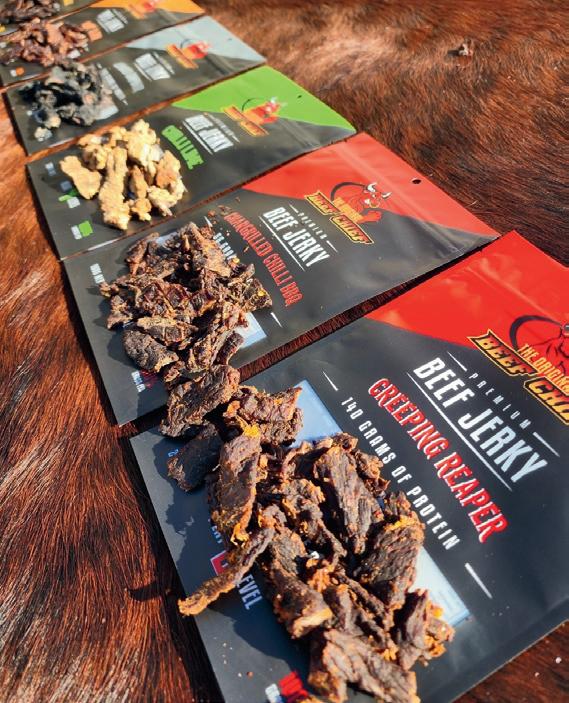

on individuals and their actions, it’s no secret the most important step towards a sustainable food future needs to be taken by the government and relevant industries implementing systemic change.
The development of a National Food Plan was outlined by the Australian Food Story: Feeding the Nation and Beyond report, with an emphasis on improving food production processes. With Australia producing substantially more food than its population consumes, it’s safe to say that there’s plenty of room for food manufacturers to start prioritising quality over quantity. That’s where small-batch production comes in.
As the name suggests, small-batch food production is about producing smaller quantities of a product at one time. This means producers have greater control over the quality of their product, require fewer production resources compared to mass manufacturers, and produce less waste as a result. So when it comes to sustainability, small-batch producers are ahead of the game.
Robert Hall, founder of The Original Beef Chief, has been at the forefront of small-batch production since the inception of the beef jerky brand in 2018. His beginnings as an Australian Army infantryman saw him experimenting with different marinades, cooking times, and techniques after being unimpressed by the quality of the mass-manufactured jerky provided in the army sustenance packs. When he started his business years later, there were no two ways about it — he would focus on small-batch production with the promise of 100% Australian-made.
Hall takes pride in his promise to provide authentic beef jerky made from grass-fed Australian cattle. He relies purely on Australian suppliers, with nothing being imported, and champions supporting local at every turn. Nothing goes to waste in the production process either. “We use every part of the beef. Normally what happens is once the fat is trimmed it’s thrown out. What we do is use it by mixing it in our droewors,” Hall says.
When considering the future of food production, Hall said: “You’ll never get rid of mass production completely. That’s not possible. But there needs to be government support to promote and market smallbatch producers to get them at the front of consumers’ minds.”
The future of food manufacturing depends on a shift like this; moving away from mass manufacturing where possible and supporting small-batch producers who emphasise premium ingredients and sustainable practices.
The path to prioritising small-batch production of food won’t be an easy one, but it’s time we start savouring the flavour of sustainability, and to do that we need to start taking steps towards implementing systemic change, with the report and its recommendations providing a solid place to begin.
Original Beef ChiefKerry has released its 2024 Taste Charts, A World of Future Tastes to the global food and beverage community. A culmination of Kerry’s year-long research, the series of charts was created separately for 13 individual regional markets, including 30 countries in Asia Pacific, Middle East & Africa (APMEA).
The charts list mainstream, key, up-and-coming and emerging tastes across five food and beverage categories, and provide an in-depth analysis of the flavours, ingredients and trends that will shape innovation in the food and beverage sector in the year ahead and inspire product and menu developers worldwide.
To illustrate today’s pace of innovation, Kerry researchers conducted a deep dive into the lifecycles of two long-popular flavours — orange and chocolate — and examined how these mainstream ingredients are evolving into all manner of inventive tasty product offerings around the world. These two case studies demonstrate how popular and traditional tastes worldwide are fusing into new, innovative applications as brands source, combine and recombine flavours and ingredients from other places.
Across Australia and New Zealand, international cuisine flavours are influencing the market. Teriyaki has shifted from “Up & Coming” to “Key” under Savoury. Meanwhile, matcha on the Australian Sweet chart and gochujang across the Australia and New Zealand Savoury charts have gone from “Emerging” to “Up and Coming”.
Other top insights for 2024 flavour innovation in Australia and New Zealand:
• Yuzu is gaining traction as an emerging flavour in both Australia and New Zealand across multiple categories, from Savoury and Salty Snacks to Hot and Cold Beverages such as Yuzu low ABV wines and alcoholic beverages.
• In Savoury and Salty Snacks, various cheese flavours are becoming more popular like aged vintage cheddar and blue cheese, while premium Savoury flavours like Truffle and Black Garlic are emerging.
• Smoke & Grill profiles continue to be mainstream in the Savoury and Salty Snacks space, while specific smokes including Mesquite, Applewood and Hickory BBQ smoke are gaining attention.
• Citrus and fruit flavours continue to trend. Raspberry is more mainstream while cherry is rising in popularity. Among citrus flavours, lime continues to be a favourite, and blood orange, calamansi and tangerine have appeared in the Up & Coming or Emerging space.



Across wider Asia Pacific, the flavour scene remains vibrant. Commenting on the 2024 Asia Pacific (APAC) Taste Charts, Avinash Lal, Market Research & Consumer Insights Director, Kerry Asia Pacific, Middle East & Africa, said: “APAC is a colourful flavour tapestry, constantly evolving and influenced by diverse cultural traditions, emerging trends and evolving consumer preferences. Consumers are also rediscovering the magic of their own culinary heritage, seeking out unique regional ingredients and flavour profiles. Think calamansi-infused yoghurt in the Philippines or black sesame latte in Japan.”
Lal added: “Young consumers are craving bold and unusual flavour combinations, driven by social media’s influence and a desire for novelty. This opens opportunities for sweet-savoury pairings like bacon milkshakes, coffee infused with black garlic and chocolate bars with wasabi. The plant-based revolution is also taking off, leading to new demand for creative flavour solutions in meat and dairy alternatives, such as mushroom jerky in Australia and jackfruit rendang in Indonesia.”
Soumya Nair, Global Consumer Research and Insights Director at Kerry, observed: “Consumers want tasty new innovations or flavours they may have experienced while travelling. We are seeing many unique flavour intersections in foods and beverages. Although rapidly changing times can present great challenges, they also provide an unparalleled opportunity for brands to catch a trend on the rise. The Kerry 2024 Taste Charts are a valuable tool for the food and beverage industry to navigate the new taste environment for products.”
The charts can be downloaded from the Kerry website: www.kerry.com.
Frozen treats and biscuit-flavoured hot cross buns for Easter as well as vegetable powder and low-carb beer are some of the products hitting the shelf.

Biscuit-flavoured hot cross buns
Coles has partnered with Arnott’s to spice up its Own Brand hot cross buns this Easter — Coles Arnott’s Iced VoVo Inspired Hot Cross Buns and Pizza Shapes Inspired Hot Cross Buns will be available for a limited time.
Peters Ice Cream and Cadbury have teamed up to launch a range of Easter treats into the ice cream freezer. The range includes the new Cadbury Creme Egg tub and the Cadbury Creme Egg chocolate-coated sticks. www.cadbury.com.au
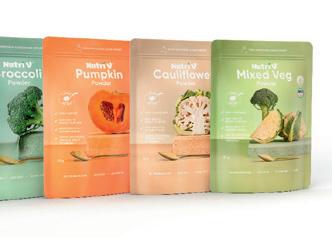

Nutri V has launched a range of Australian grown, 100% pure vegetable powders that repurpose imperfect broccoli, cauliflower and pumpkin. Each 70 g pack of broccoli powder has the equivalent of approx. 750 g of broccoli and each 70 g pack of cauliflower powder is the equivalent of approx. 750g of cauliflower. www.nutriv.com.au
Grumpy Bums is a range of bake-at-home products without added sugar, sweeteners or refined sugars. It comes in three flavours of mini muffin mix — apple & cinnamon, banana bread and strawberry yoghurt — as well as a banana muesli cookie mix. grumpybums.com.au


Sunrice has released a range of protein chips, designed to keep you feeling fuller for longer. The range is available in two flavours: Barbeque and Sour Cream & Chives. www.sunrice.com.au
James Squire has released James Squire Stride, a low-carb pale ale with only 3.6 g of carb per bottle. The beer is made from 100% grain ingredients, using Australian Pale and Munich Malts with a dash of wheat. Tangerine and tropical stone fruit notes form the aroma while Mosaic and Galaxy hops deliver hints of passionfruit and citrus. www.jamessquire.com.au

Westwick-Farrow Media
A.B.N. 22 152 305 336 www.wfmedia.com.au
Head Office
Unit 5, 6-8 Byfield Street, North Ryde Locked Bag 2226, North Ryde BC NSW 1670
Ph: +61 2 9168 2500
Editor: Carolyn Jackson wnift@wfmedia.com.au
Acting Publishing Director/MD: Janice Williams
Art Director/Production Manager: Linda Klobusiak
Art/Production: Marija Tutkovska
Circulation: Dianna Alberry circulation@wfmedia.com.au
Copy Control: Mitchie Mullins copy@wfmedia.com.au
Advertising Sales Manager
Kerrie Robinson
Ph: 0400 886 311 krobinson@wfmedia.com.au
If you have any queries regarding our privacy policy please email privacy@wfmedia.com.au


